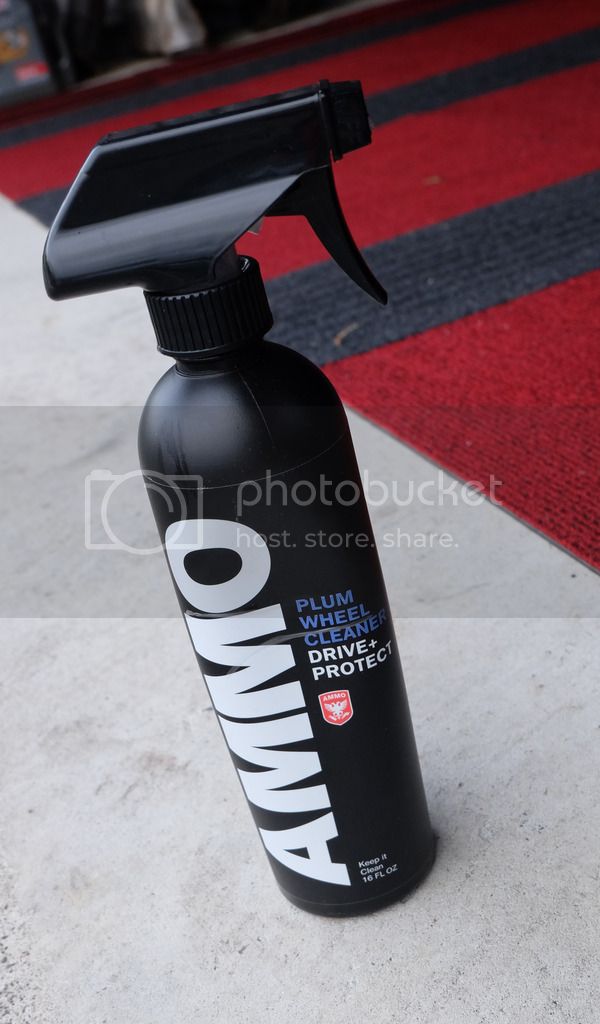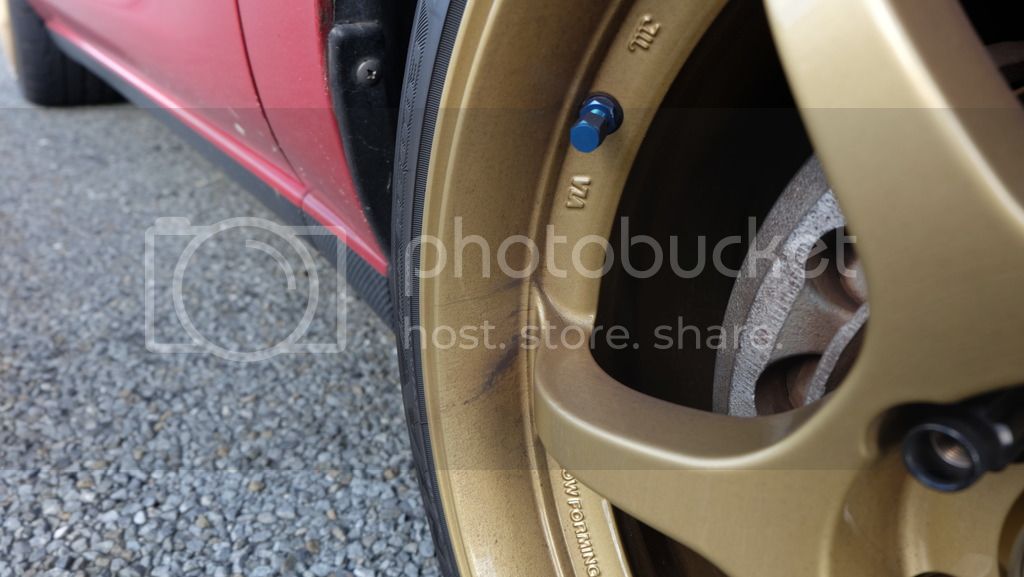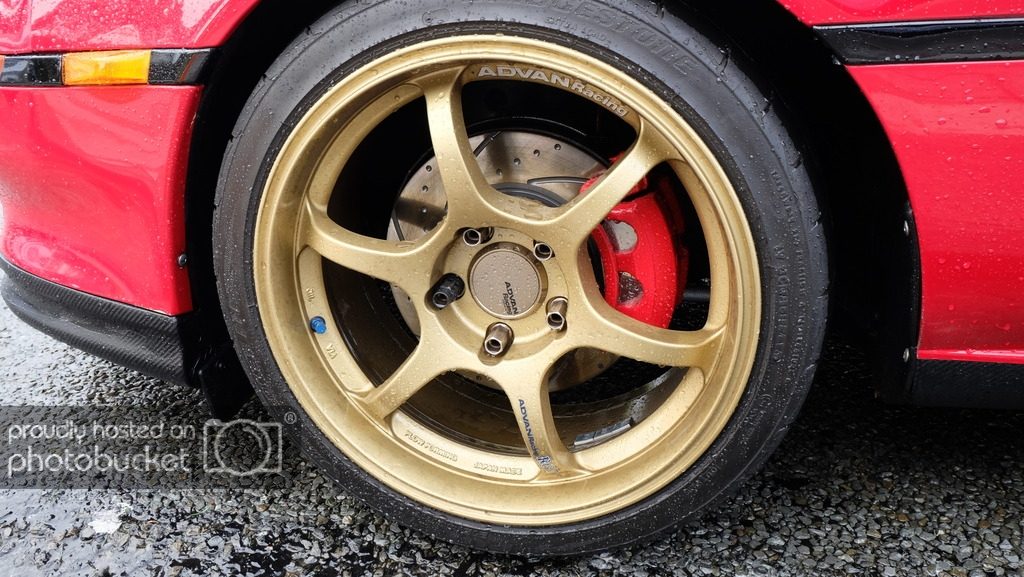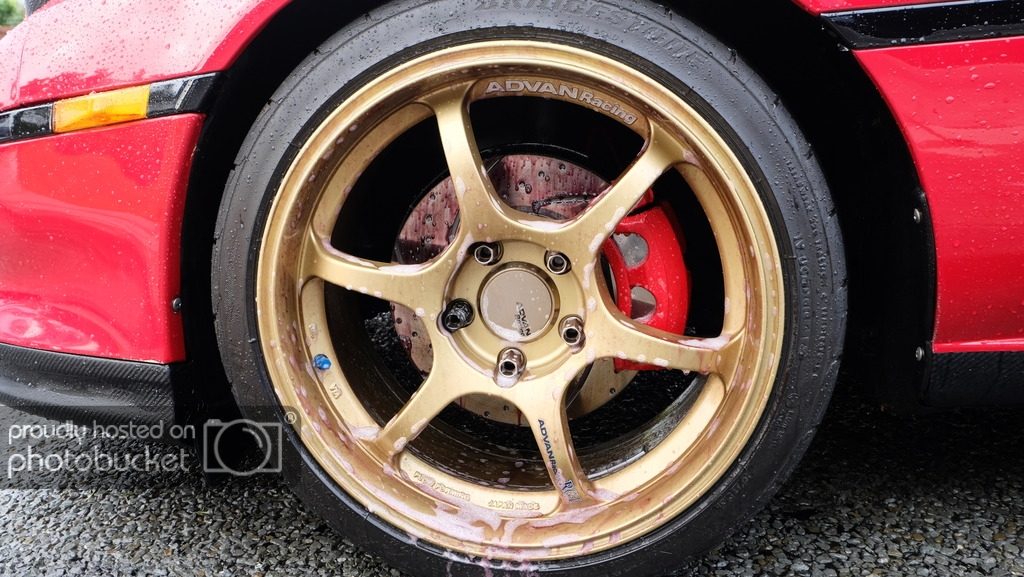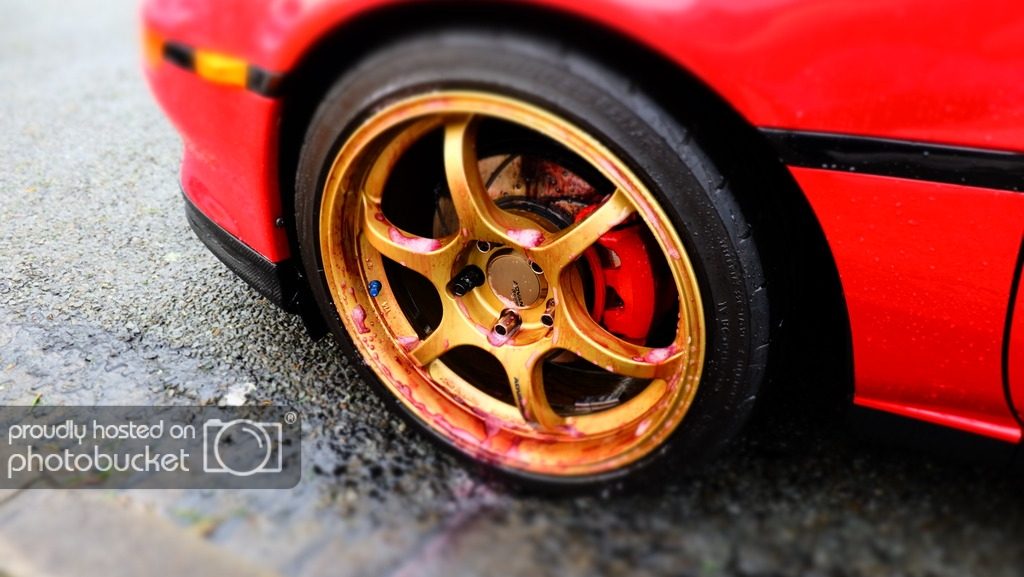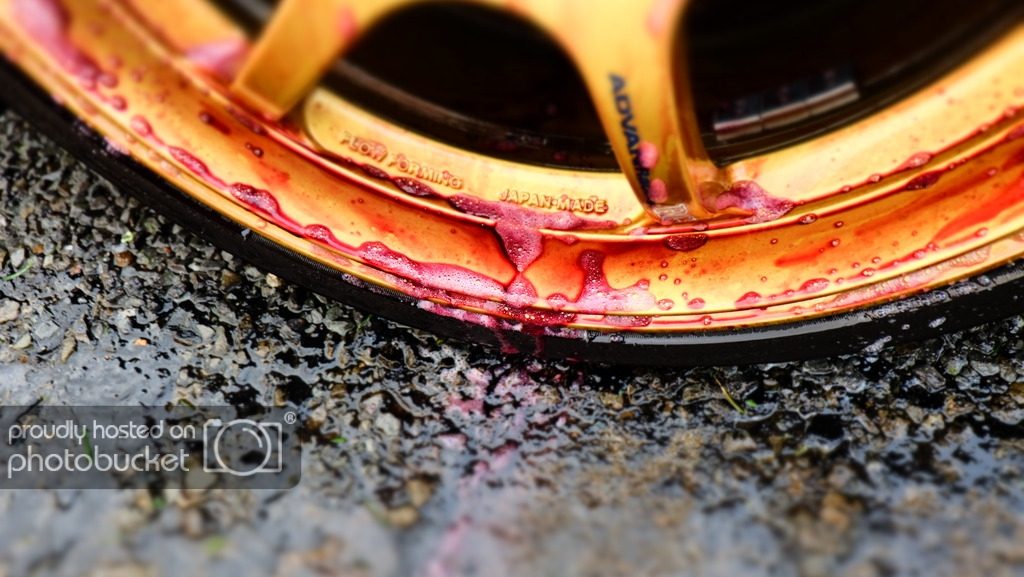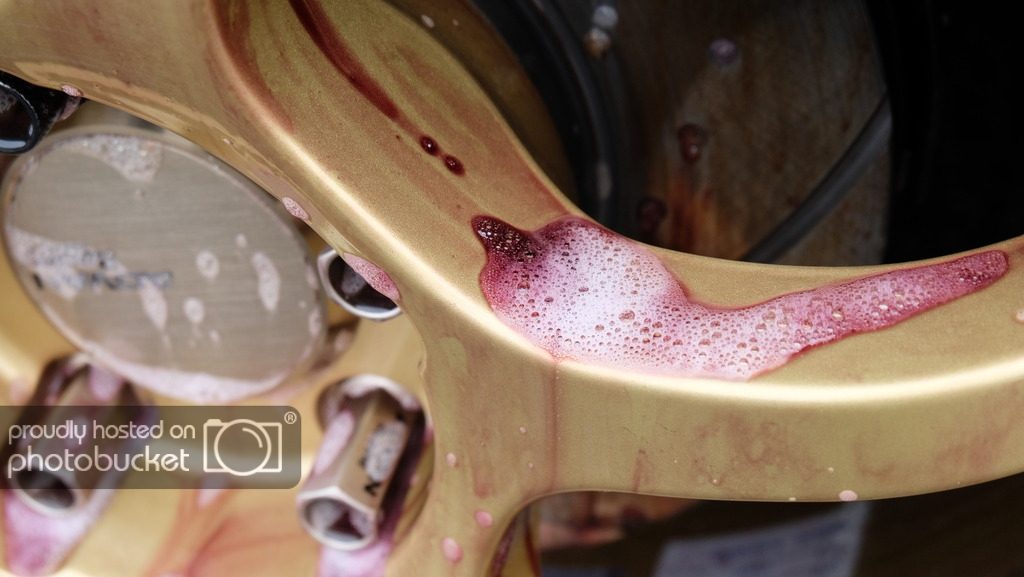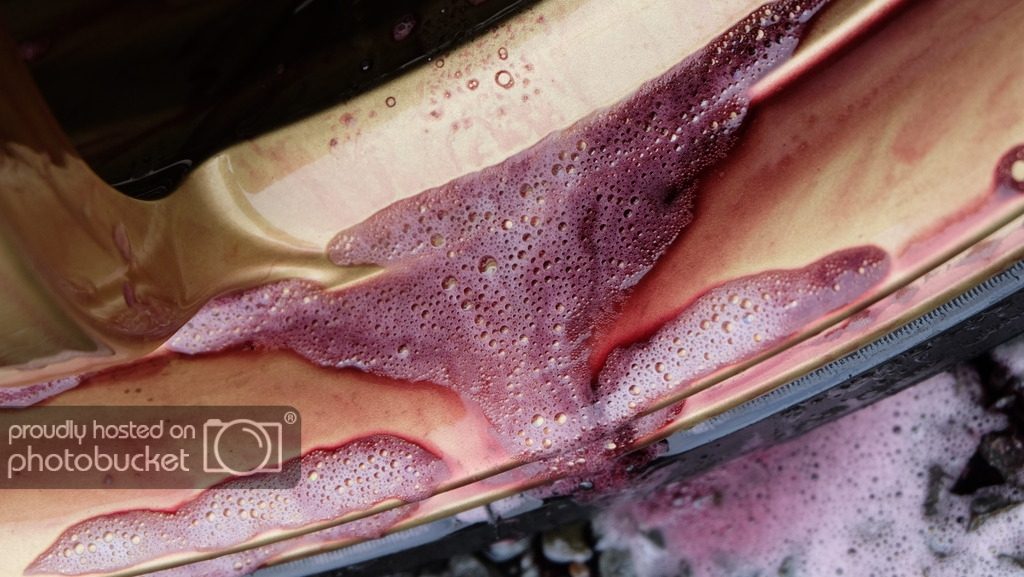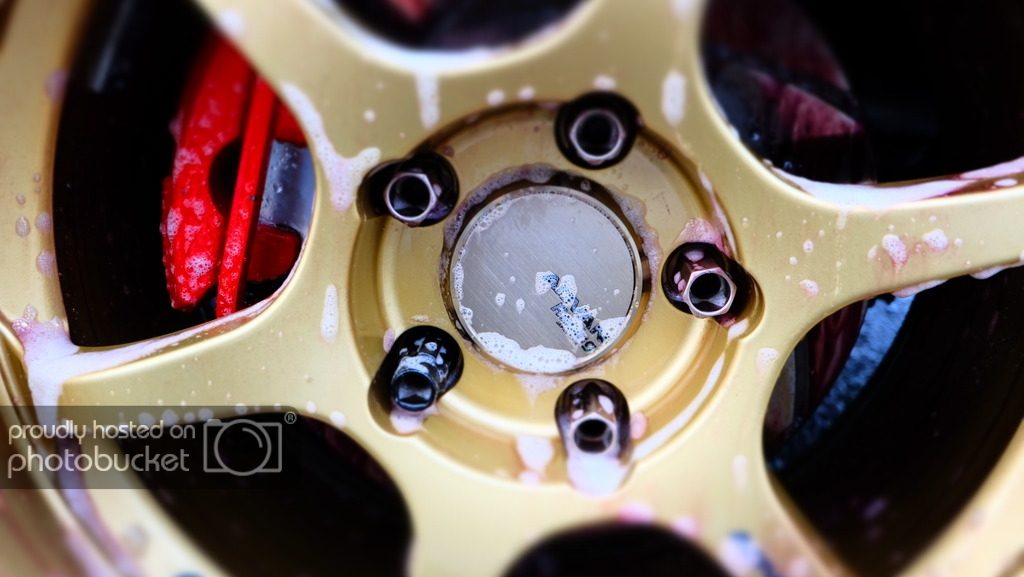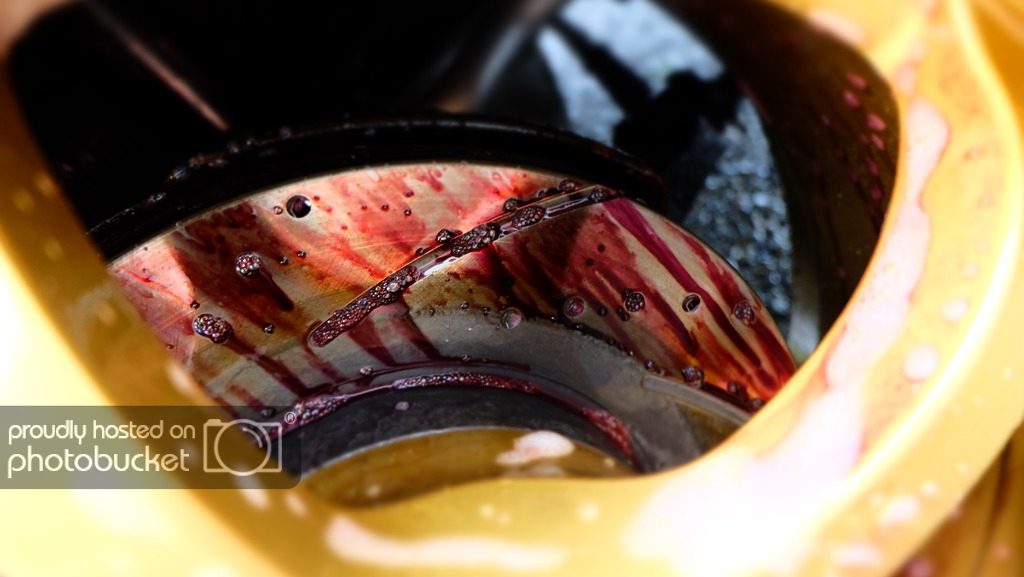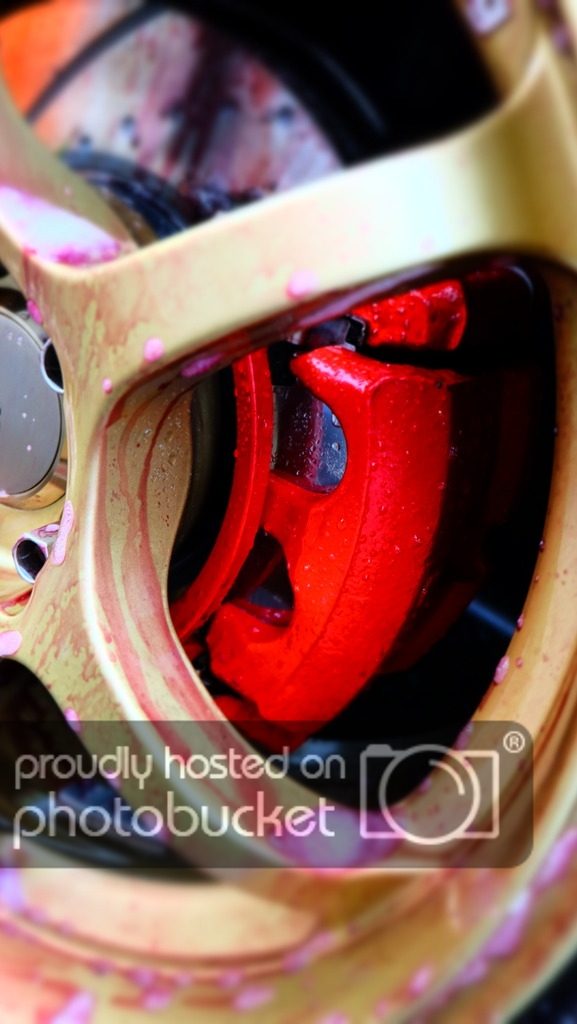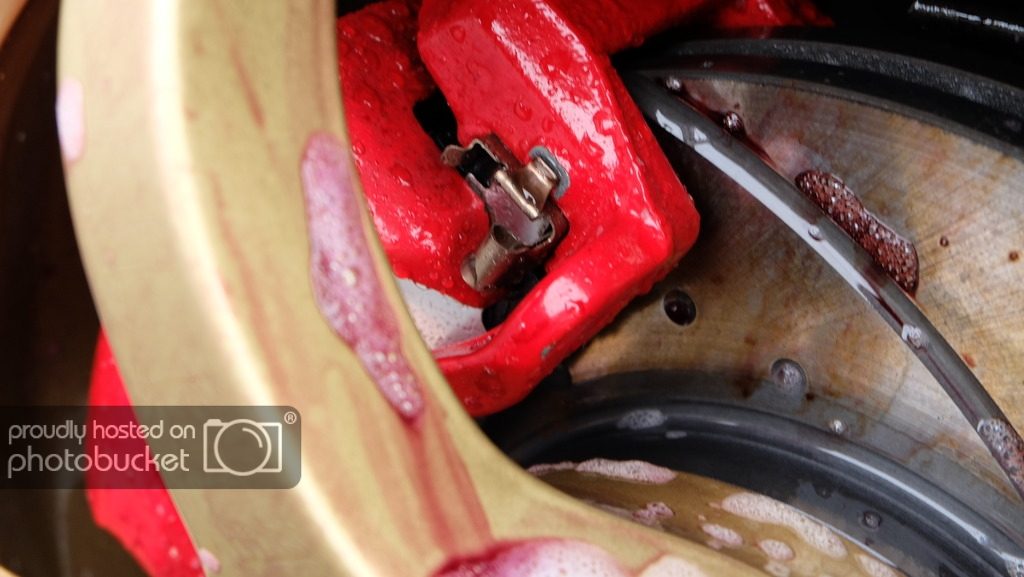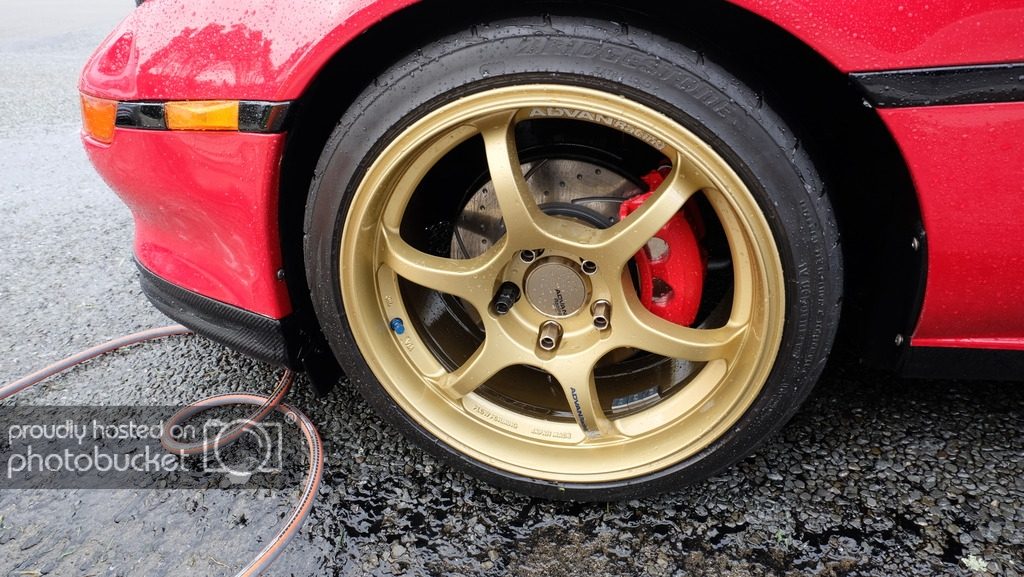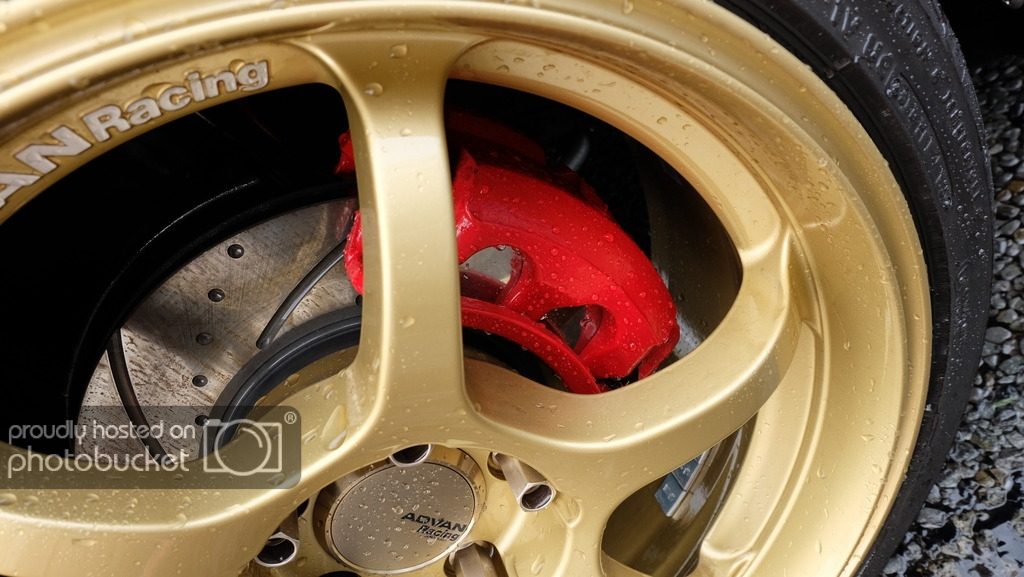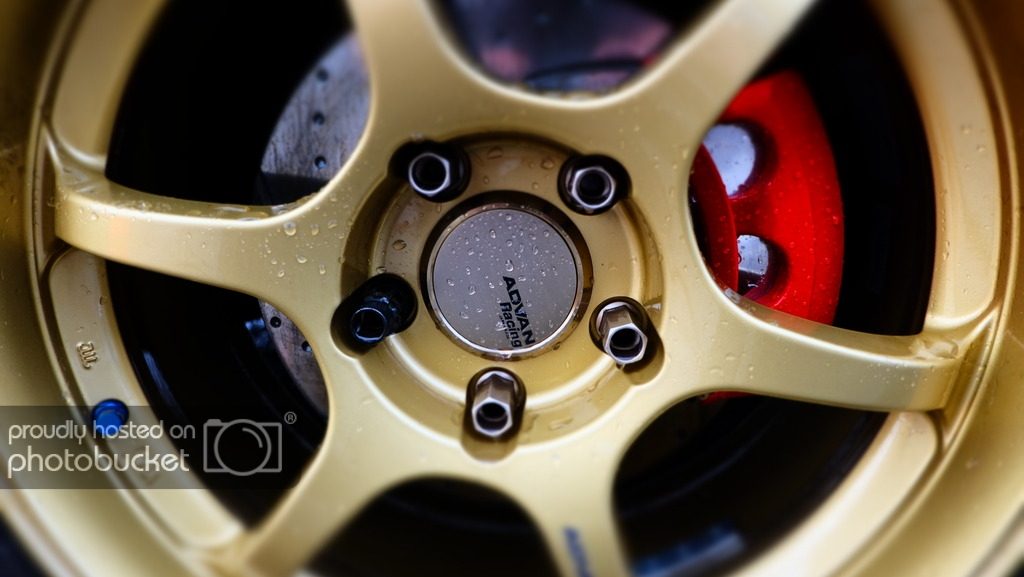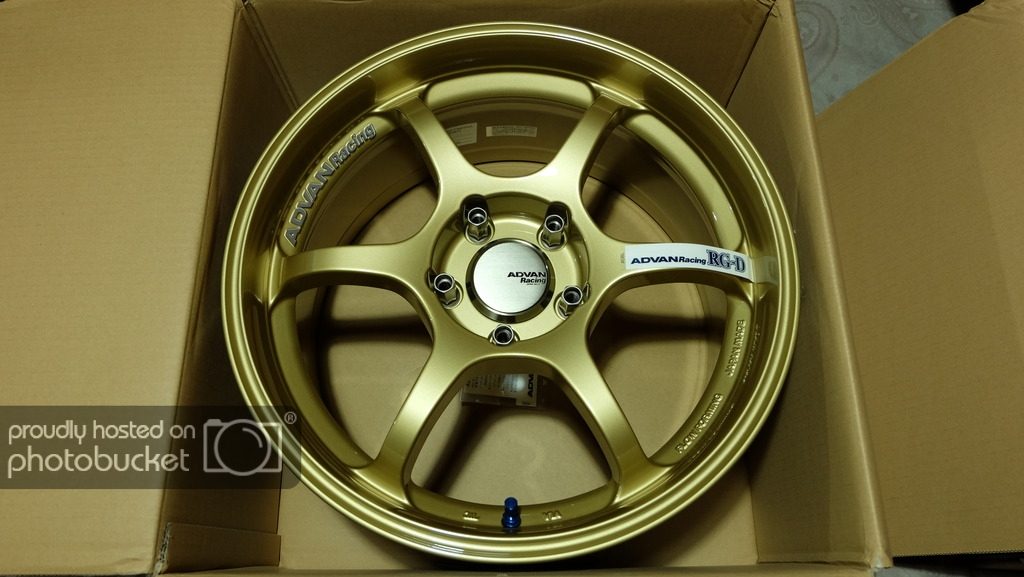Installing new parts.
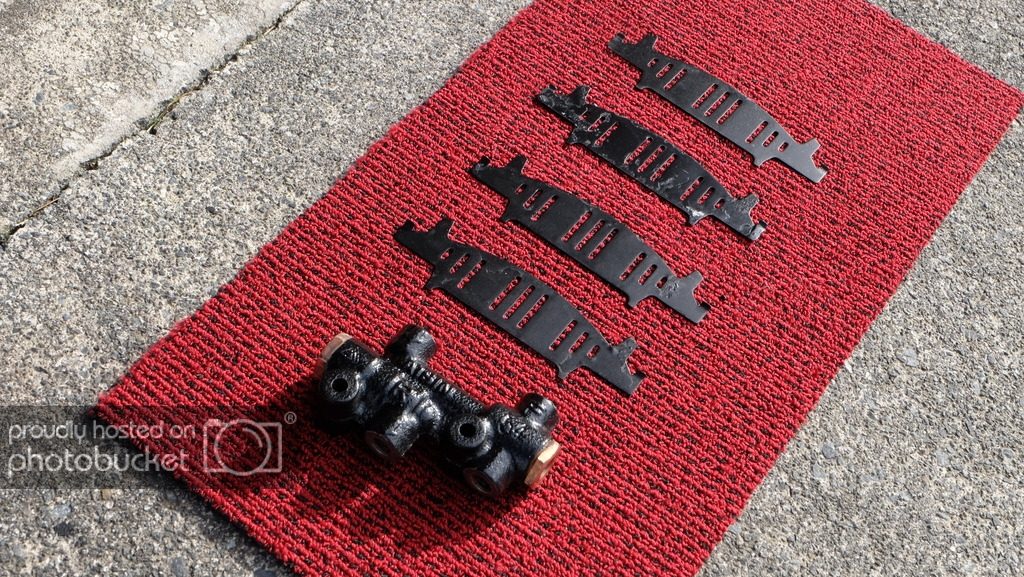
The 'new' proportioning valve from the GEN3 car and some front brake shims got a coat of black paint. Sure you'll never see the shims but my OCD needed to clean them up, remove the rust and recoat them.
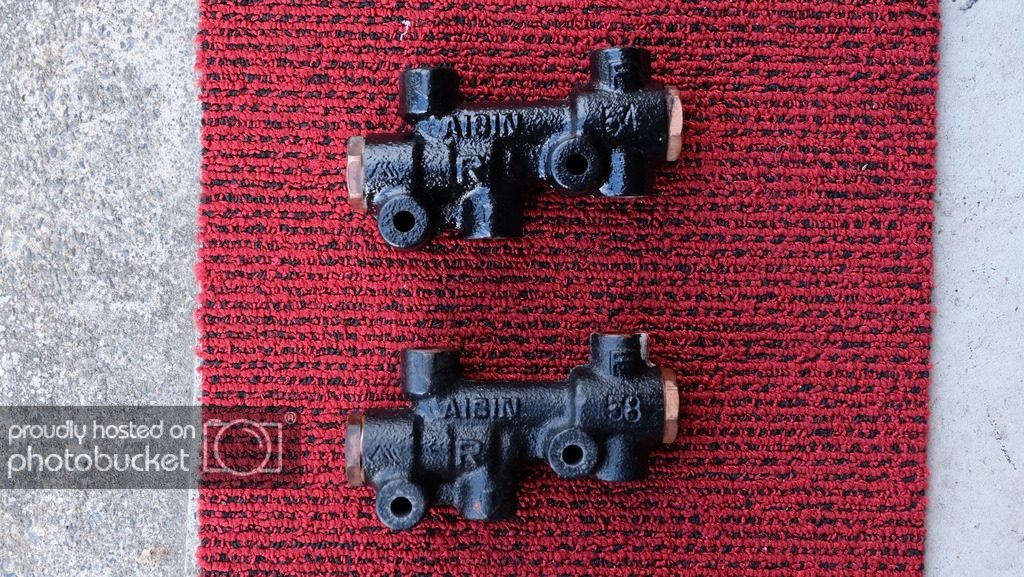
GEN1 vs GEN3 proportioning valve. The GEN1 has 58 cast into it and the GEN3 has 54. Pretty much identical castings but must have different internals.
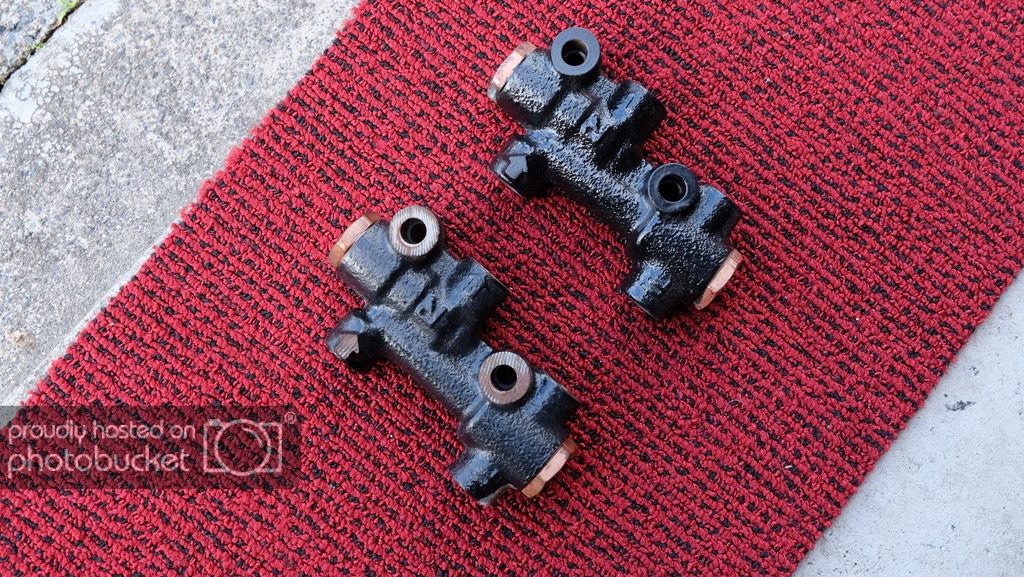
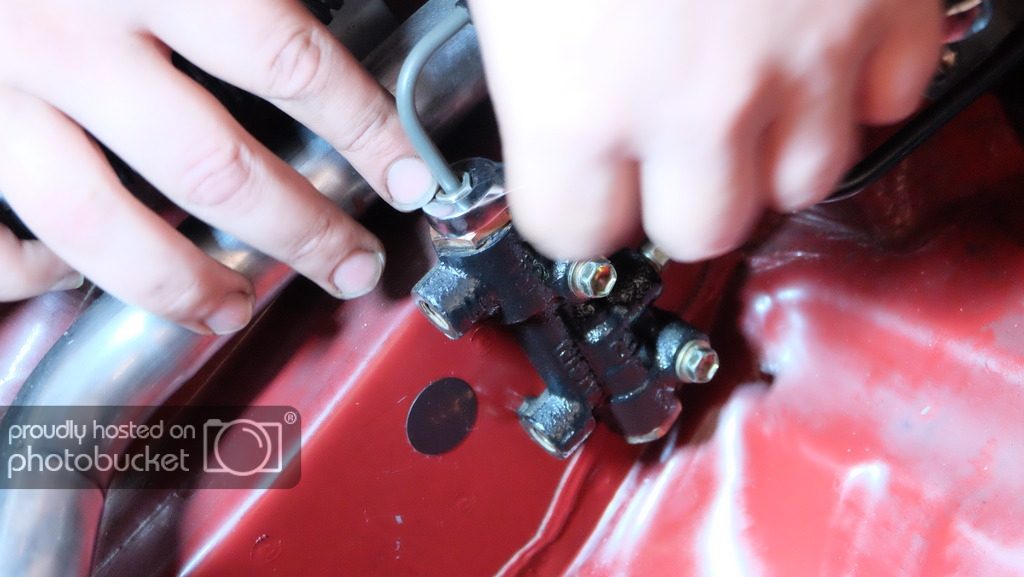
Installing it is very easy. Just make sure you don't cross thread the nuts and tighten them up enough so they don't leak but you don't damage them or the valve threads.
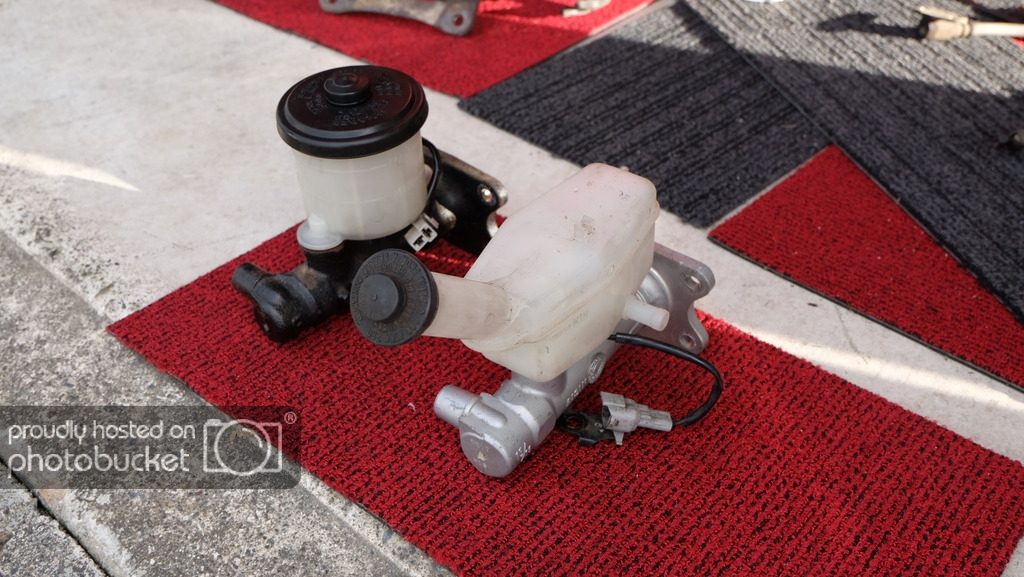
Here's where things get messy. The old master cylinder is 7/8" piston diameter and made from steel. The larger cylinder I was installing is a 15/16" from a Toyota Previa non abs van made from aluminium. A direct swap.
This bit is important as I found out the hard way. Always bench bleed the master cylinder if it is new or becomes empty. When I installed the 15/16" one I didn't bleed it properly even though I thought I had. This left air in the cylinder making the pedal very long and pretty much no brakes on top of fresh rotors and pads that don't work very well at all. This left my car unusable for a whole week while I waited to get more spare parts to complete the bench bleed properly.
To do this you need some clear hoses and some plugs with holes in them or in my case I got some short brake hard lines to thread into the master and attached some clear hoses to the end of them and placed other end of them in the reservoir. Similar to this video.
Once that was done I could move onto reinstalling the master into the car. I was going to use the 15/16" once it had been bled properly but while out getting the short brake lines I managed to get a 1" master cylinder from another Previa van. This has it's pros and cons but the shorter pedal travel was what I wanted so this pro works out better for me so far. No photos of this as I was covered in brake fluid and my photographer had left for the day. Either way the next few photos from the first attempt show the same thing minus the bench bleeding part.
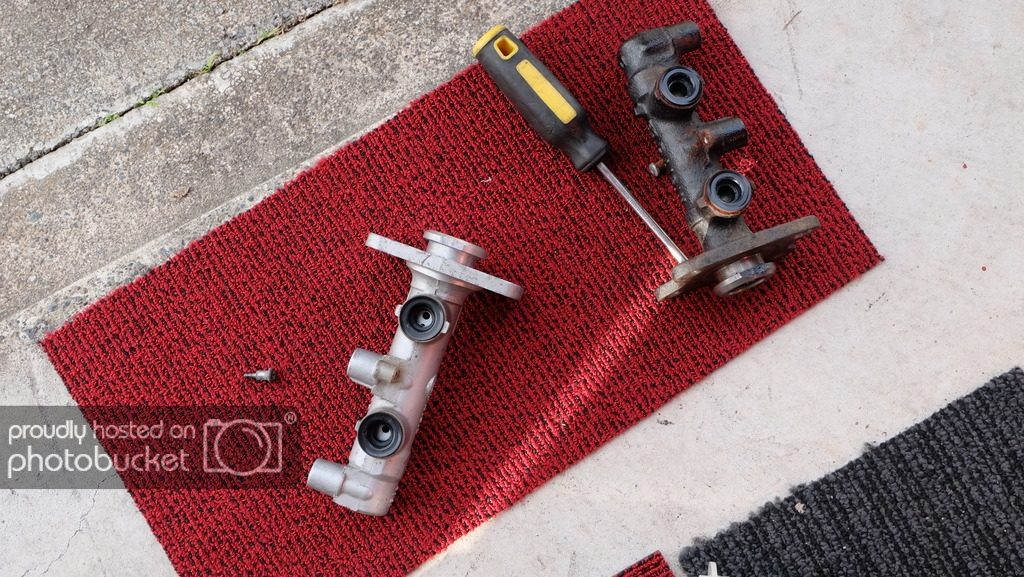
Now as you can see the Previa master has an odd shaped reservoir due to the way it is installed in the van under the front window frame. The solution to this is to swap out the reservoir from the 7/8" GEN1 master. A direct swap too which is great. This also allows me to have the correct plug for the fluid level sensor.
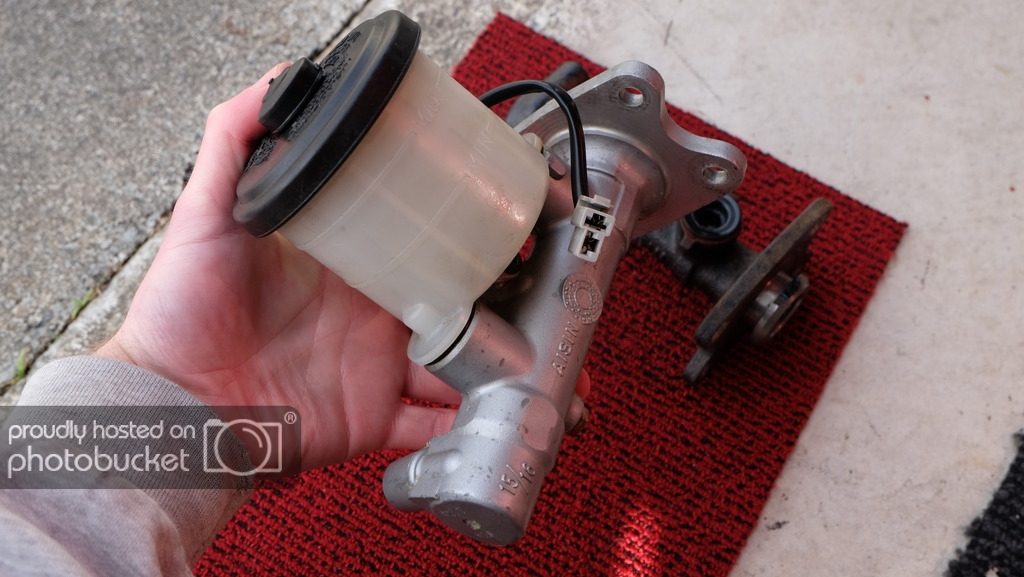
DONE!
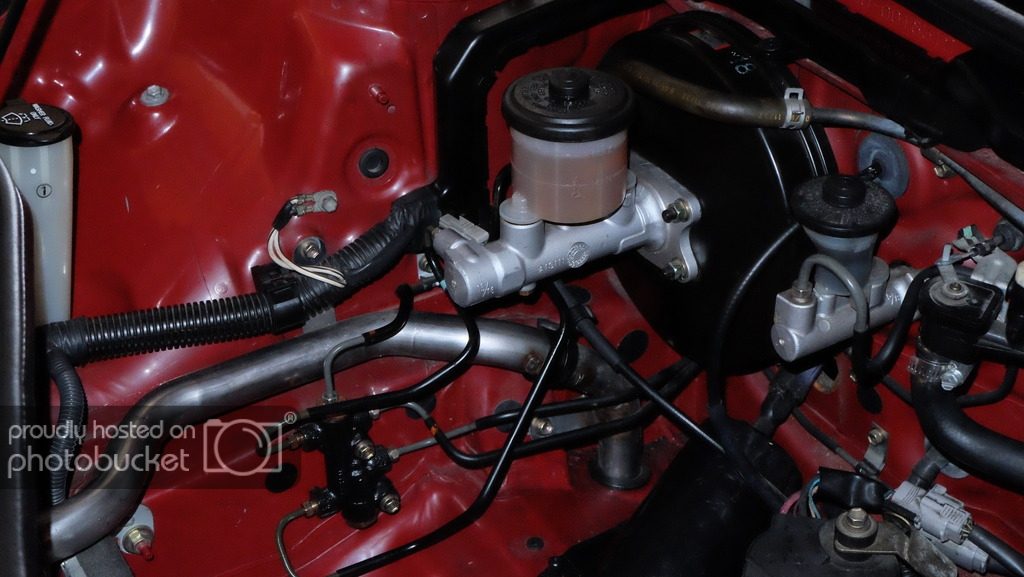
This shows the master in place. 15/16" in the photo but I have the 1" installed in the car now.
New rotors vs old rotors.
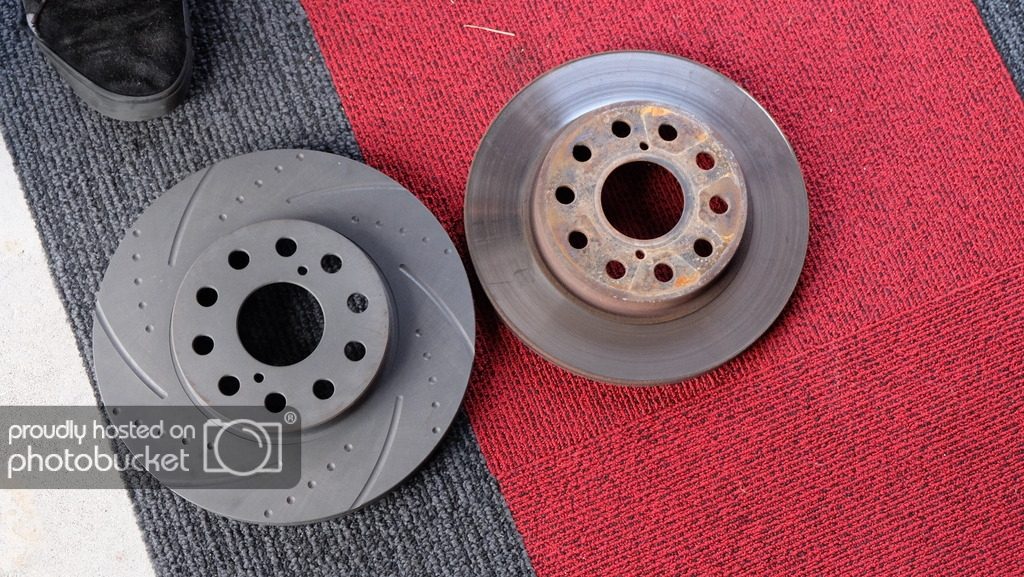
Rear
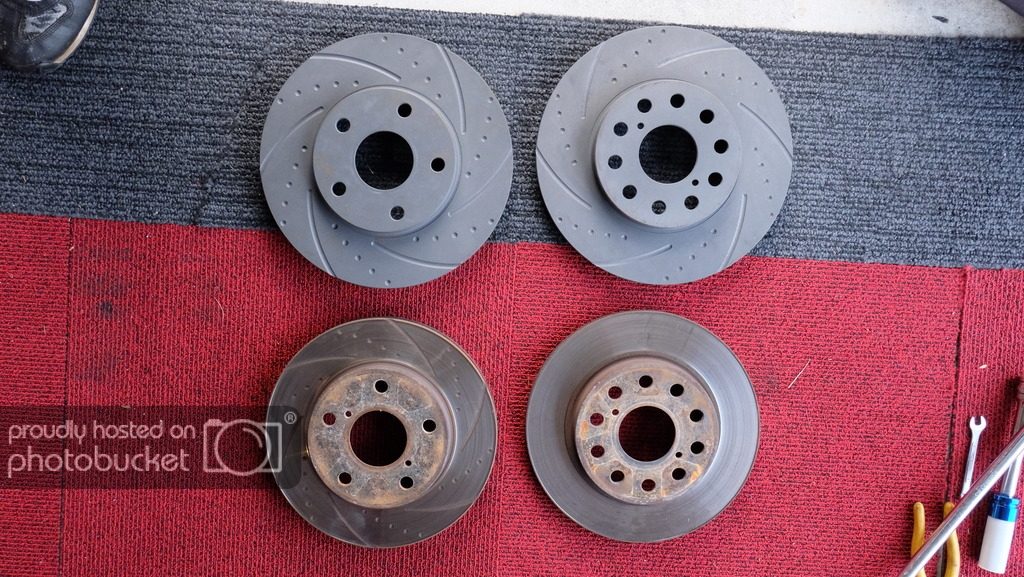
Front on the left, rear on the right. Only 17mm dia and 5mm thickness difference but enough to see a big change. Plus quite a bit of extra weight for rotors and calipers. I did save weight in master cylinder going from steel to aluminium but really I just installed better brakes to compensate for their own weight. :roll:

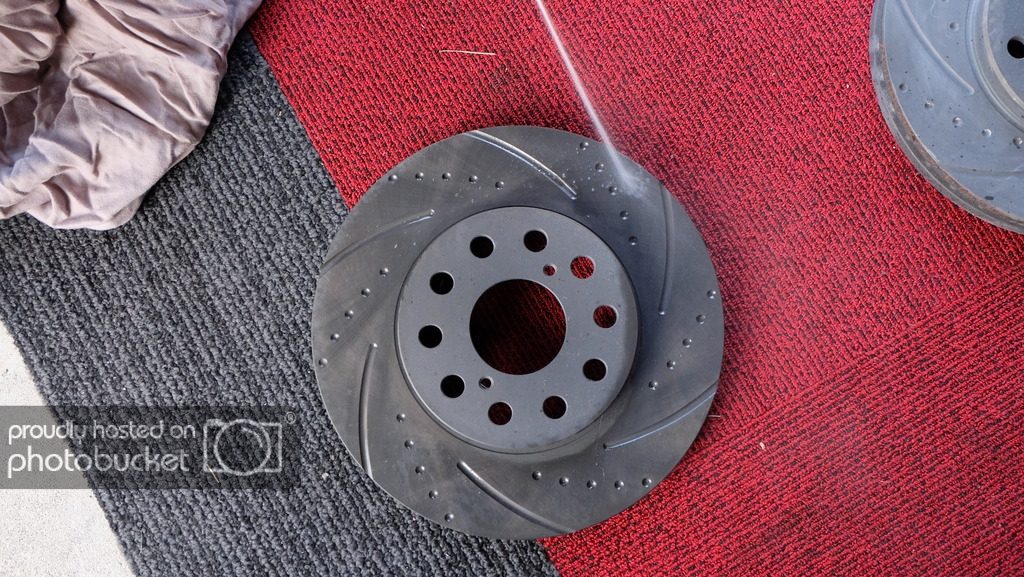
These Znoelli rotors have a dry oil corrosion protection on them so you need to remove this of the pad faces to stop it getting in the pads.
Brakleen is good stuff for that and a rag.
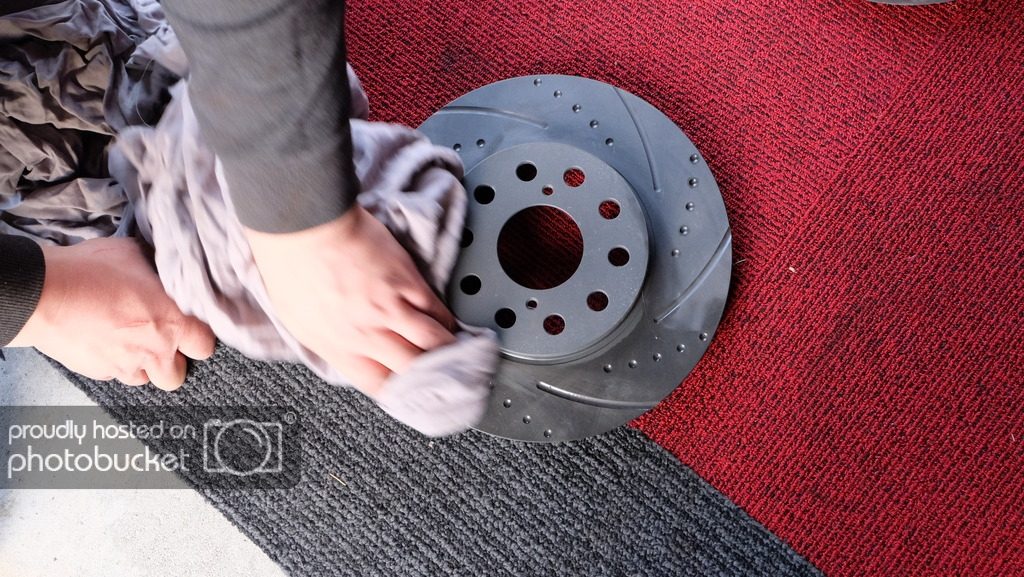
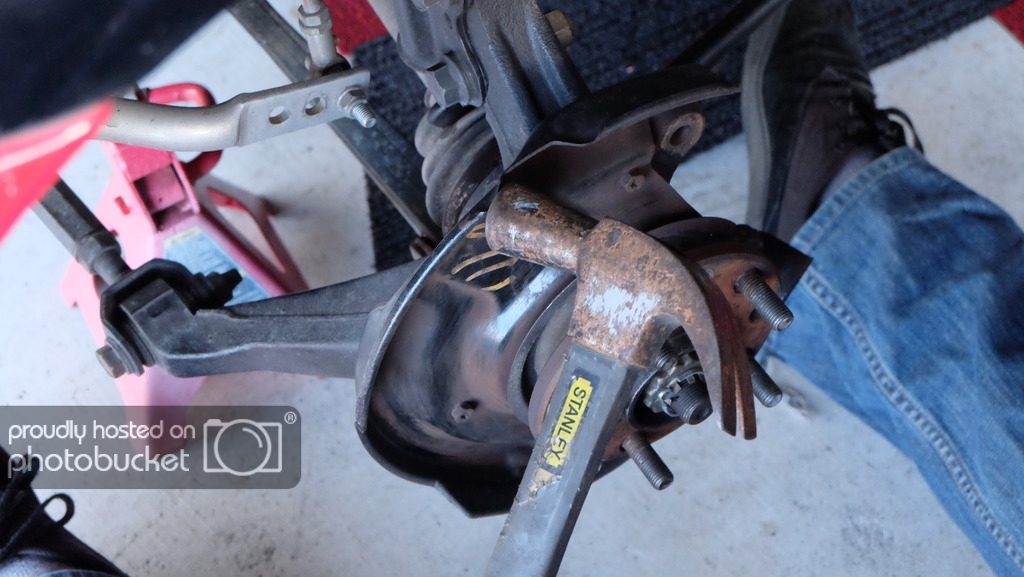
Due to the 17mm diameter and 5mm thickness change the dust covers are a bit small so all that needs done is bend them out of the way to clear the rotor.
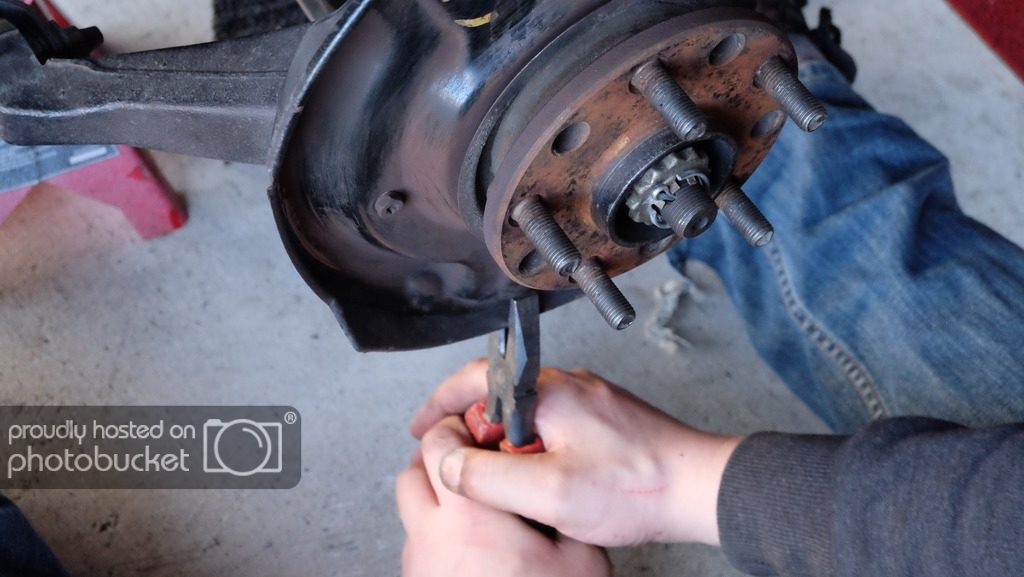
A few whacks with a hammer and some bending with pliers and your hands moves them enough to work.
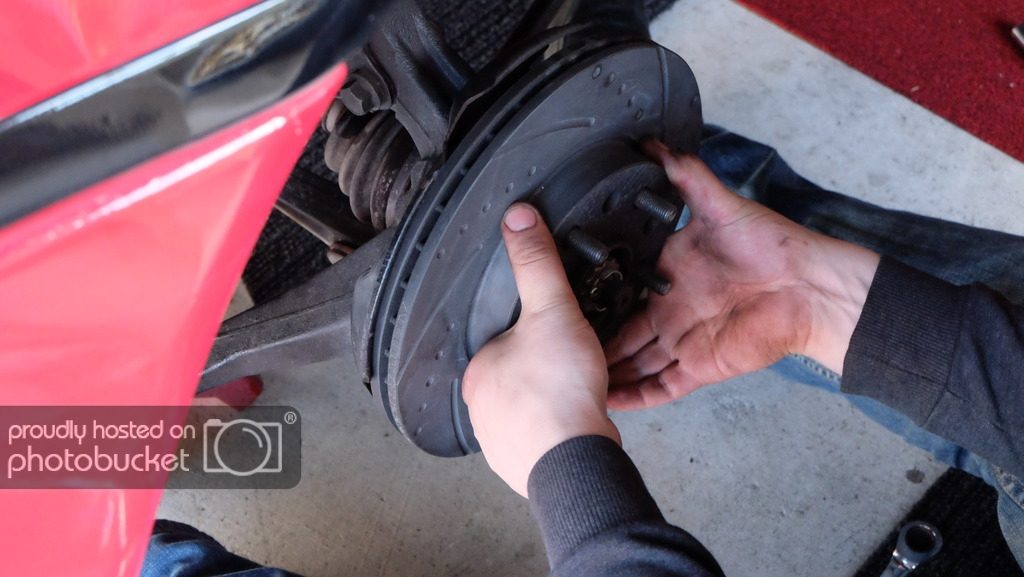
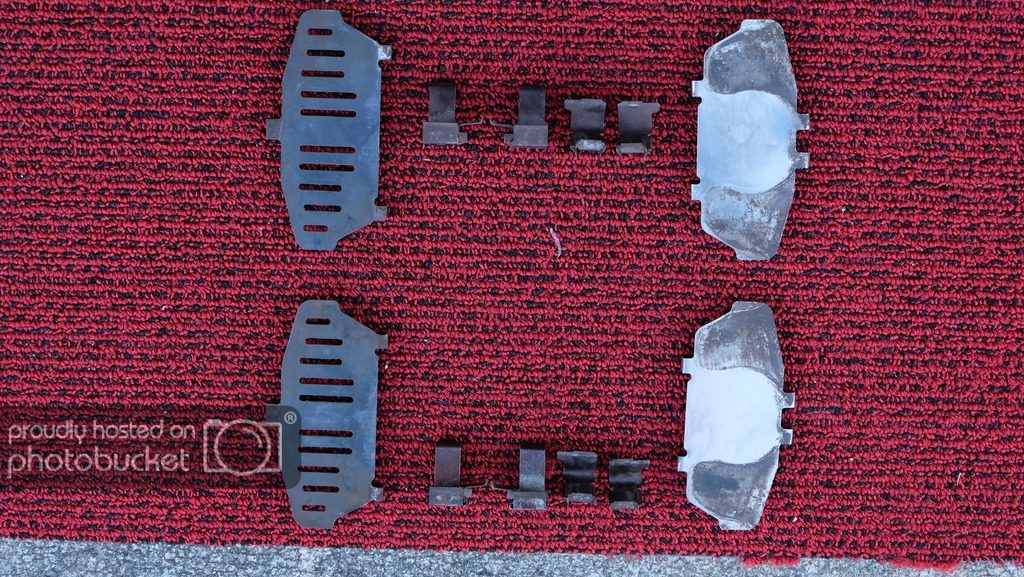
Reused rear pad shims cleaned up. Like I mentioned before the rear pads are the same from 1989-1999 JDM cars. I am missing the inner pad shim but not been a problem for the 9 years I have had the car.
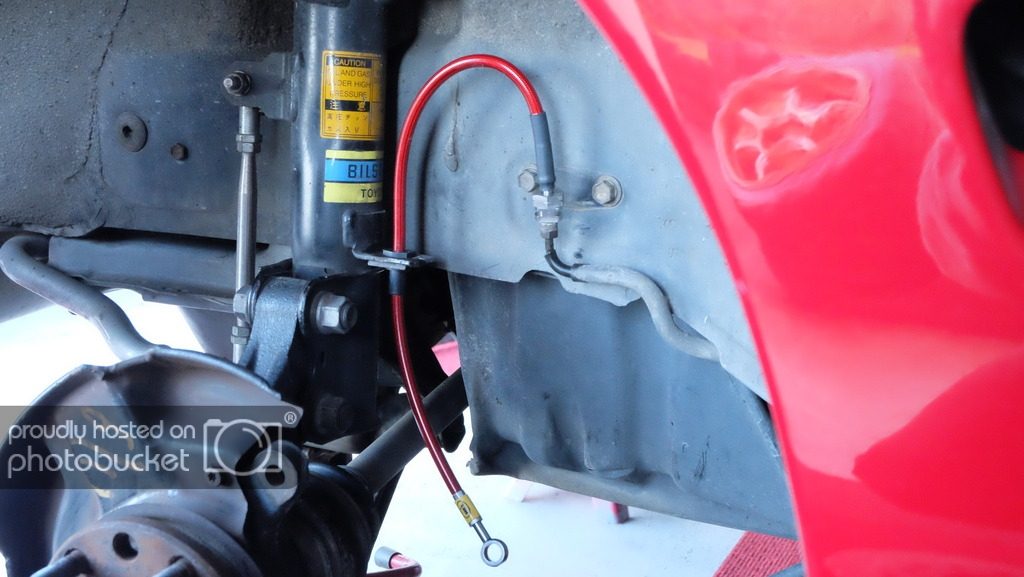
New brake hoses going in. The bracket that holds them to the body is missing on these hoses but I will get my brother to make me some once I measure them.
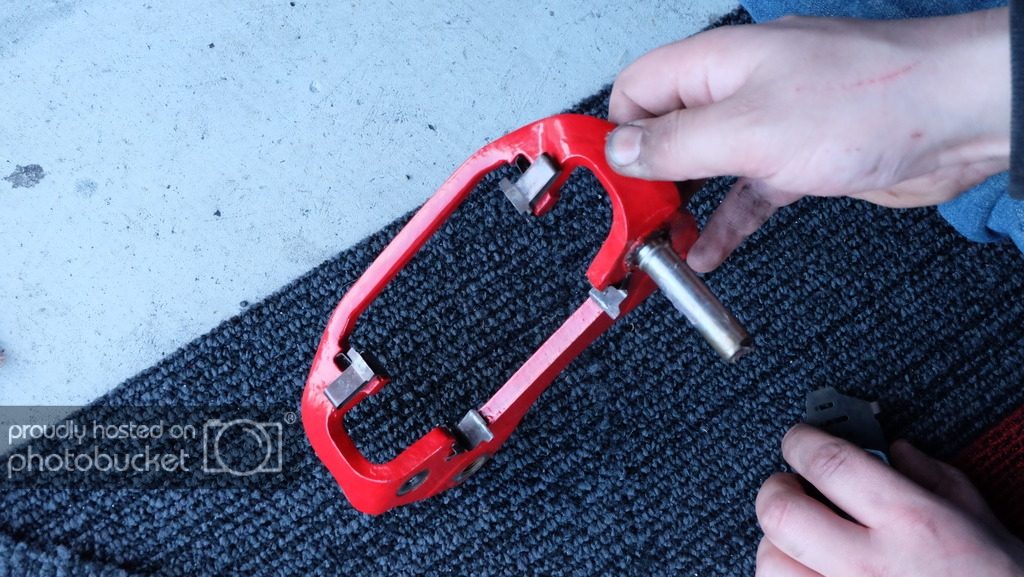
Old pad clips installed in to the shiny caliper bracket.
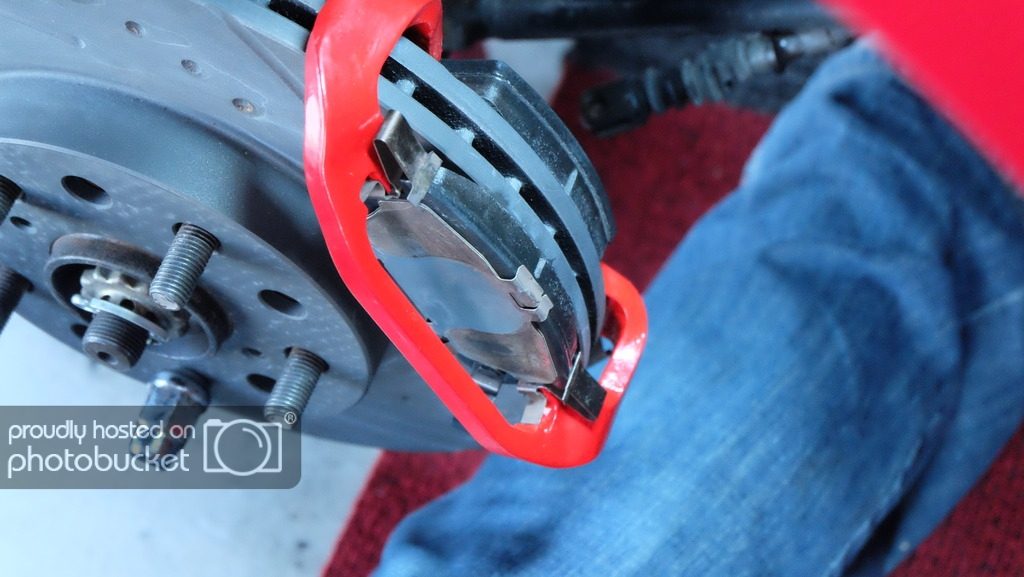
Pads and shims installed into the rear bracket. Massive mistake here. The spring part on the outer pads should go under the 'leg'. Here I have not done this. Found my mistake when installing the other side.
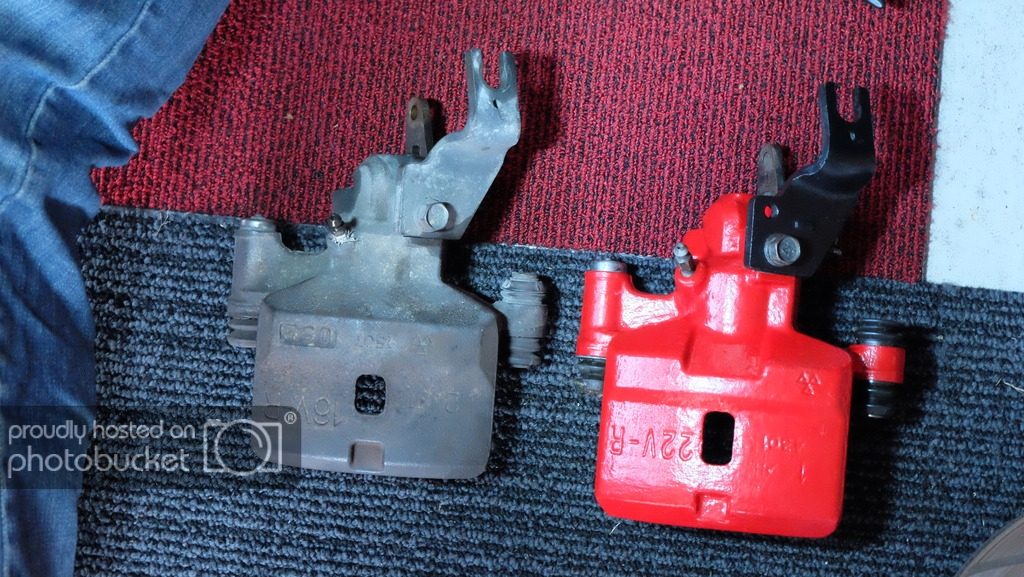
Old vs new. You can see the new 22V caliper is wider to compensate for the thicker rotor. Almost everything else looks the same except the bracket spaces the caliper out to take the big diameter rotor.
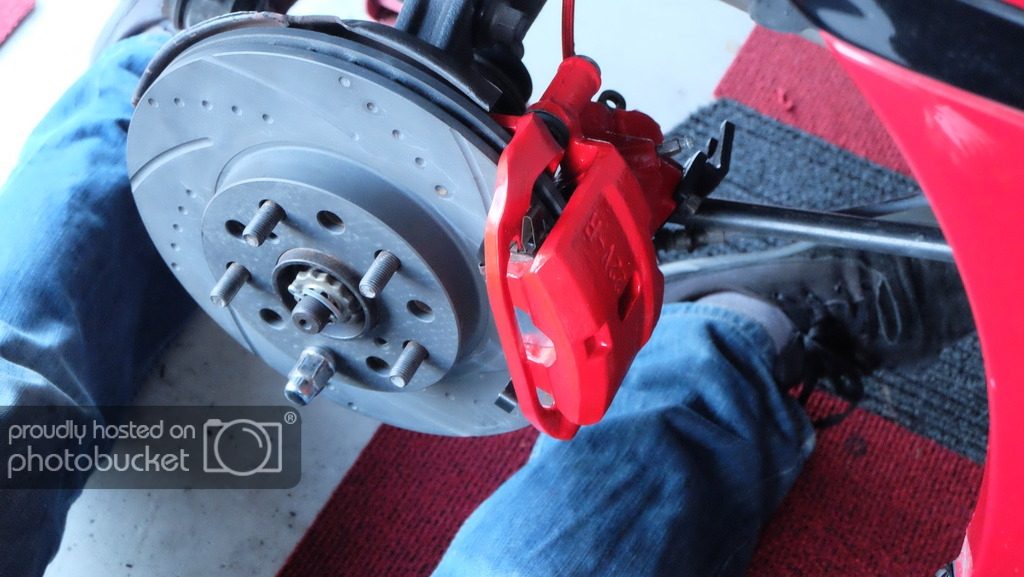
Installed the caliper. You slide the caliper on the pin on the bracket then bolt the bottom down with the 12mm bolt.
Then put the handbrake cable back on with the pin.
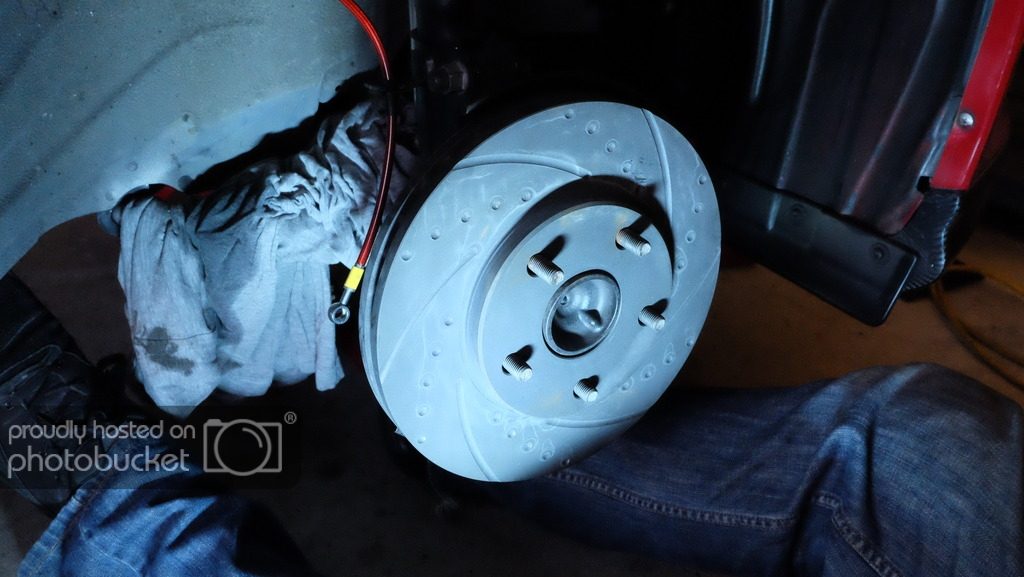
New front rotor.
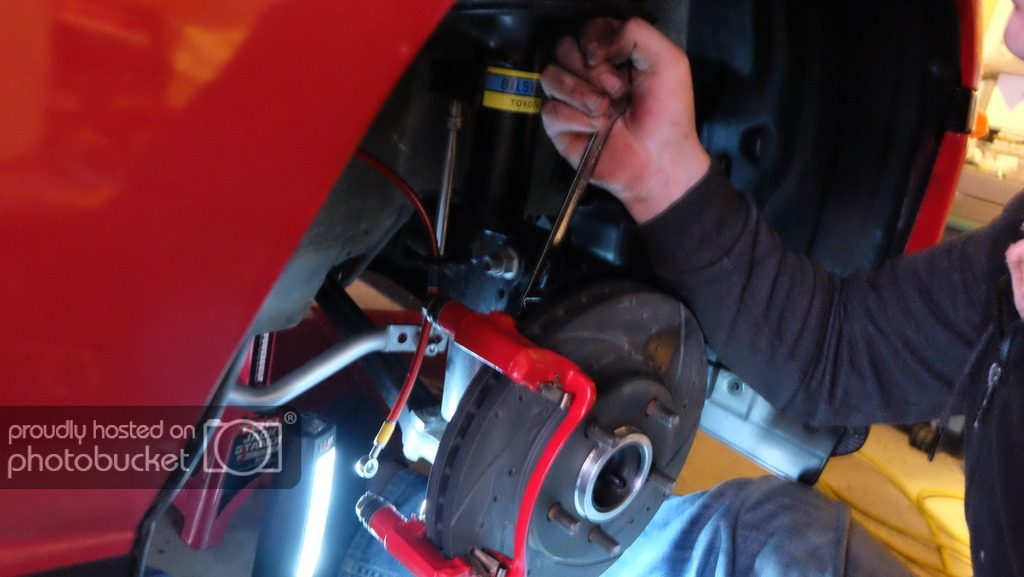
Tighten down the 2 17mm bracket bolts on the back.
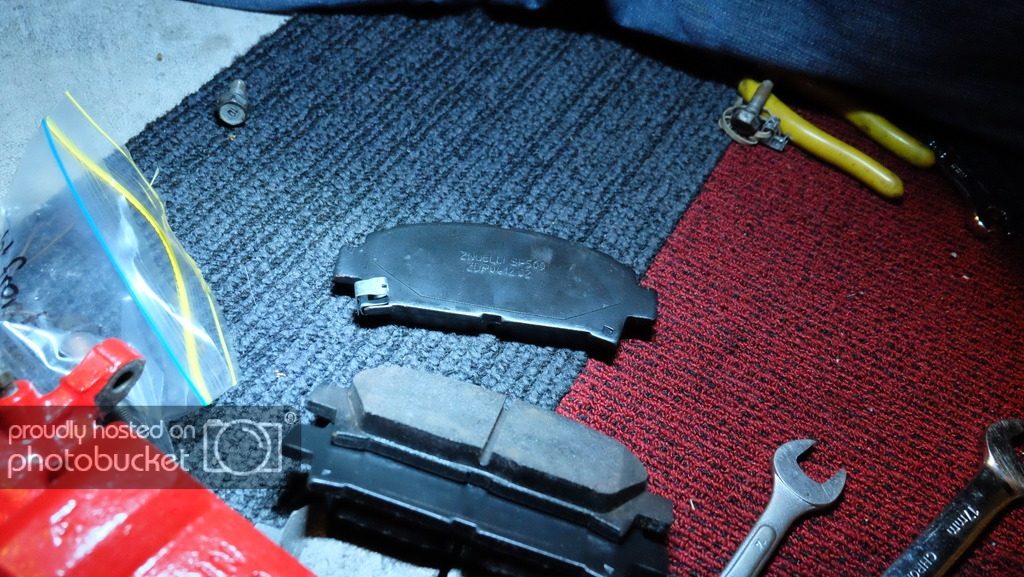
Don't forget to install the pad thickness squeal detector clip. Inside pad on the bottom as per the BGB.
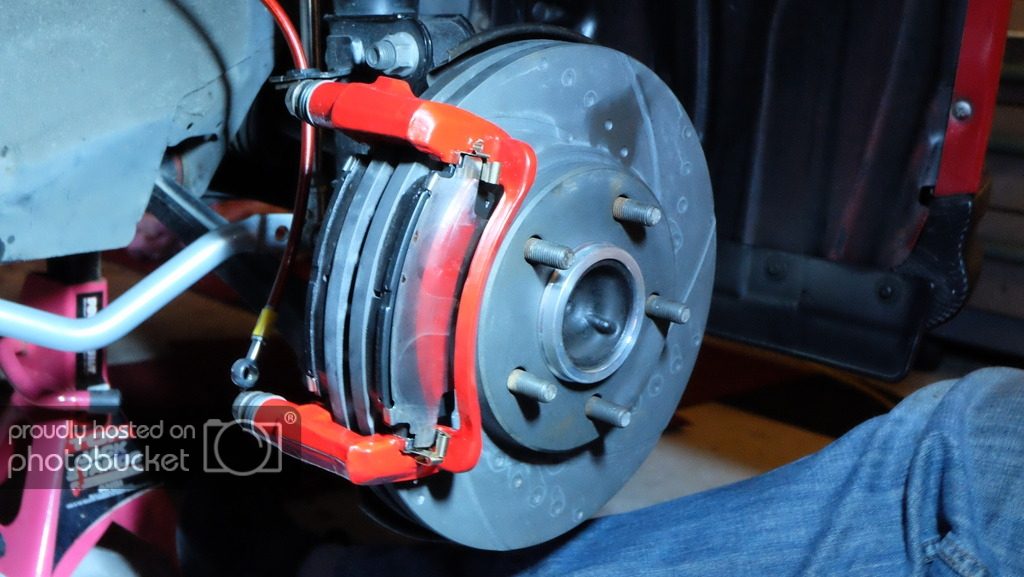
Pads and shims including the never to be seen inner shims that I painted black.
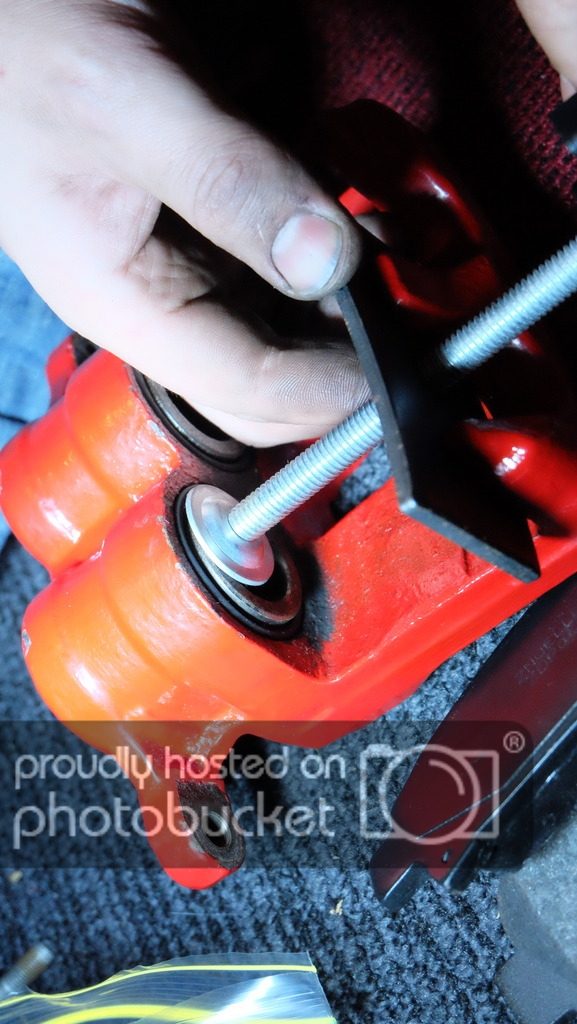
Push the pistons back into the caliper so you can slide it over the pads. New pads are obviously thicker than old pads so they need to go almost all the way in.
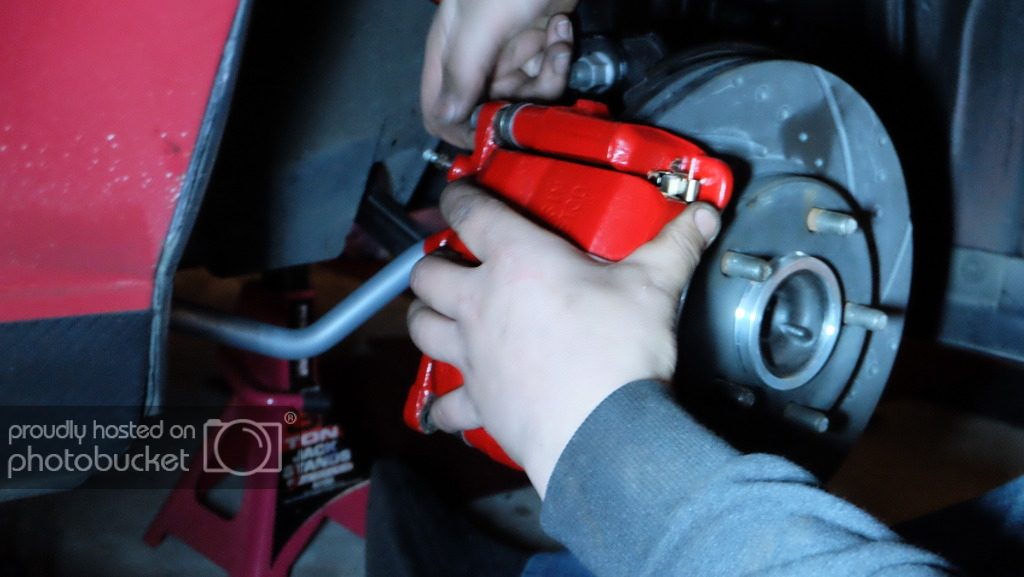
Do up the 2 14mm bolts that hold the caliper to the bracket.
Then bolt up the new brake hose with the copper washers to the caliper.
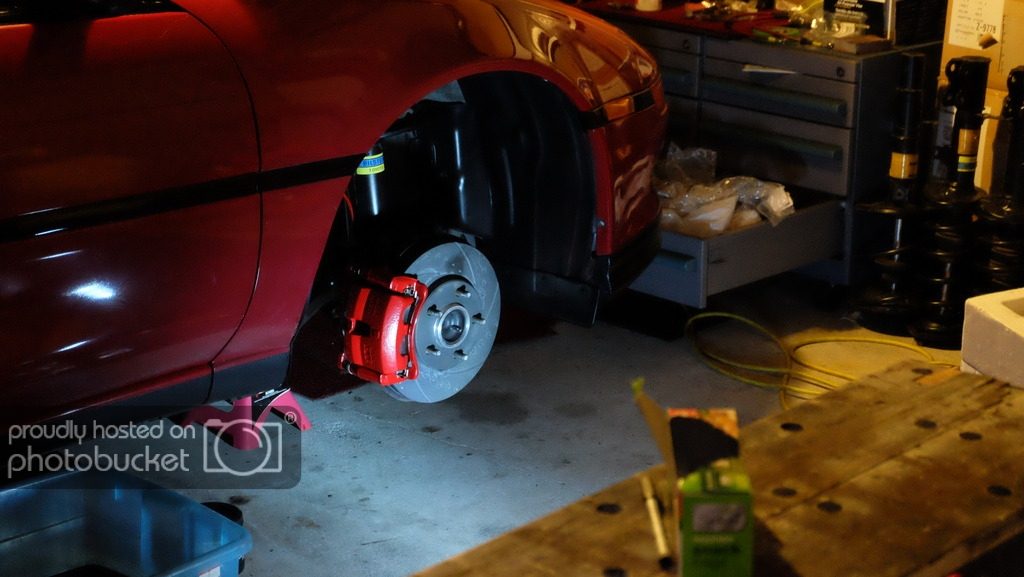
And done!
Then you need to bleed the rest of the system. Fill the master with fluid to the full mark then start at the caliper furtherest away from the master cylinder.
On a RHD it is the left rear. Press the brake pedal down a few times to pressurise the system them with a clear tube on the end of the bleed nipple, crack it open when the pedal is held down. Once fluid/air stops coming out close the nipple and release the pedal, then push the pedal down again and repeat until the fluid has no bubbles in it. Then move onto the right rear, then the front left and then the front right. Then go and do it again to check. Make sure you keep the master reservoir topped up or you will have problems getting air out of it again. You need 2 people for this method. There are other ways but this works the best.
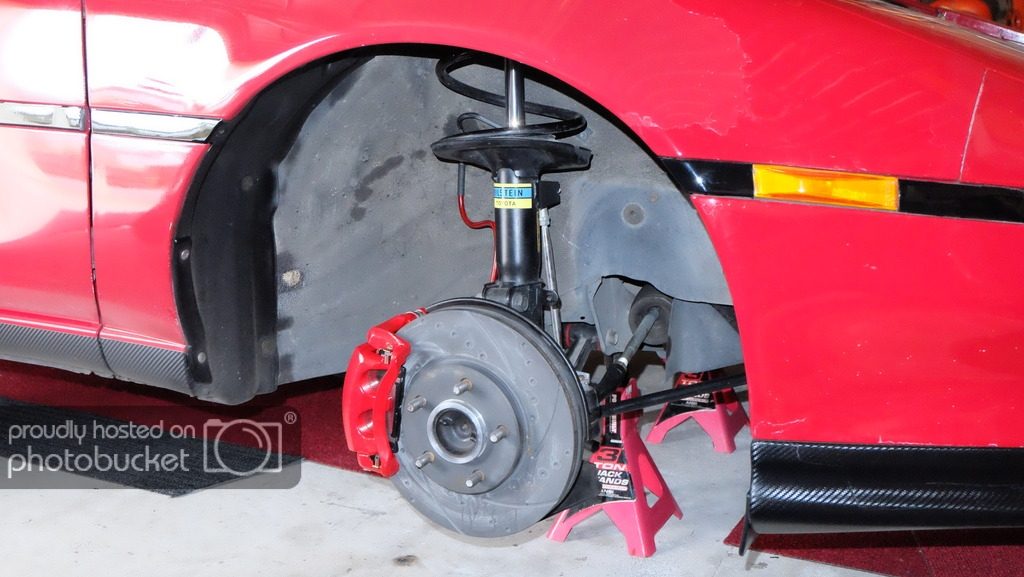
Front
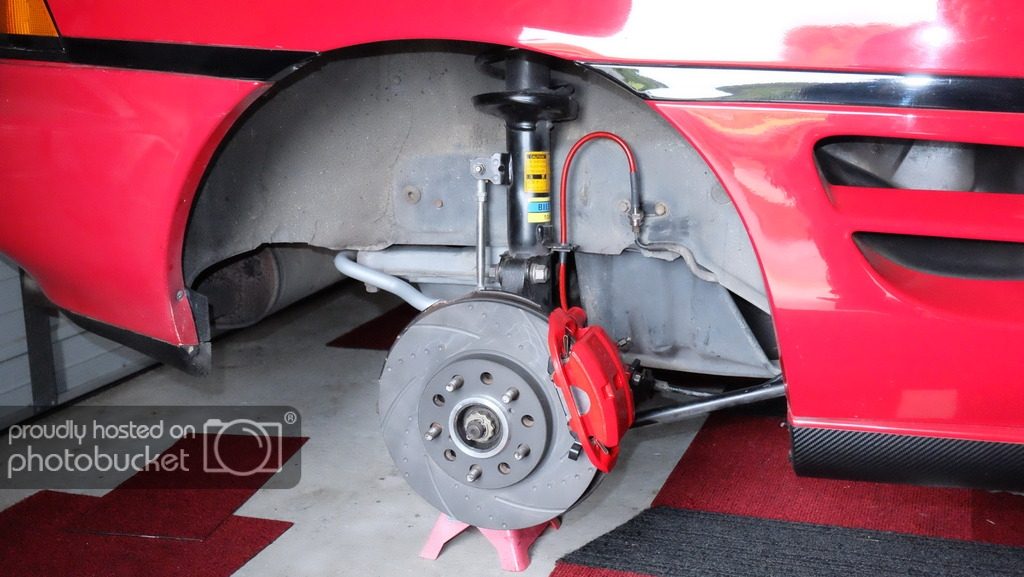
Rear
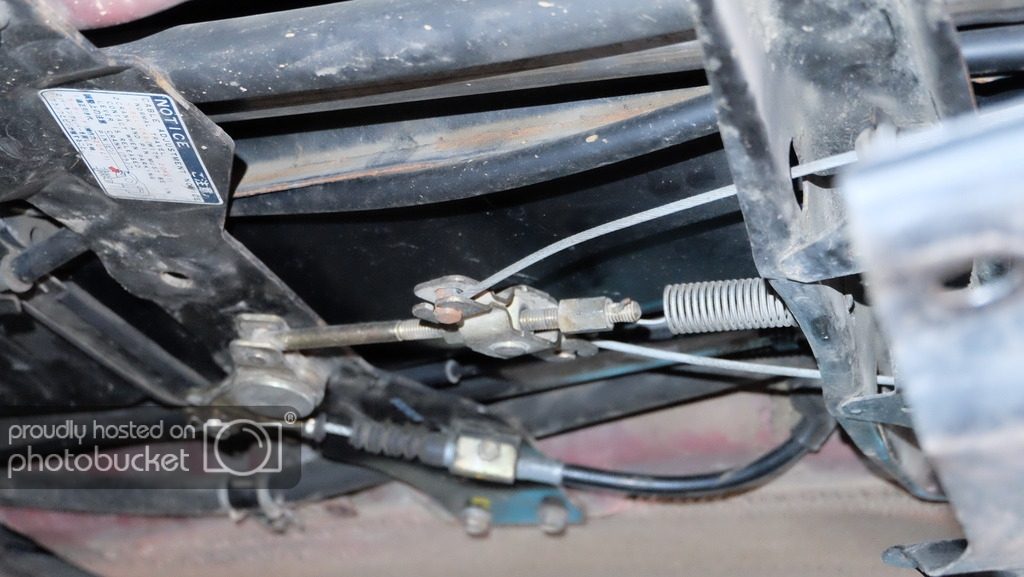
Now you will need to adjust the handbrake. Most likely to get the hand brake cables back onto the rear calipers you will need to loosen the adjuster under the middle of the car. Remove the fuel tank cover and loosen the 12mm adjusting nuts. Then follow the BGB to adjust them. I'm not going to cover this as many photos would be required to cover this in depth. But 6-8 clicks on the handbrake is within spec once adjusted correctly.
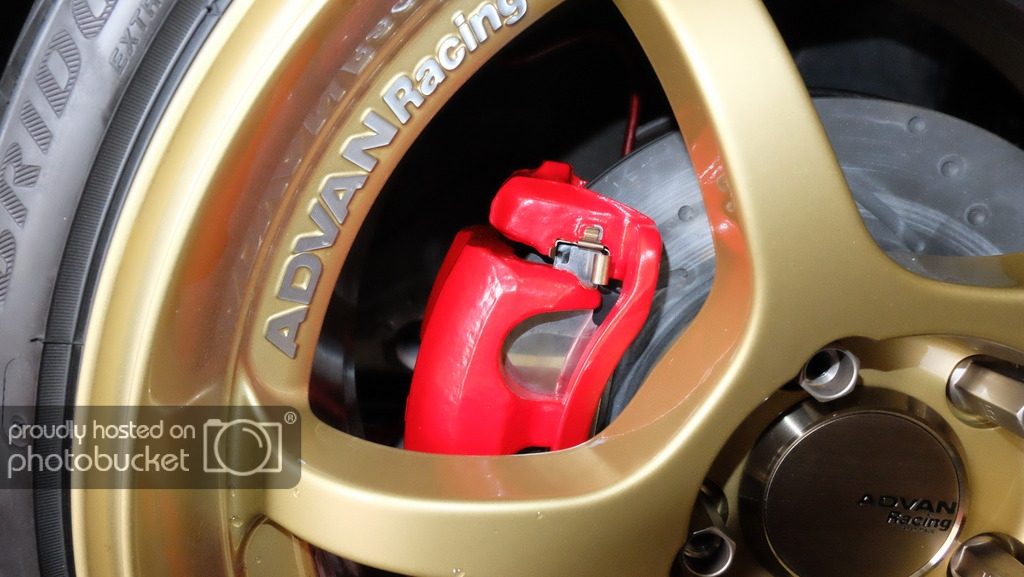
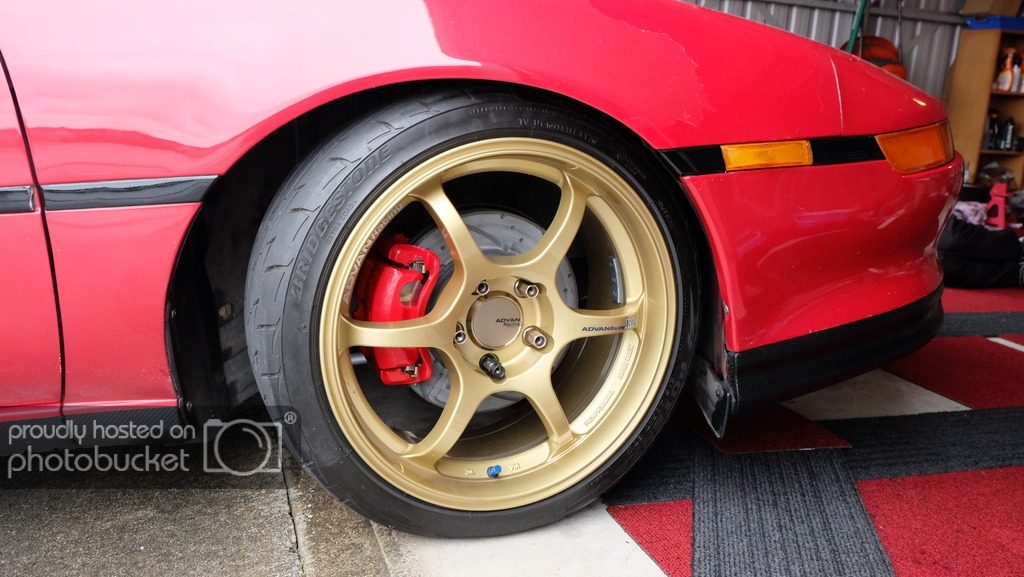
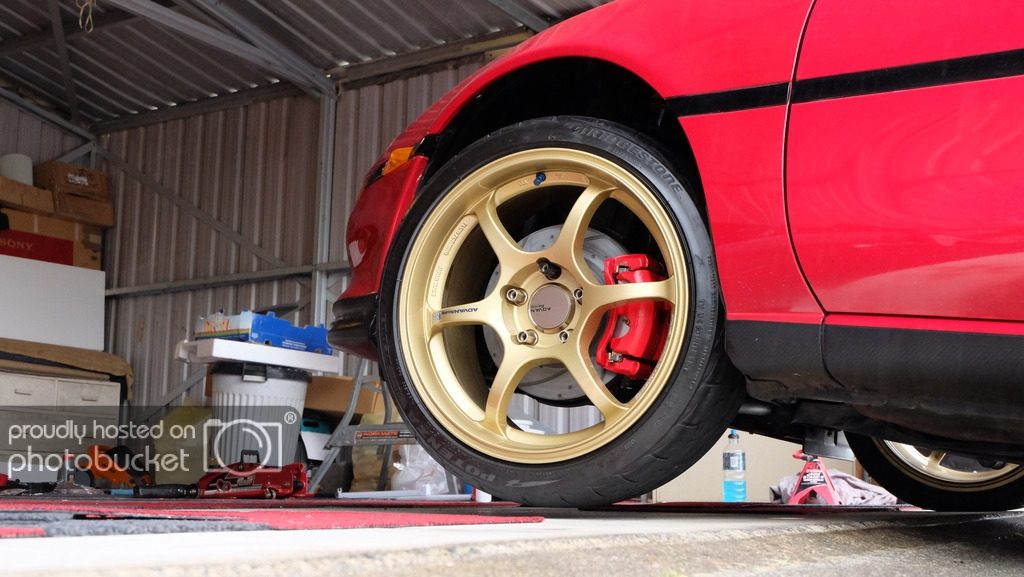
Driving the car out of the garage Elmo decided to lift a wheel. Gotta love those Whiteline adjustable swaybars.
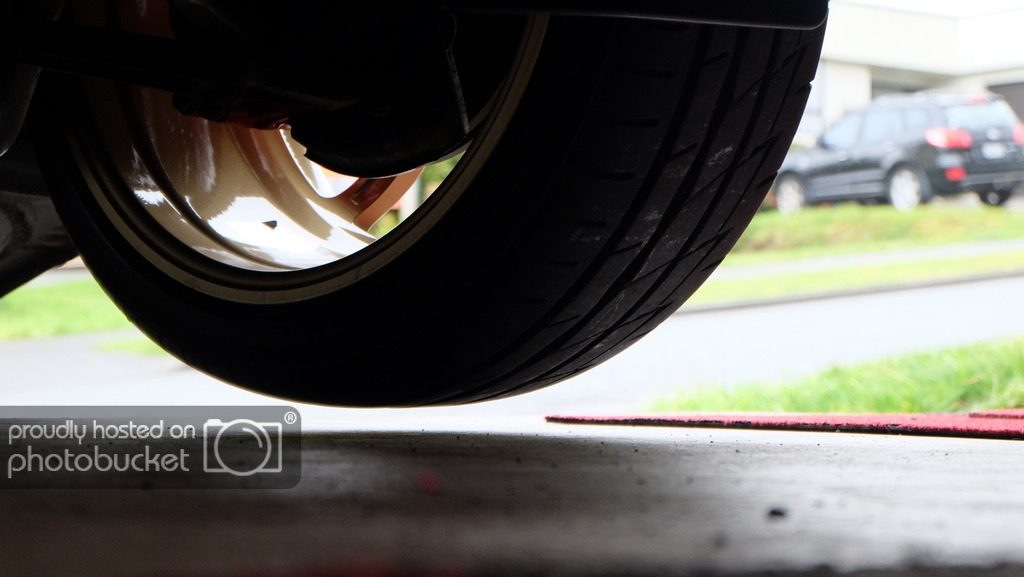

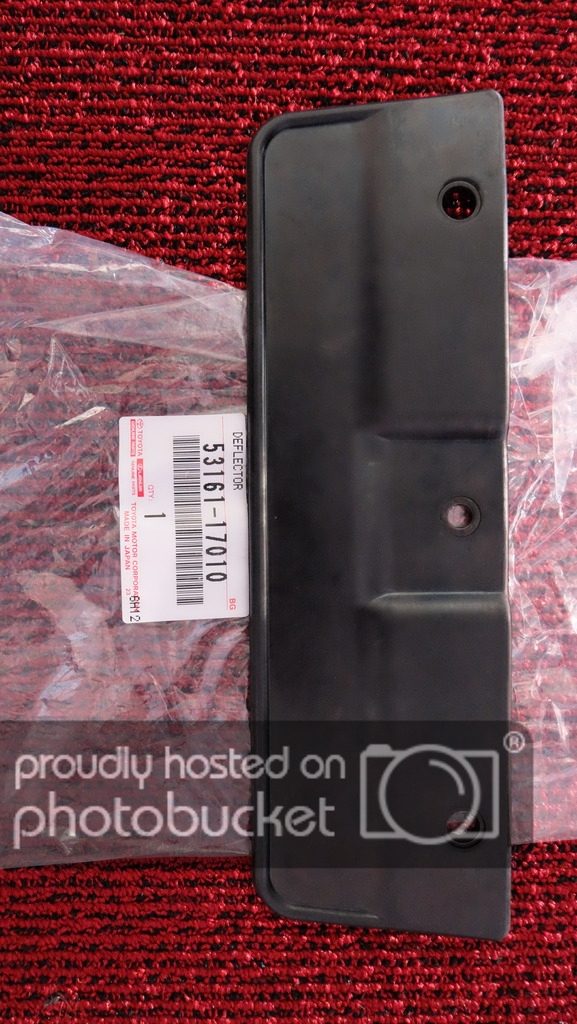
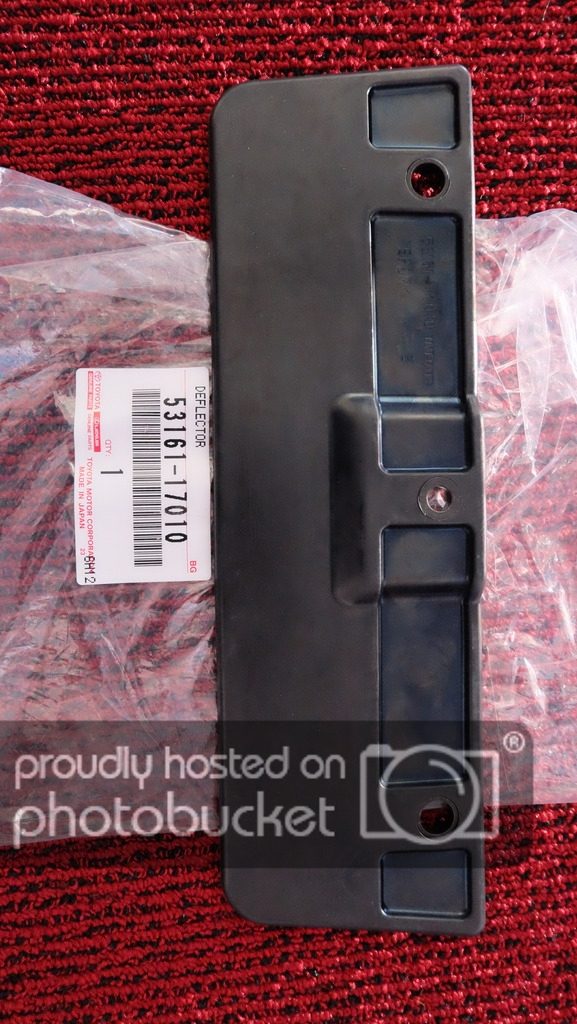
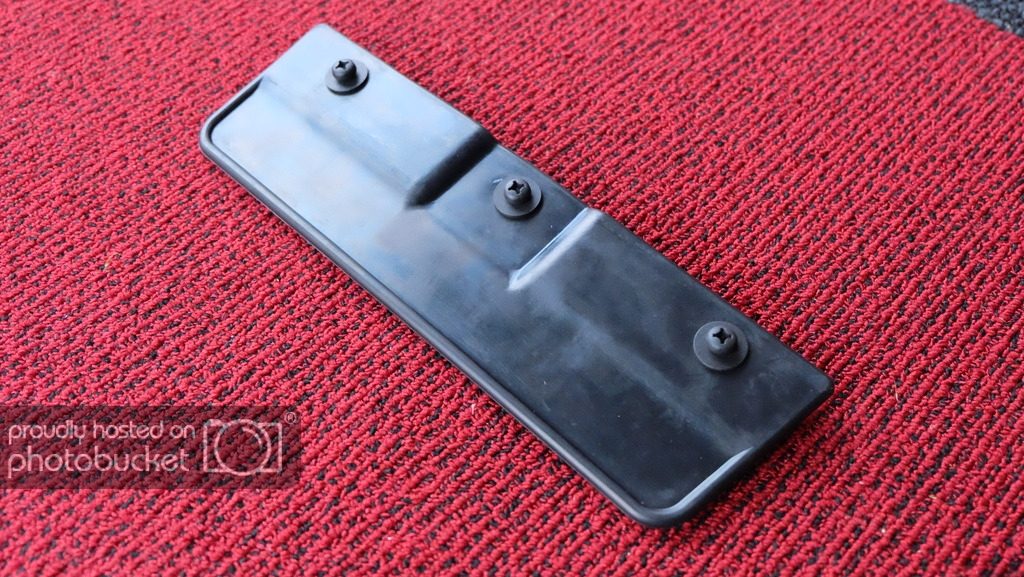
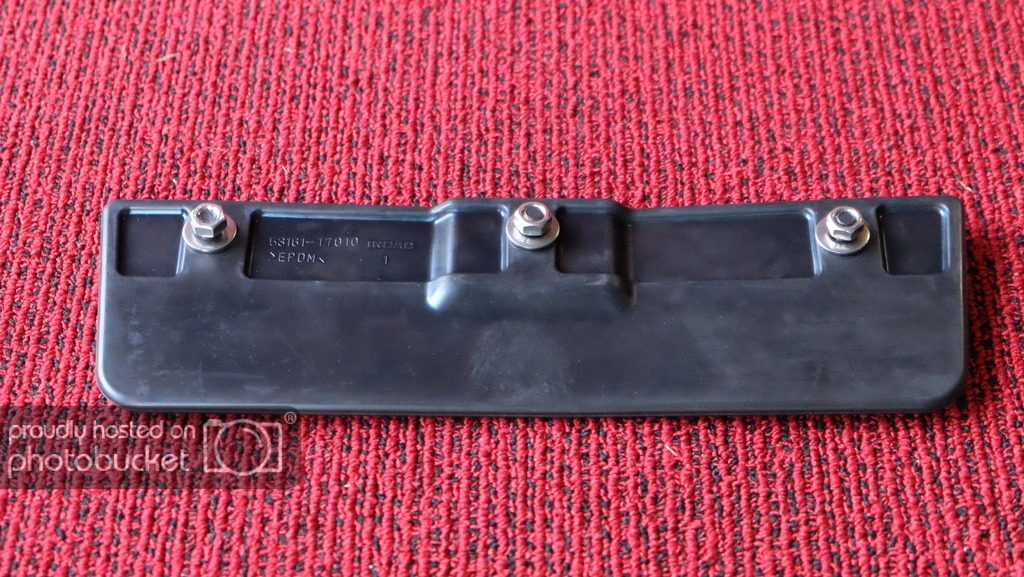
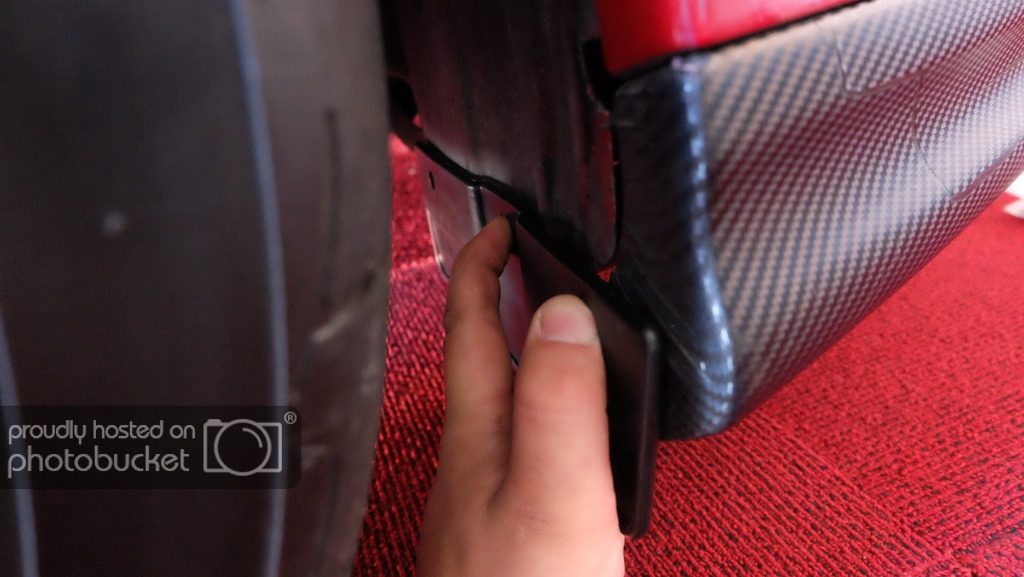
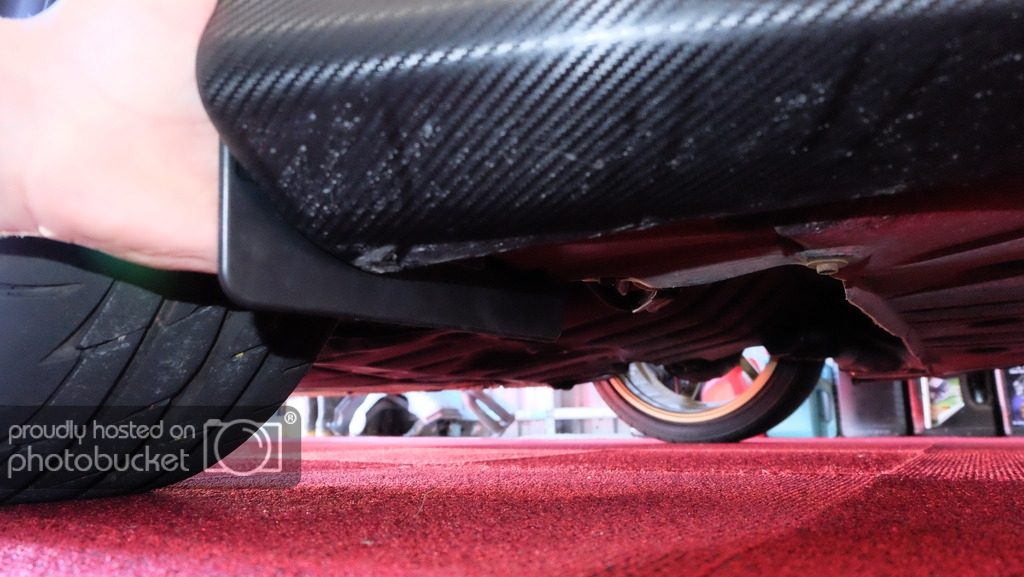
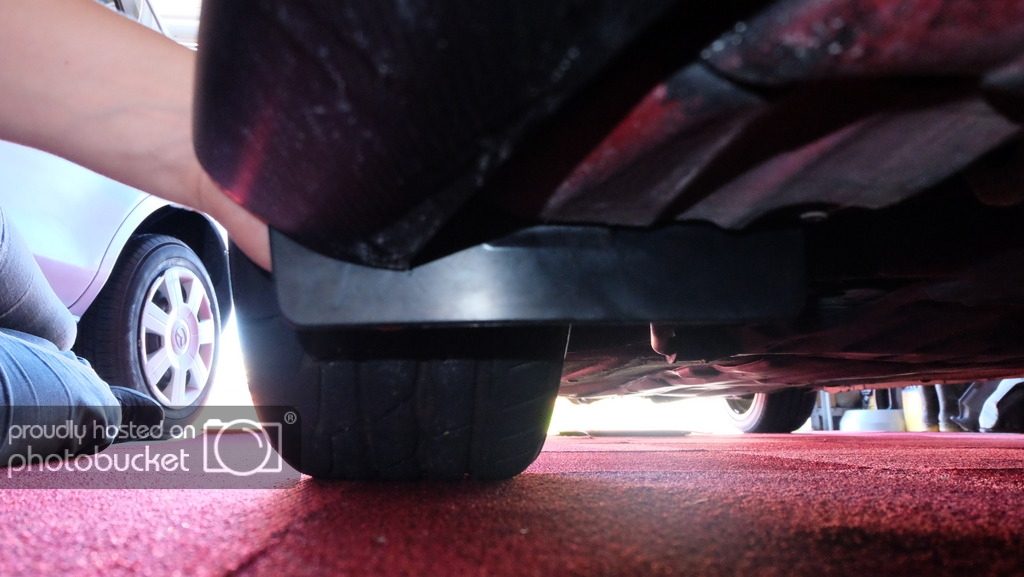
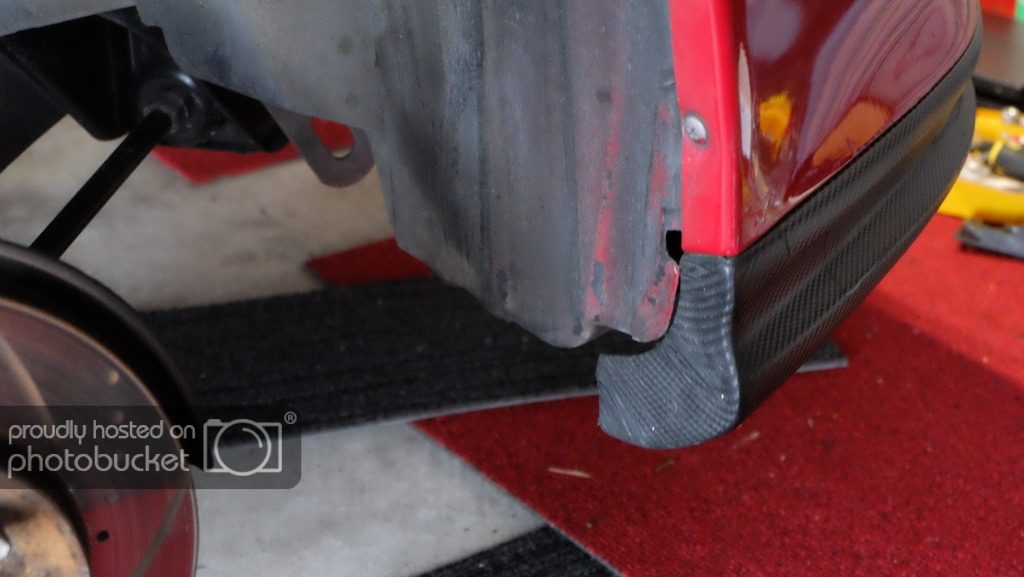
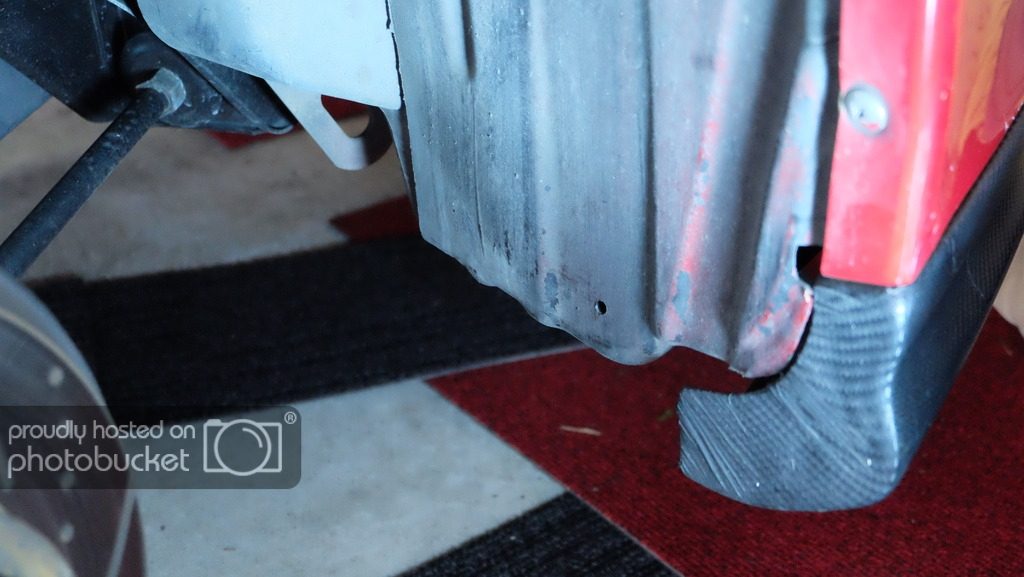
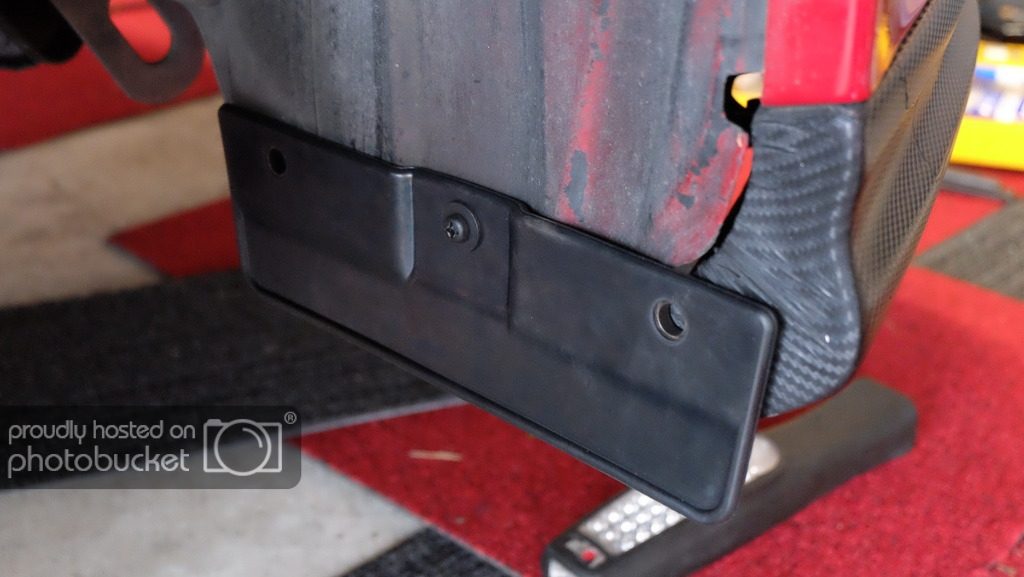
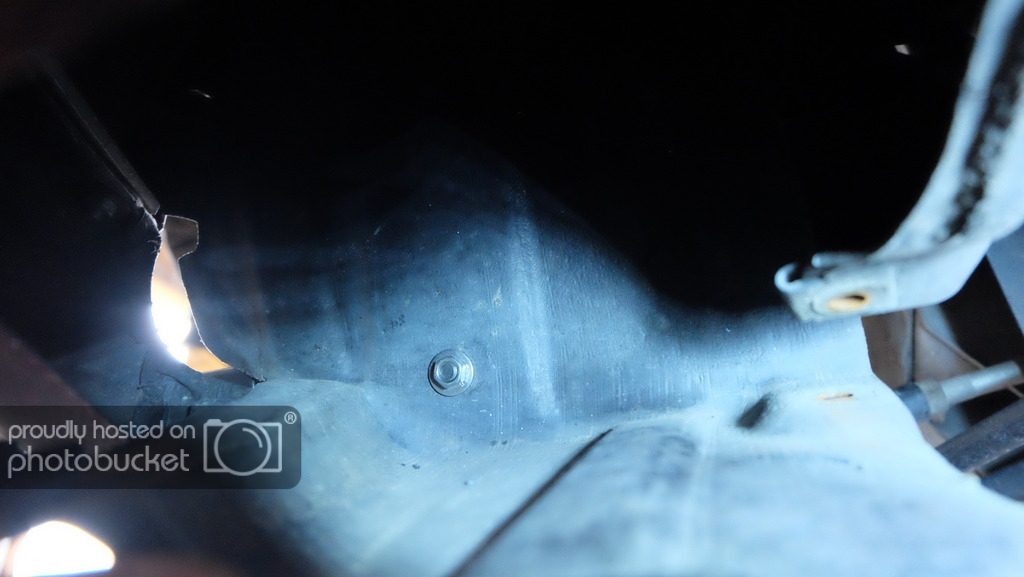
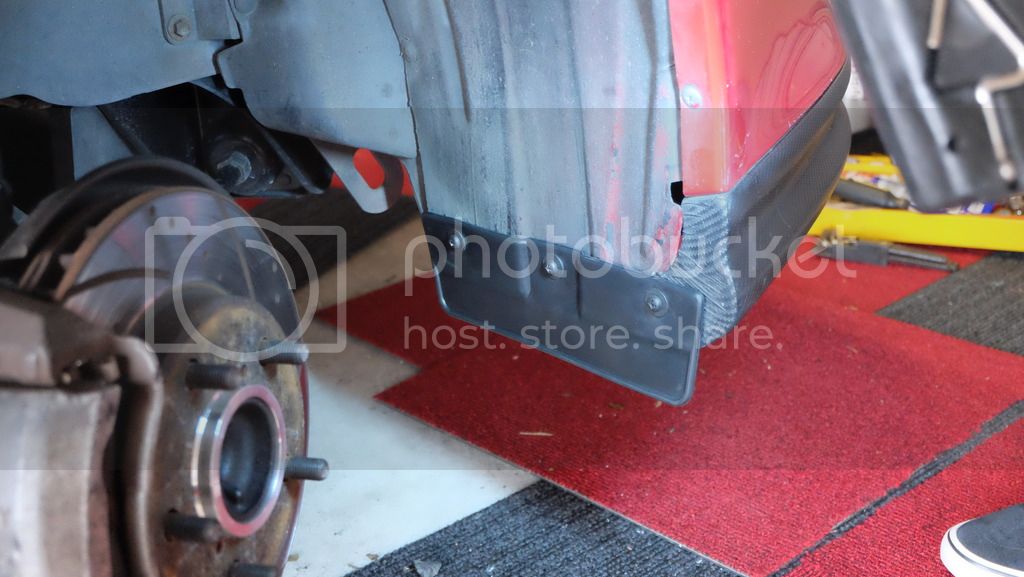
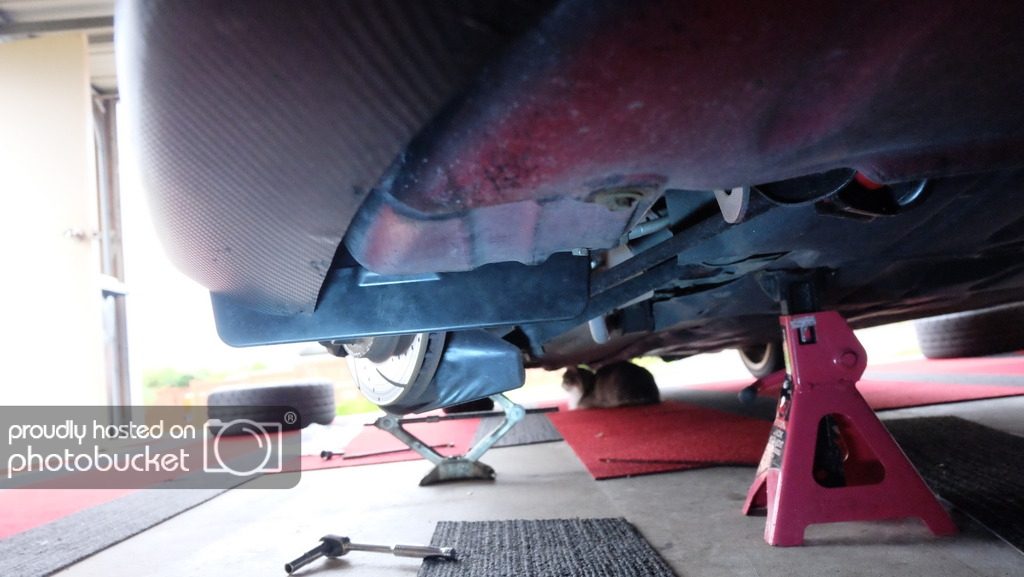
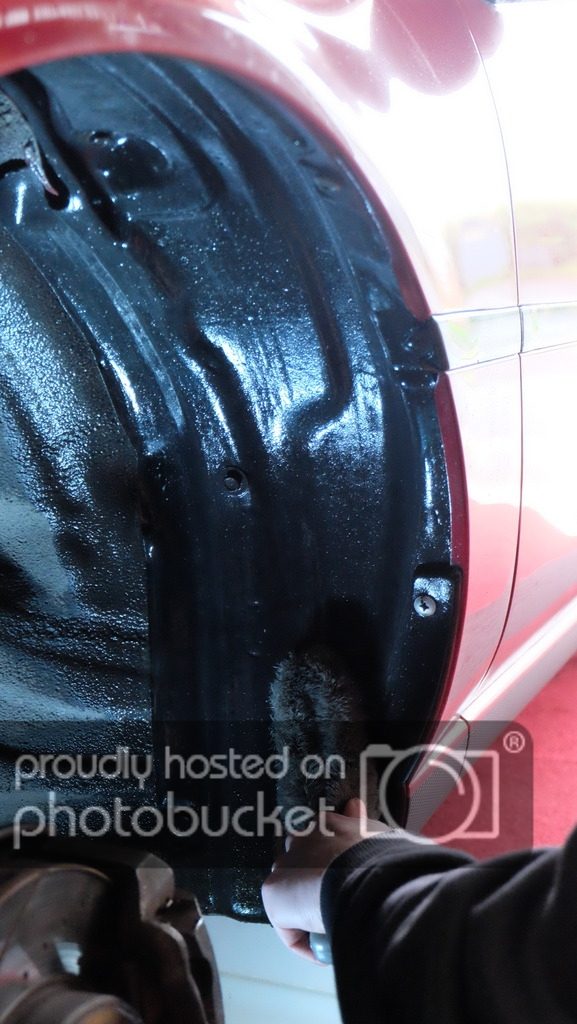
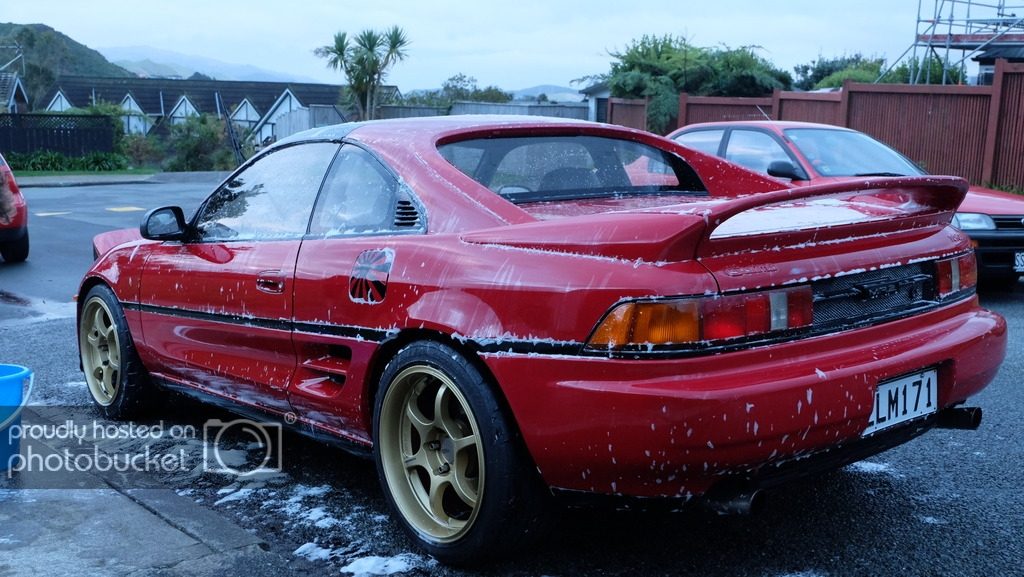
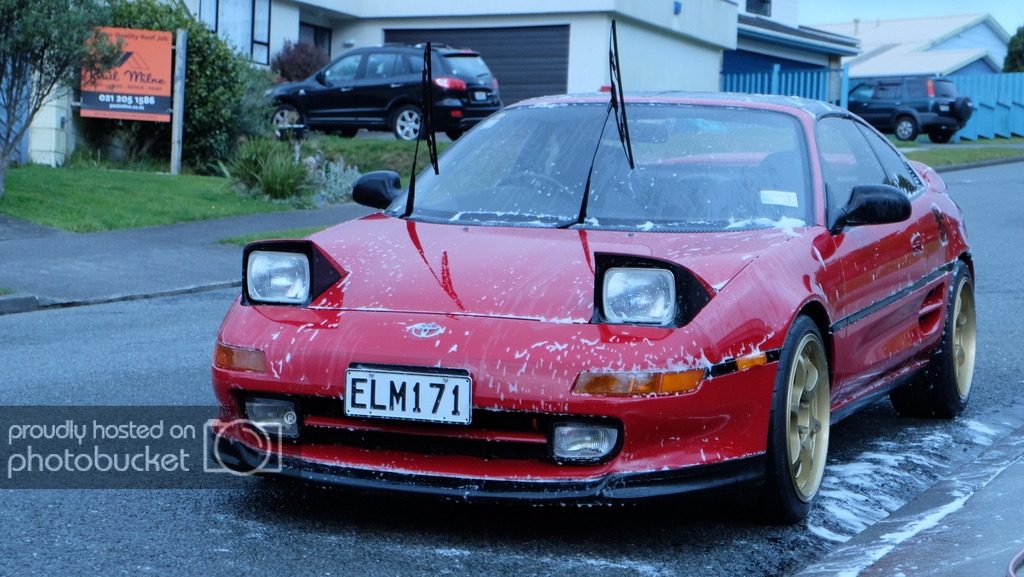
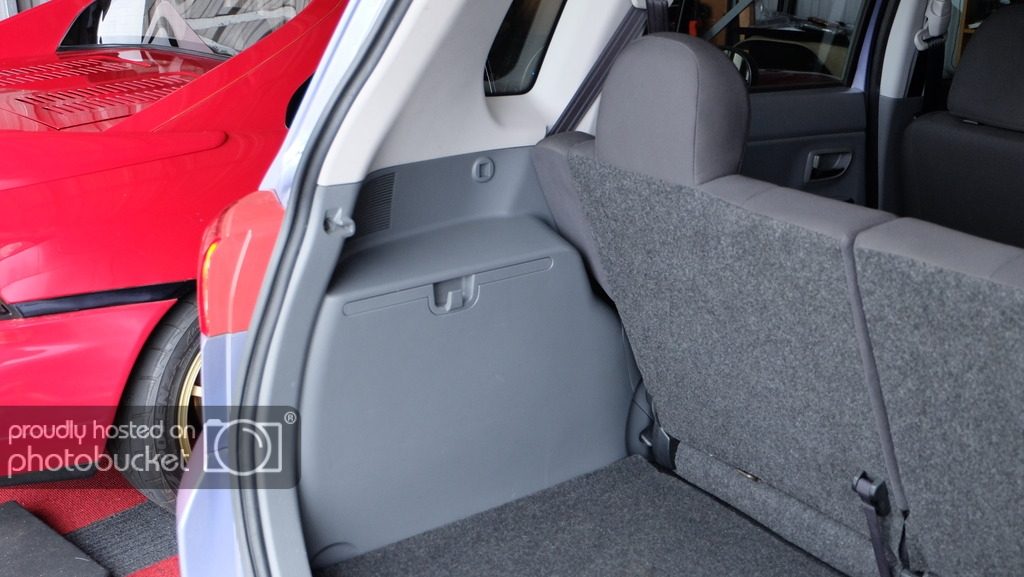
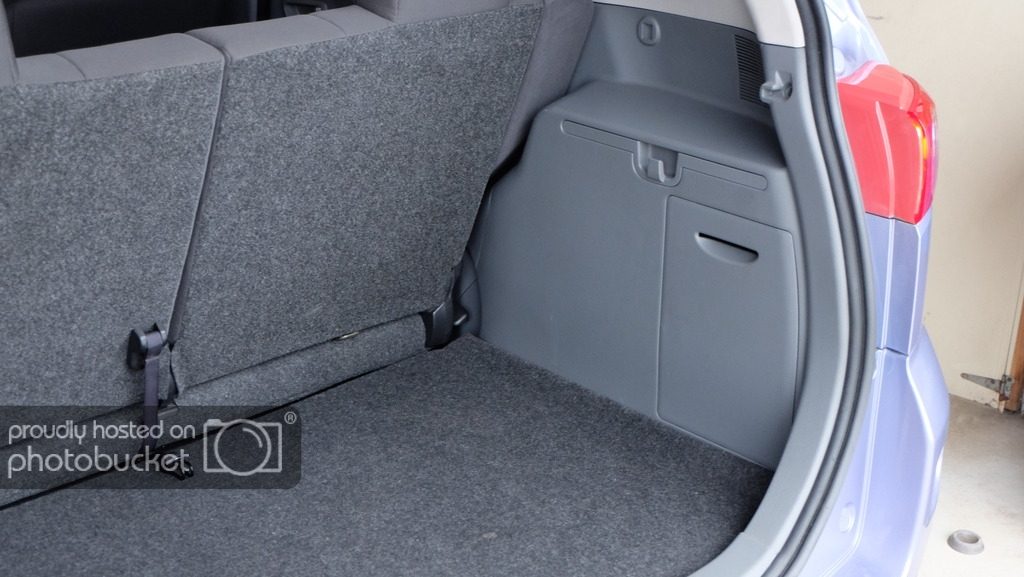

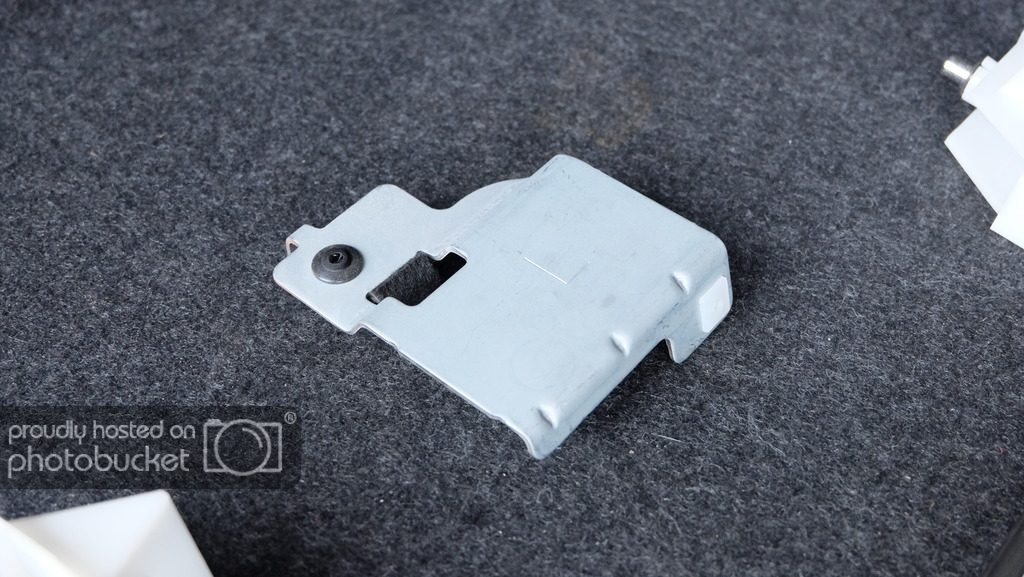
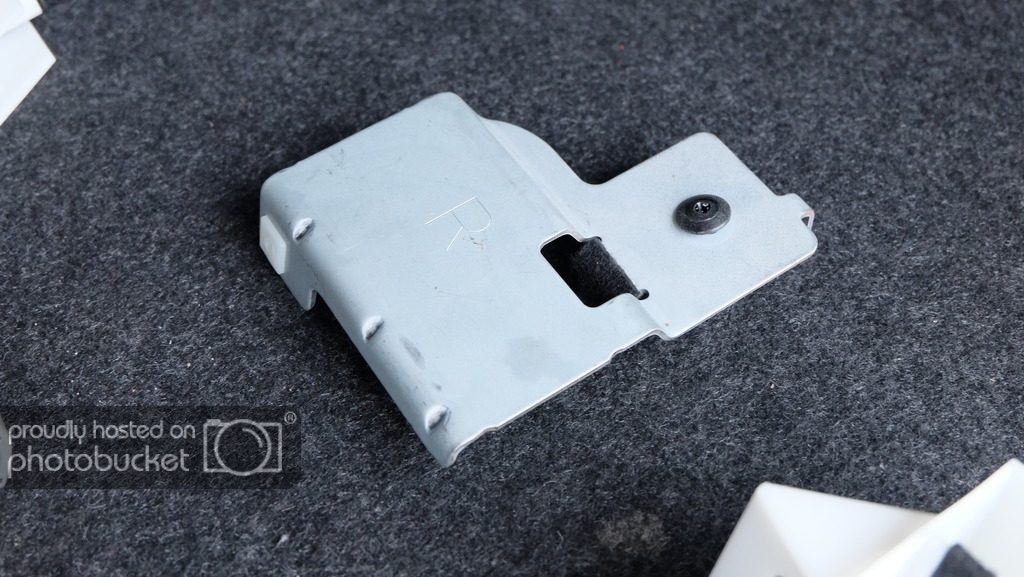
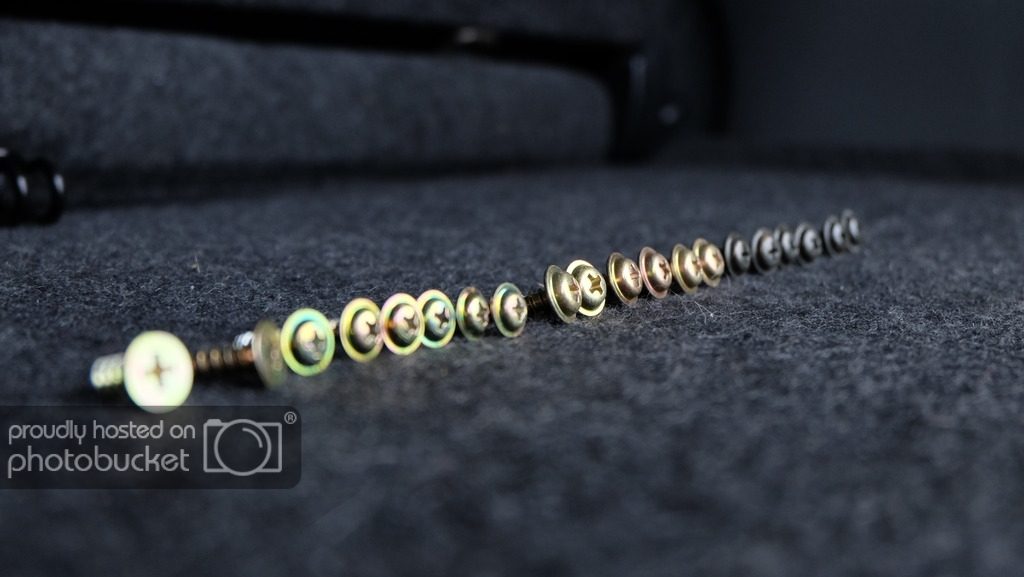
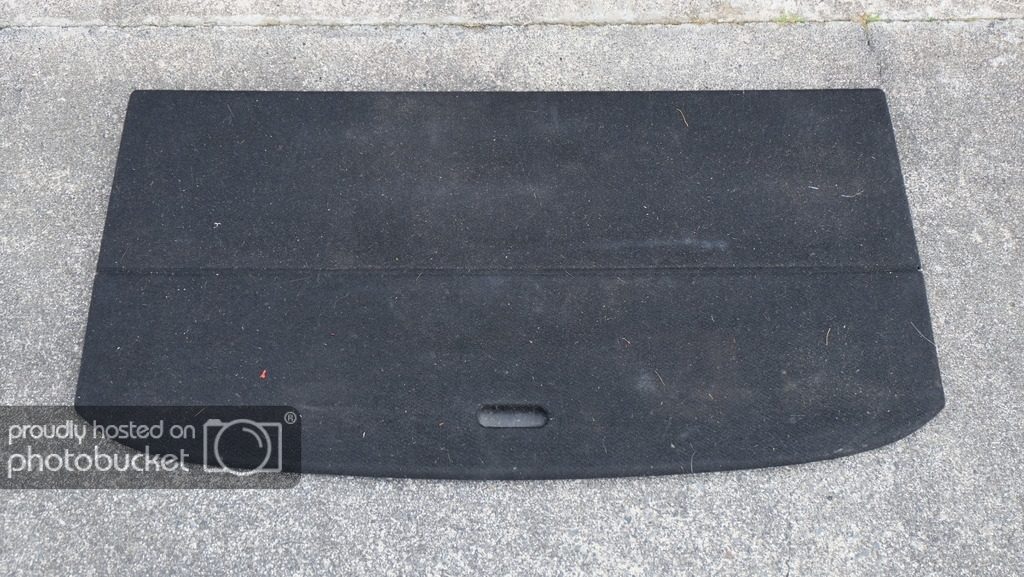
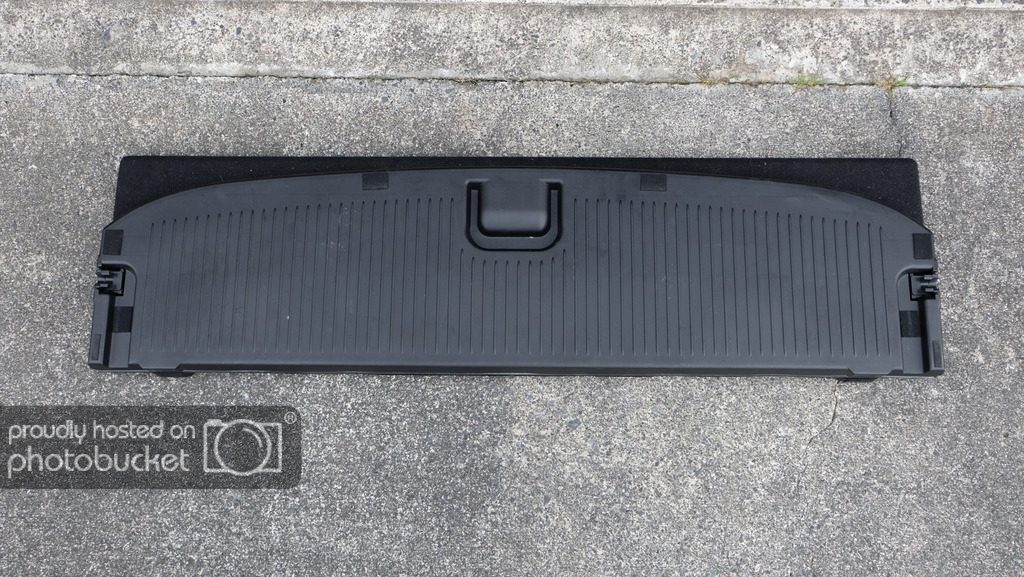
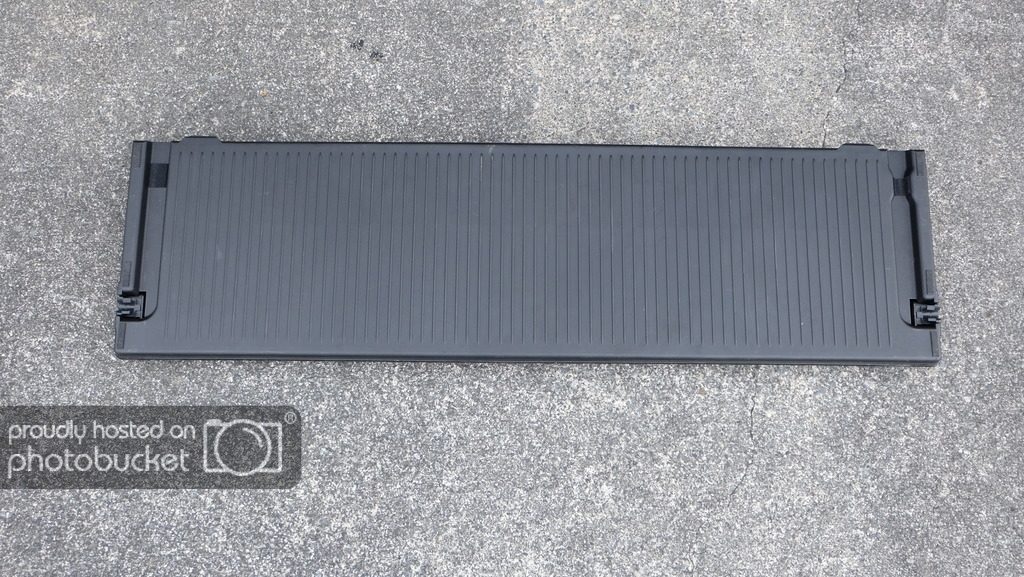
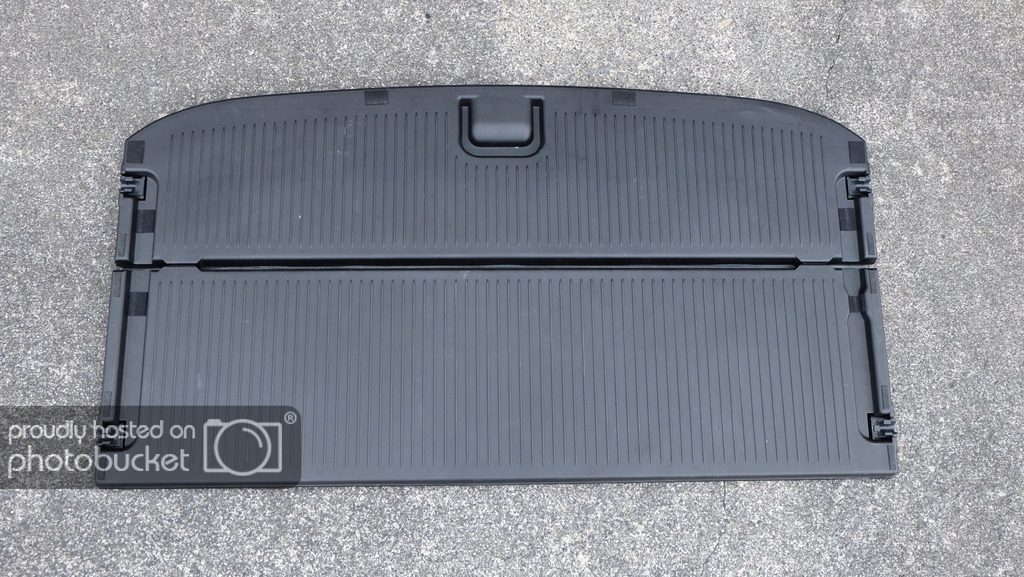
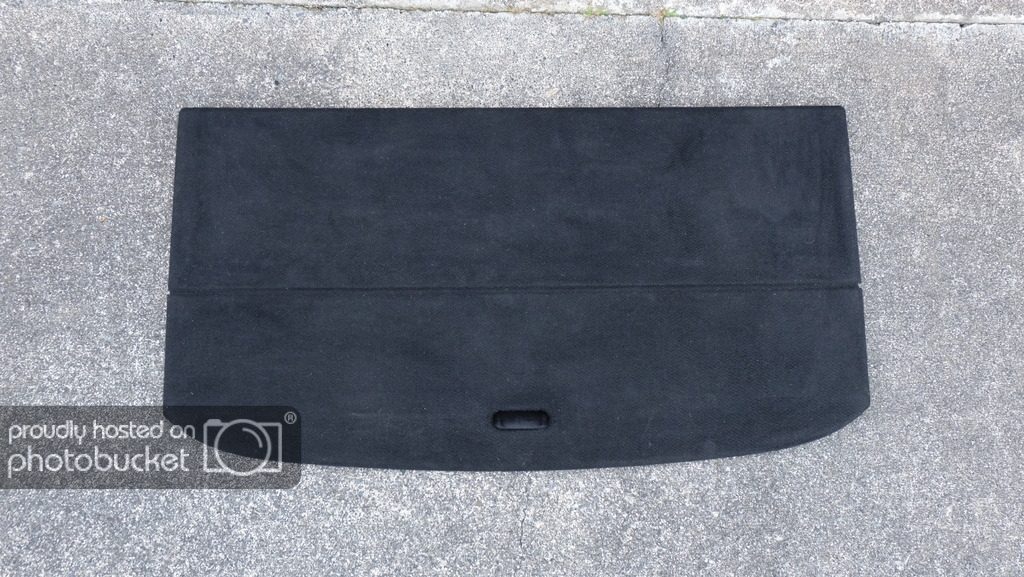
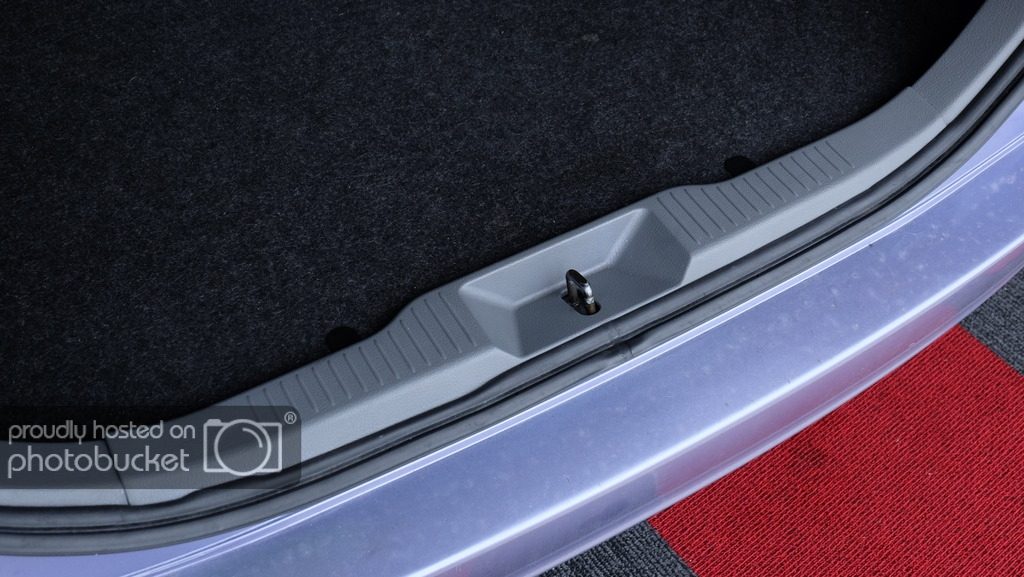
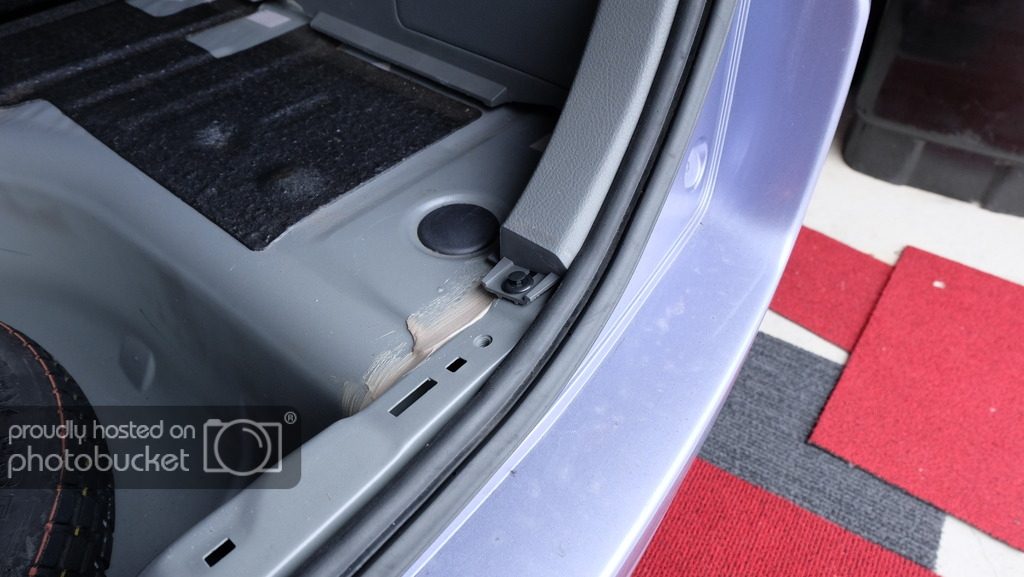
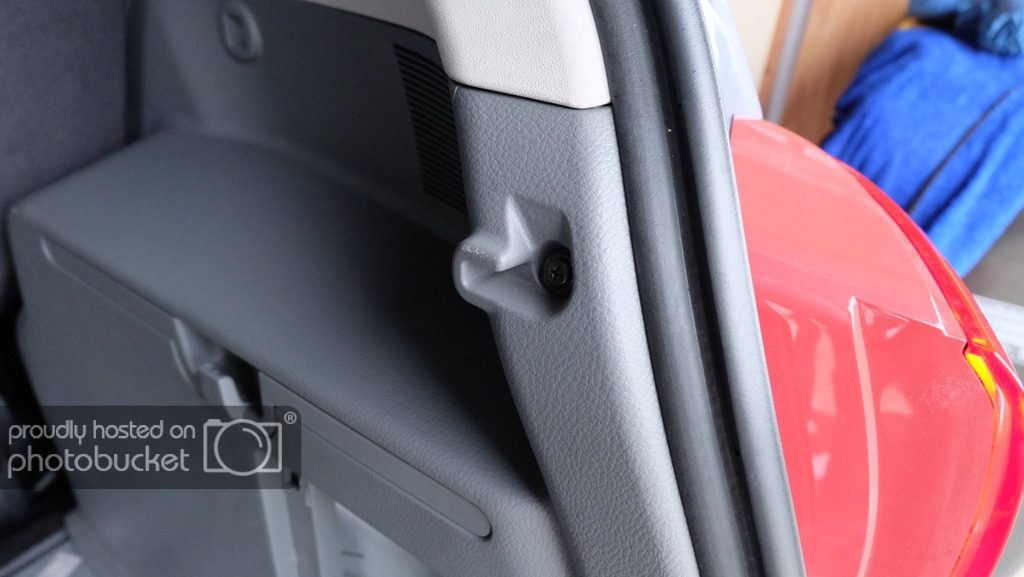
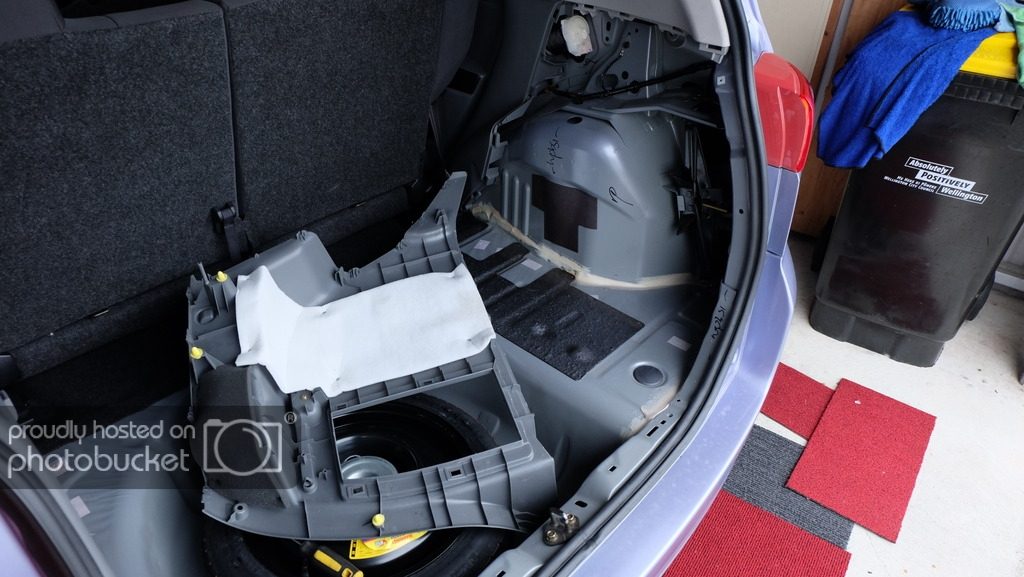
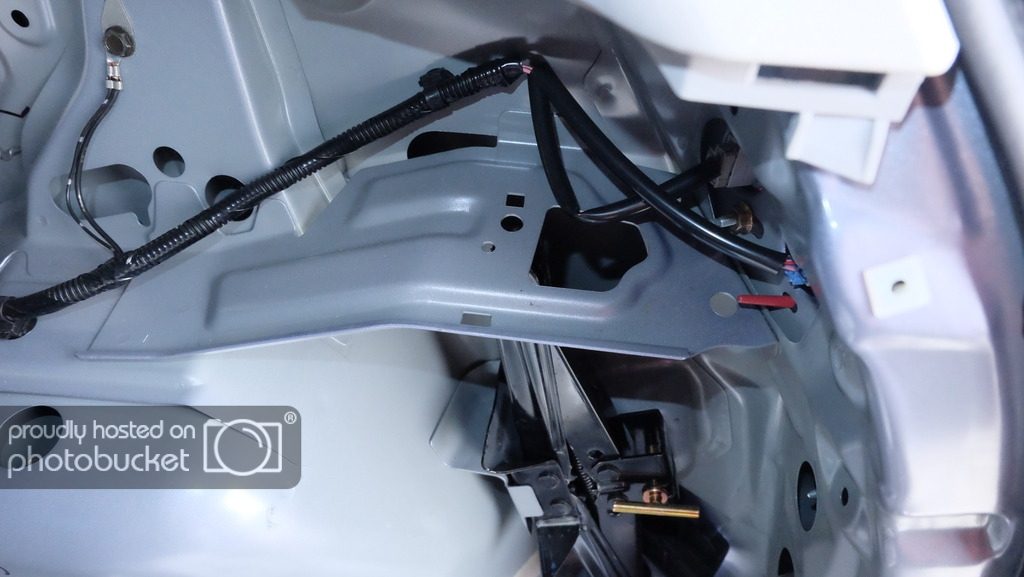
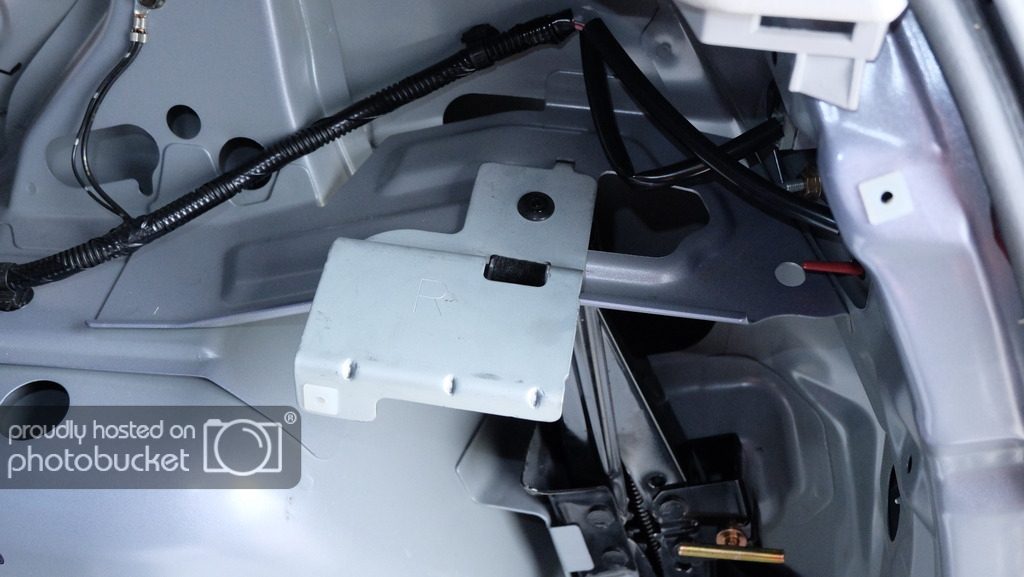
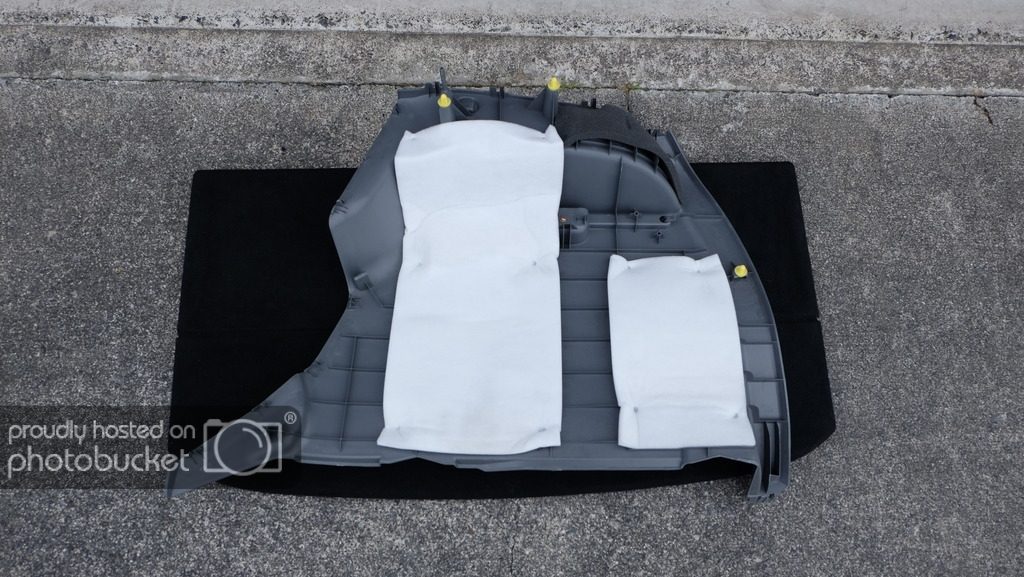
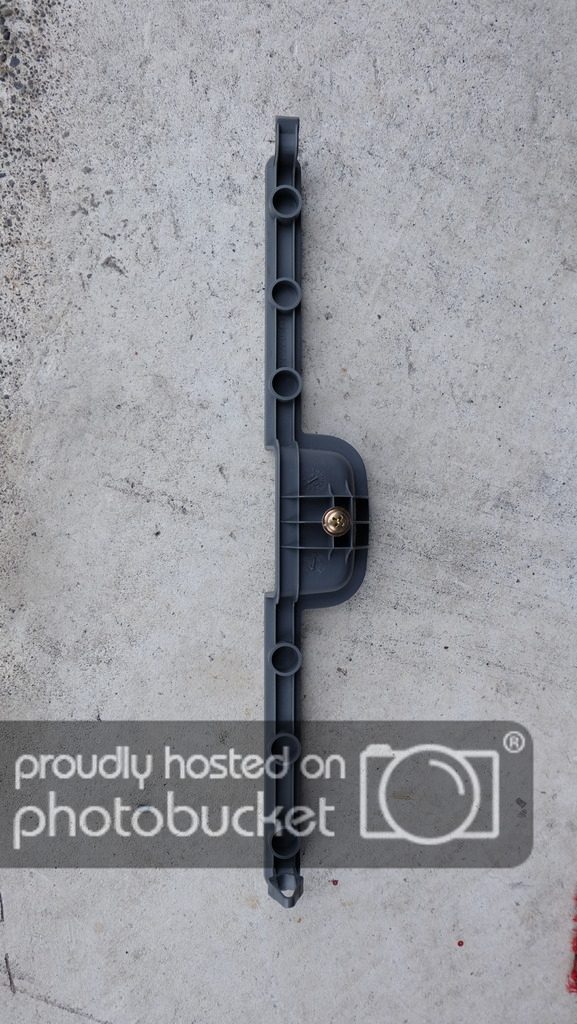
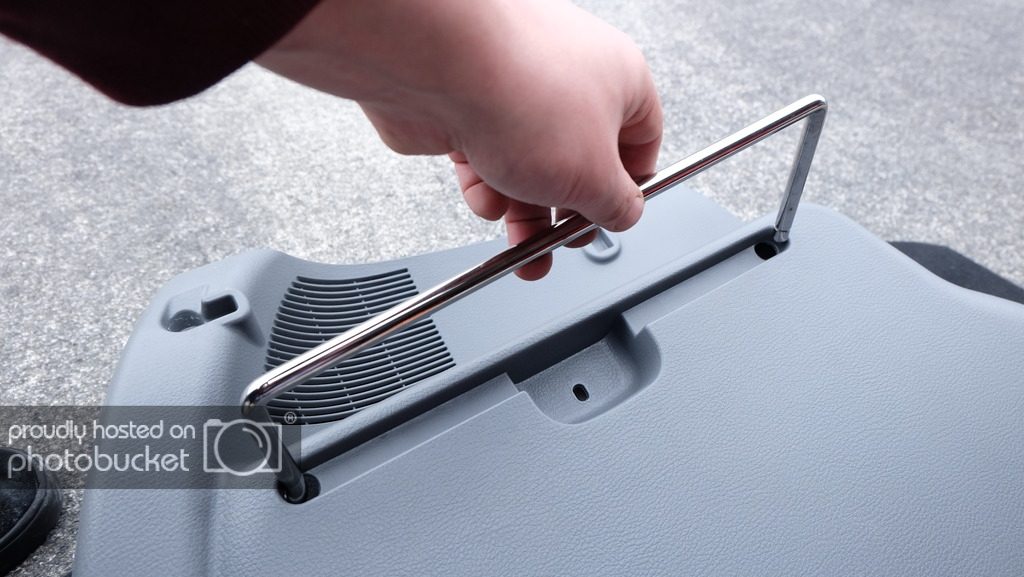
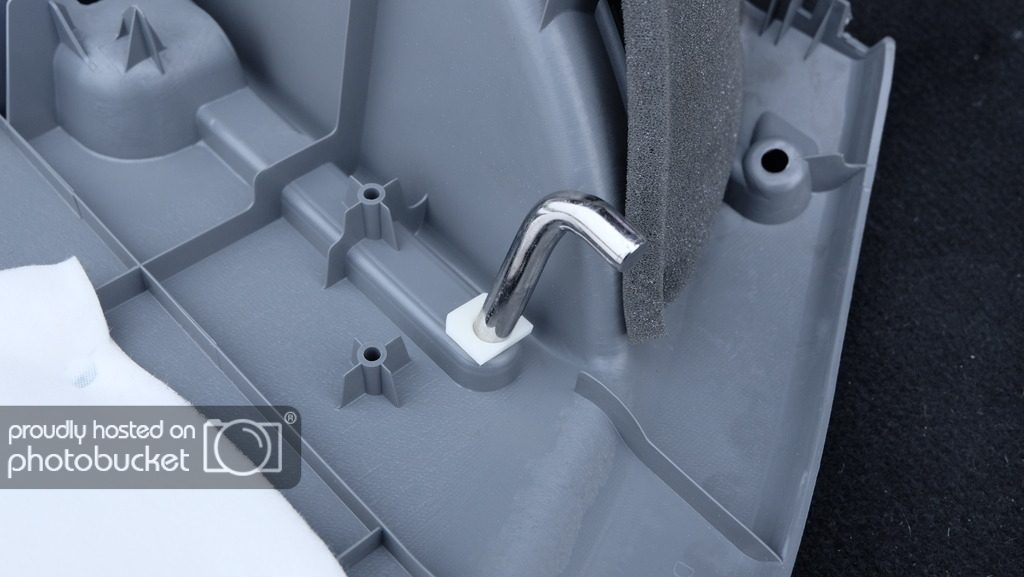
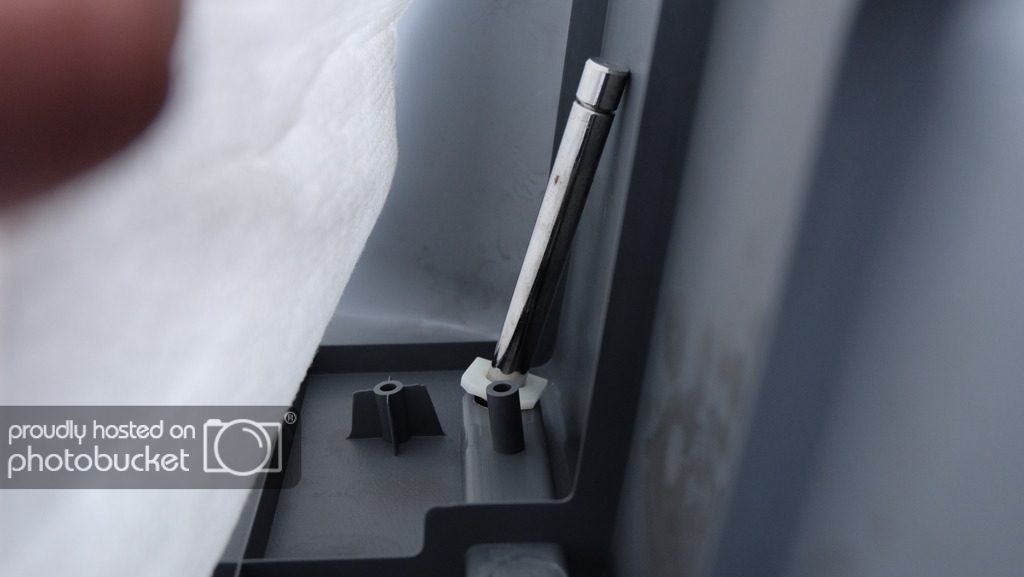
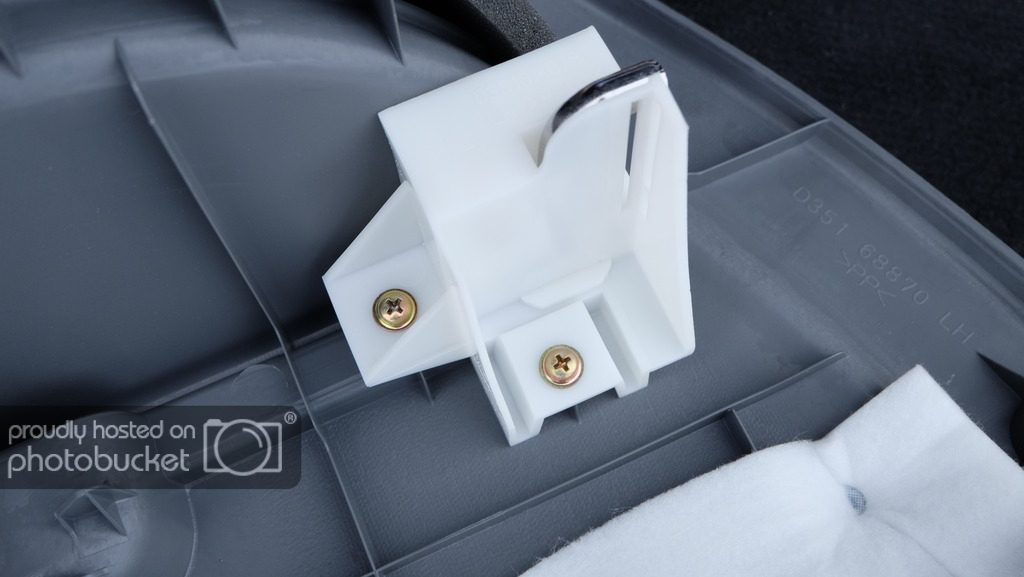
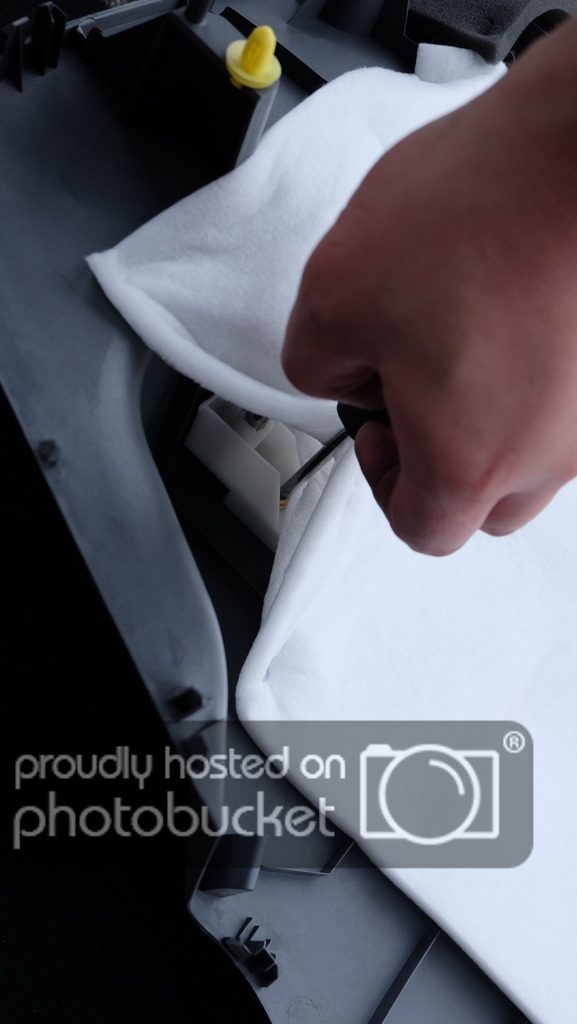
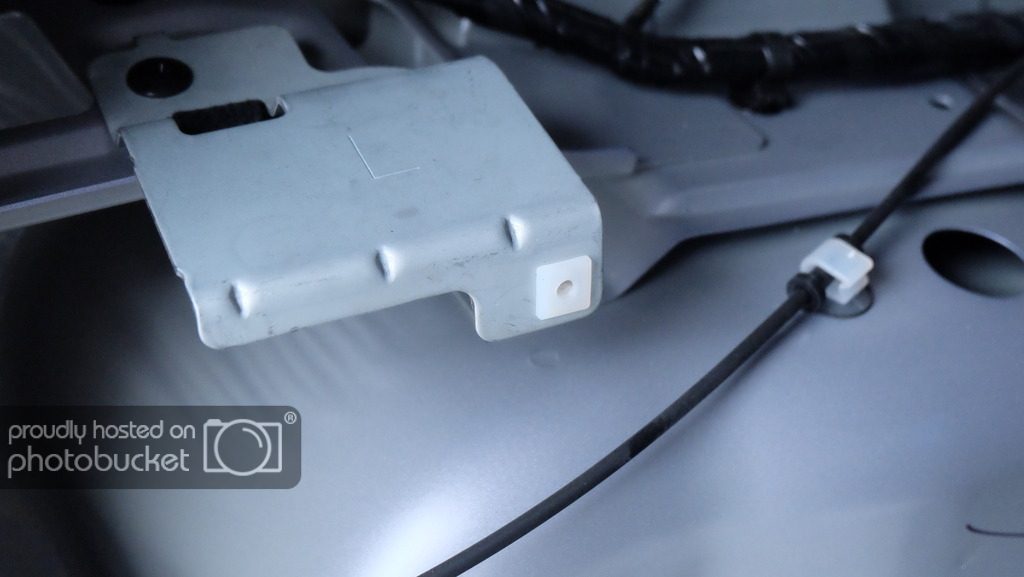
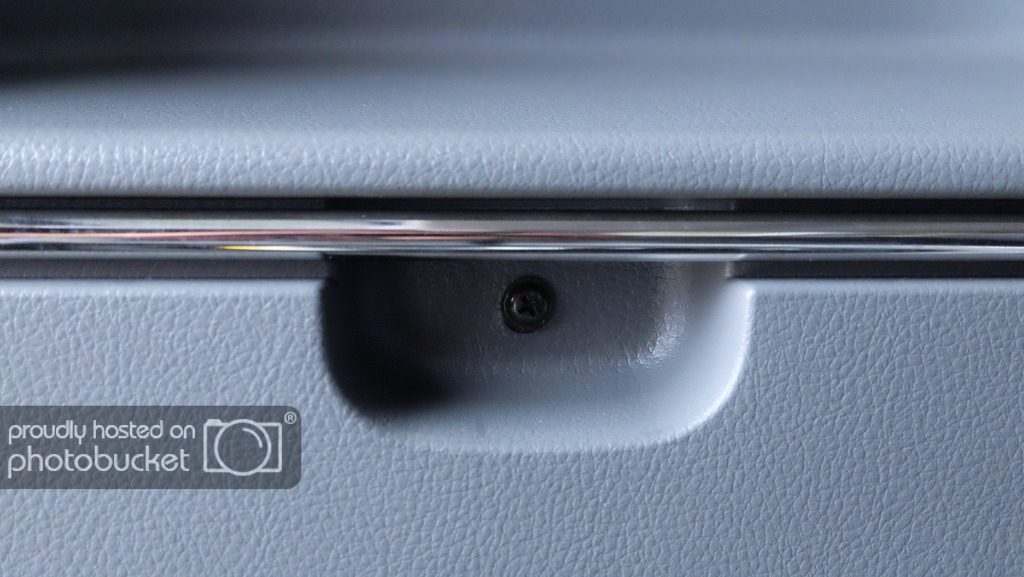
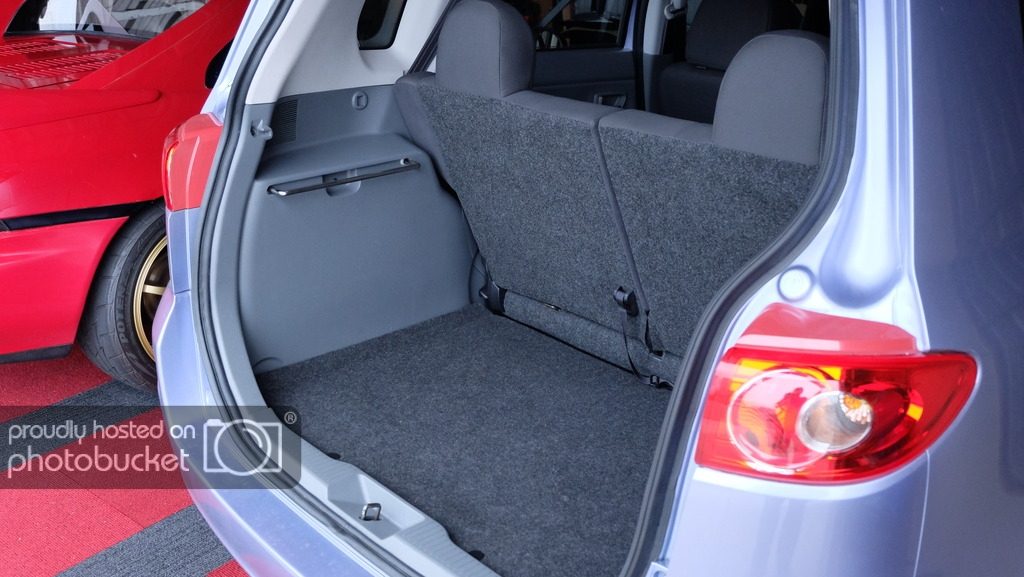
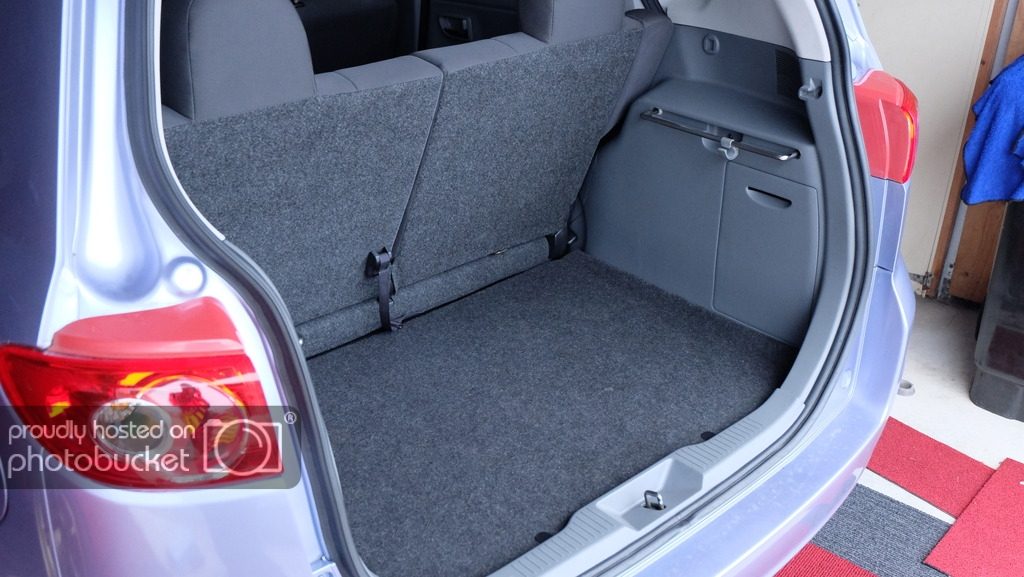
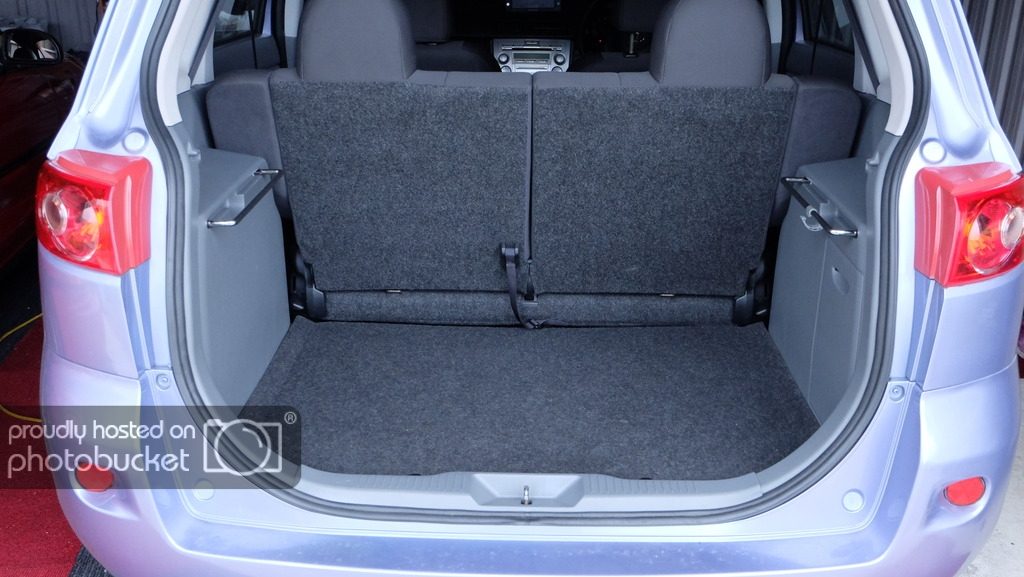
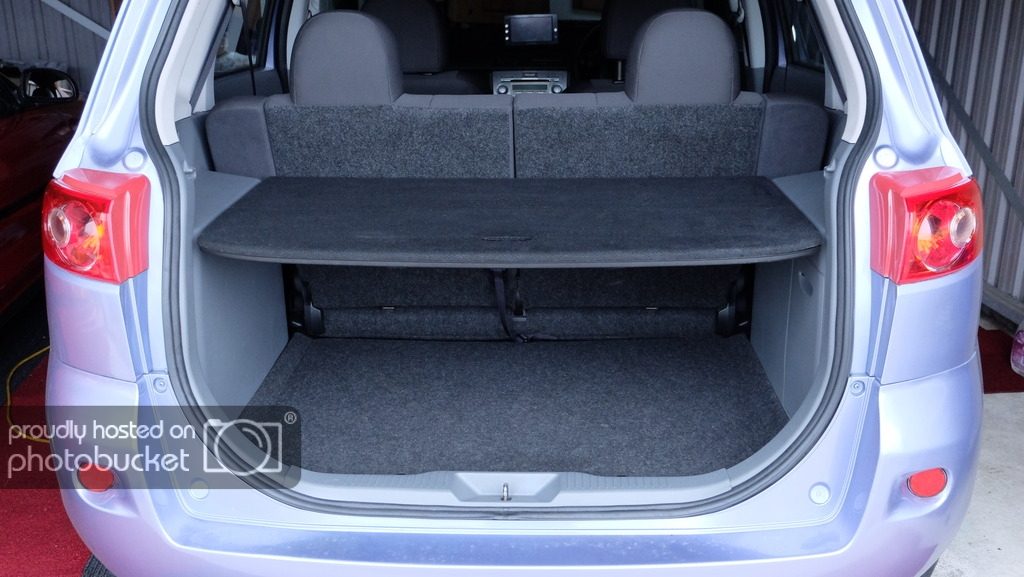
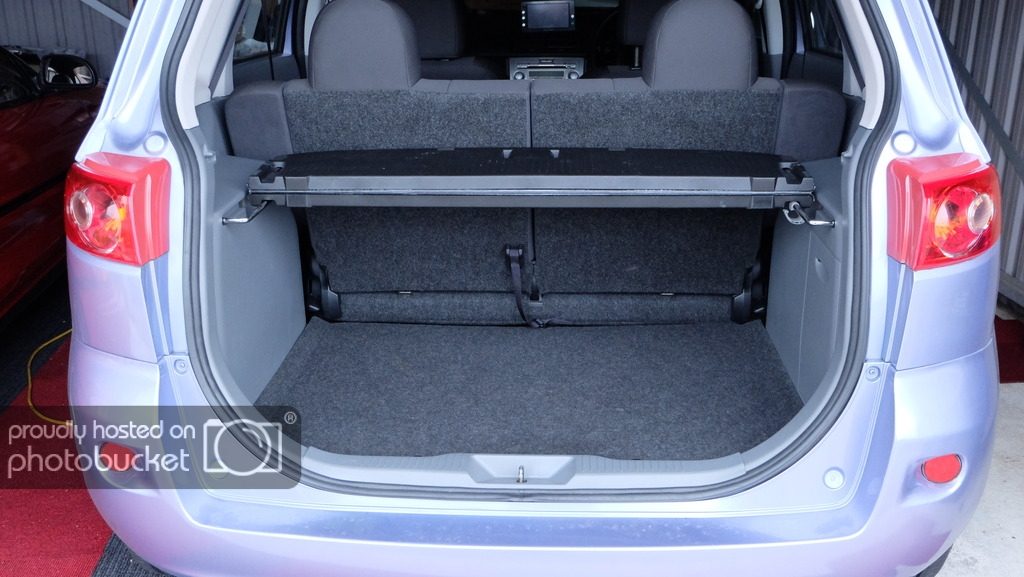
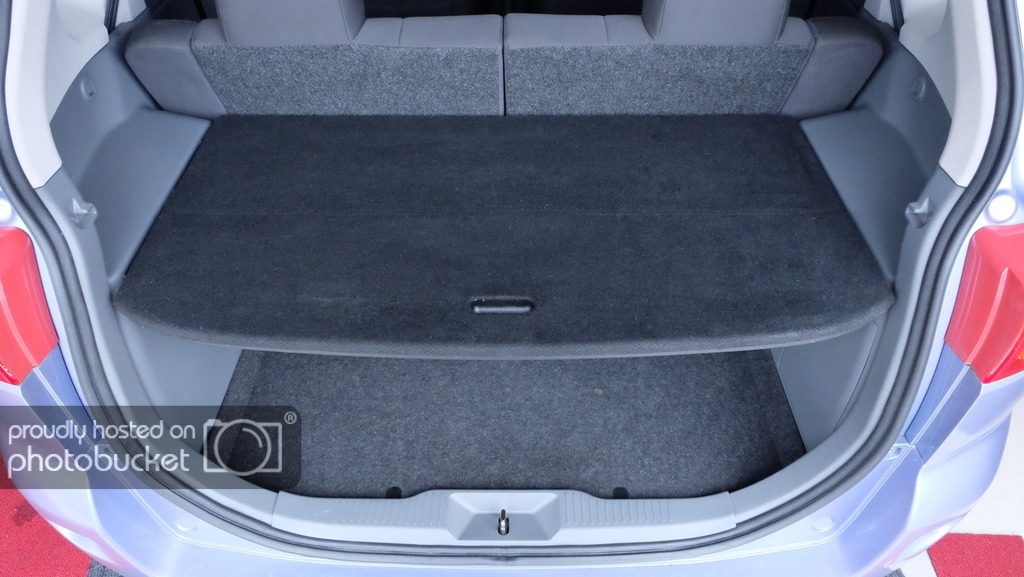
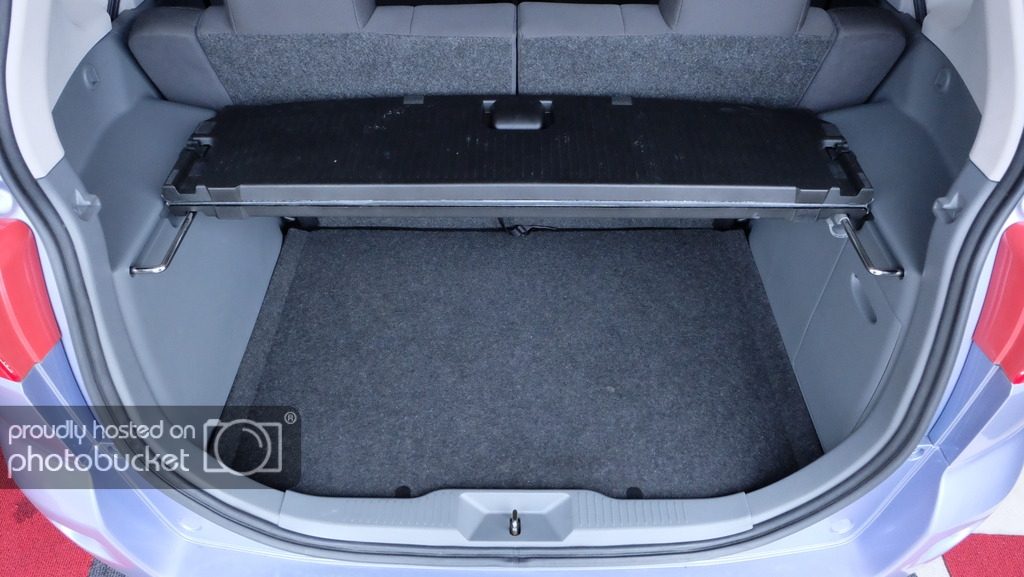
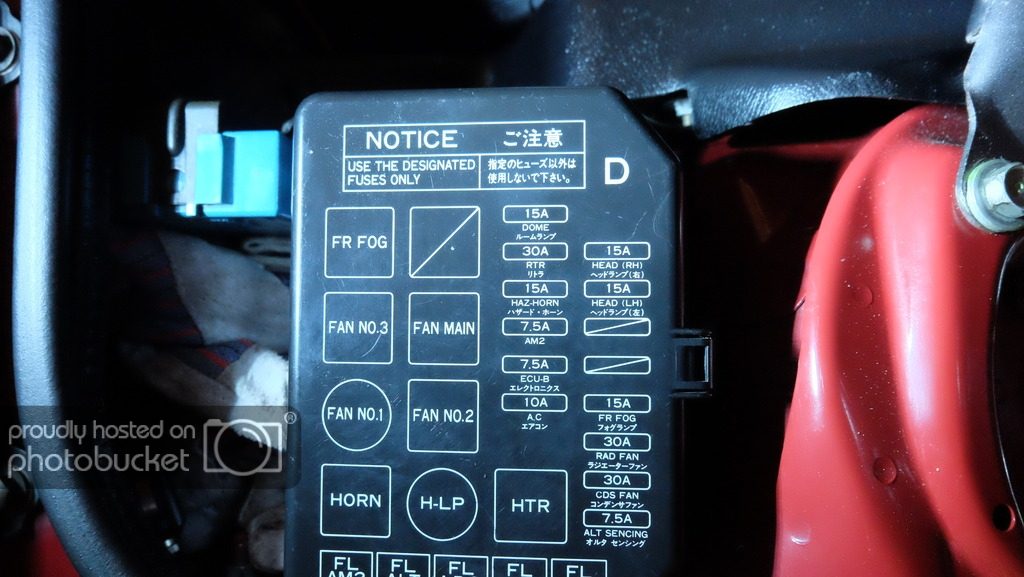
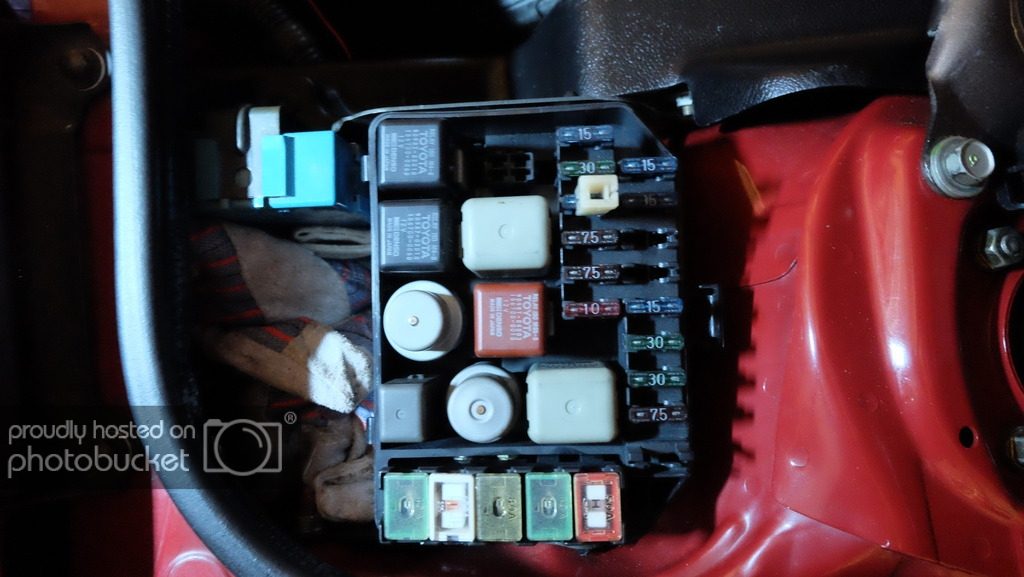
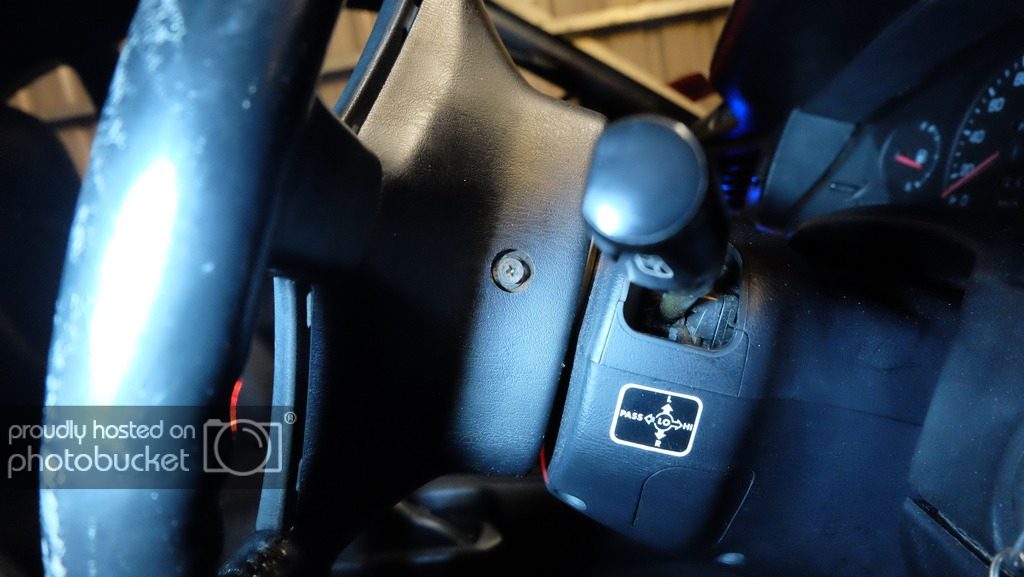
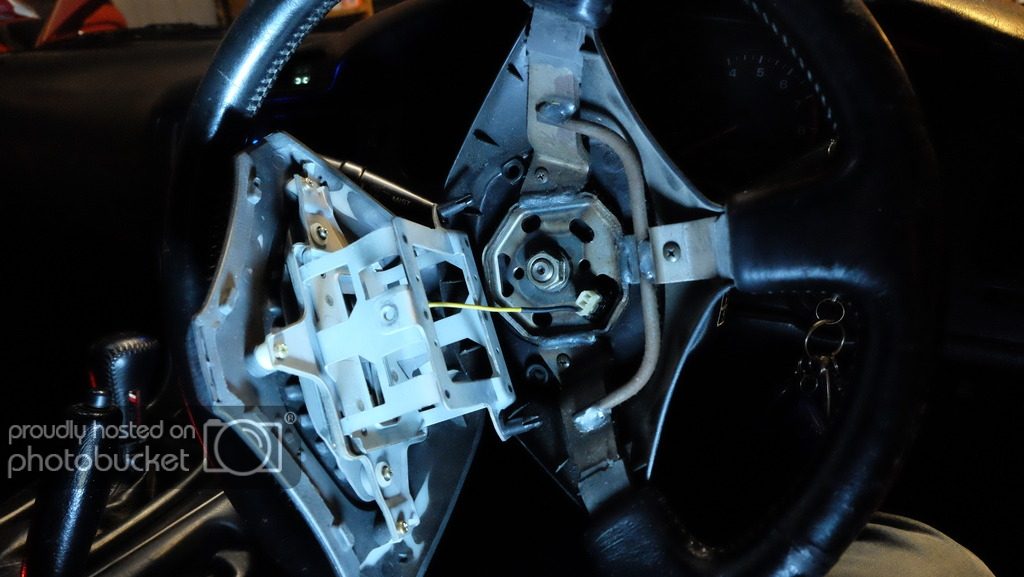
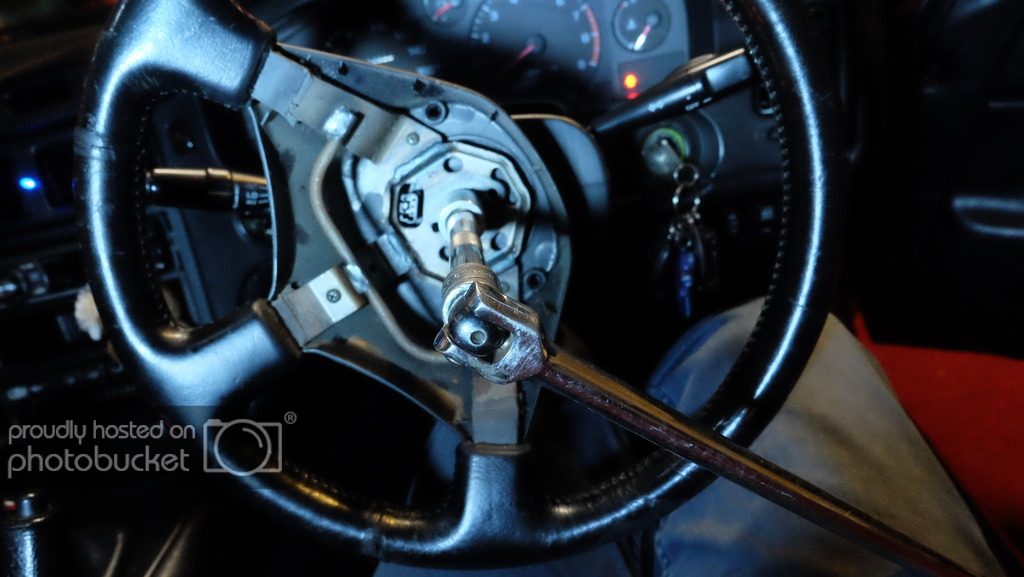
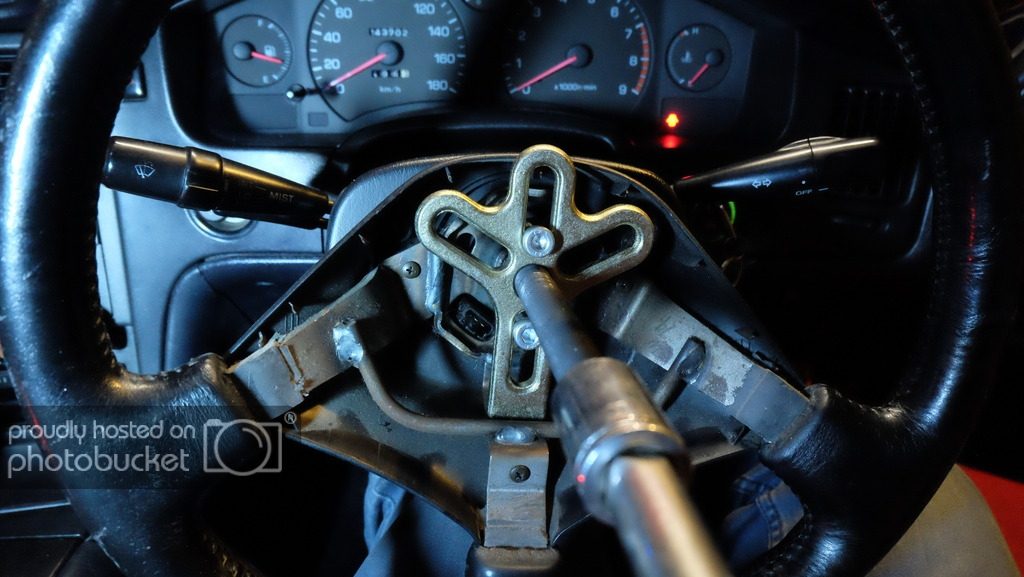
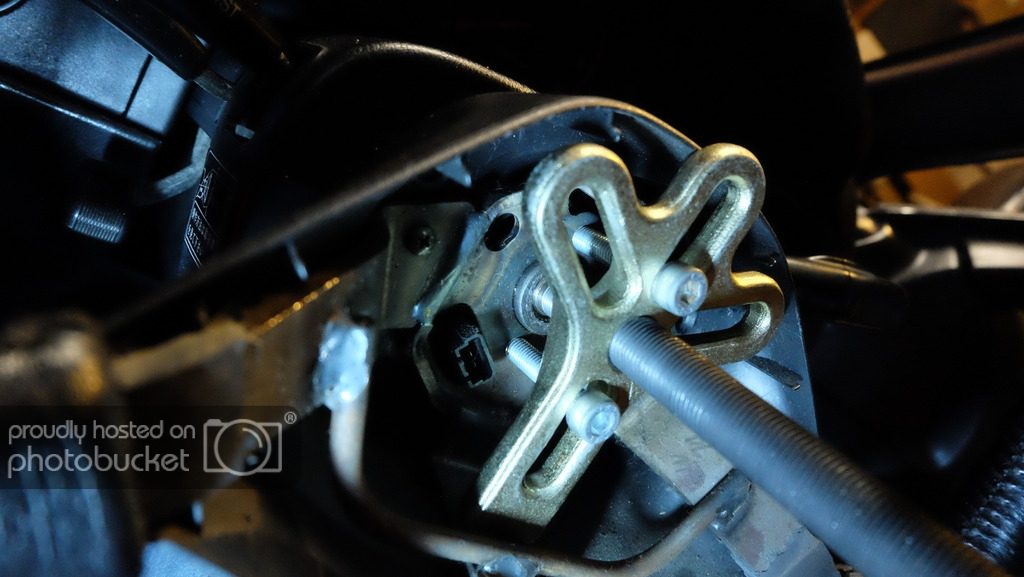
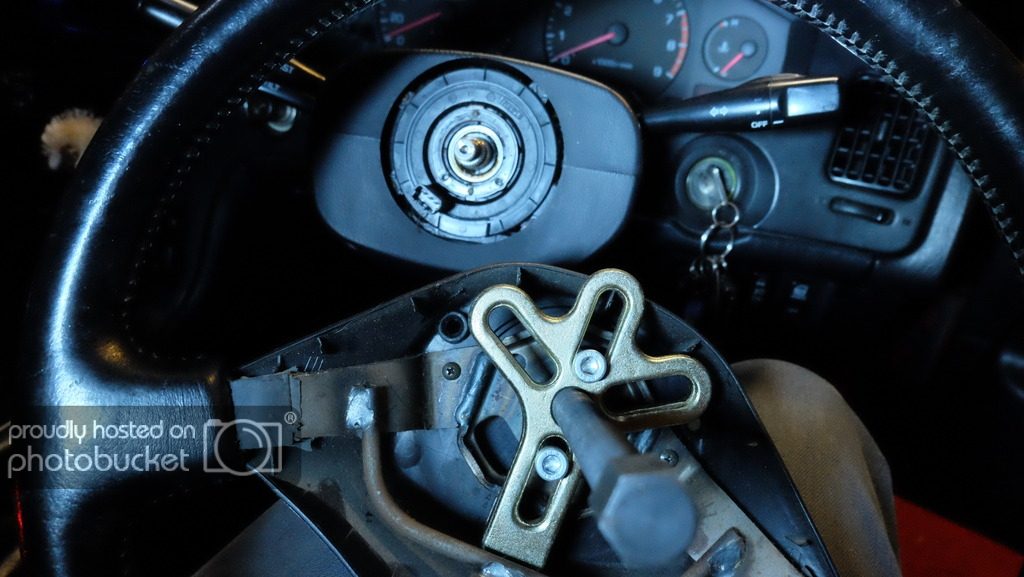
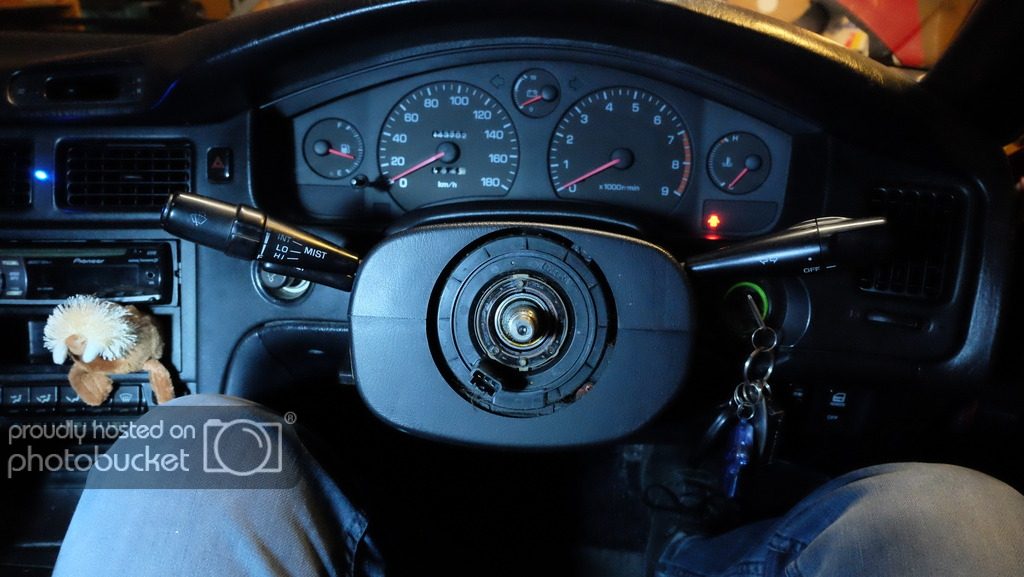
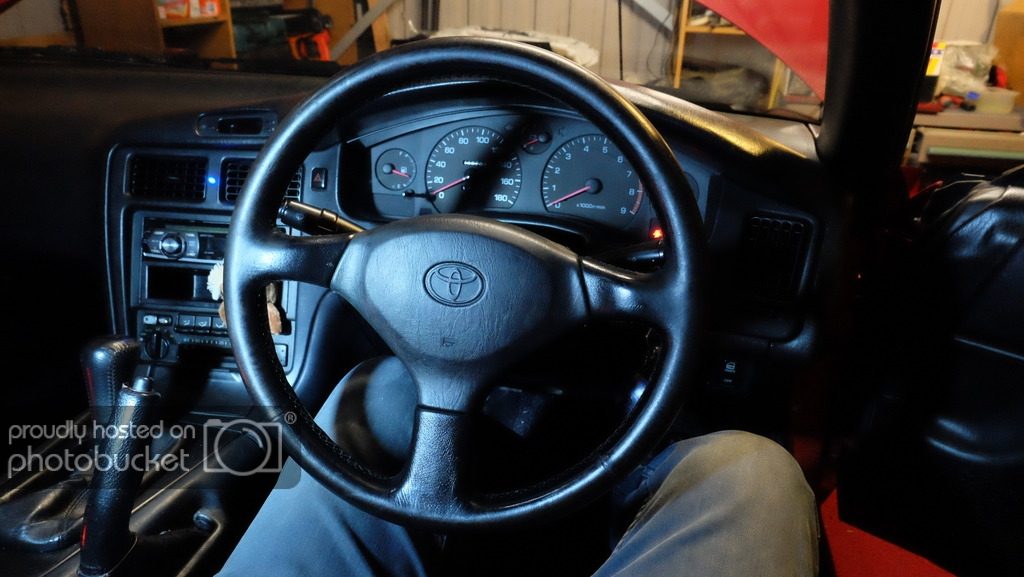
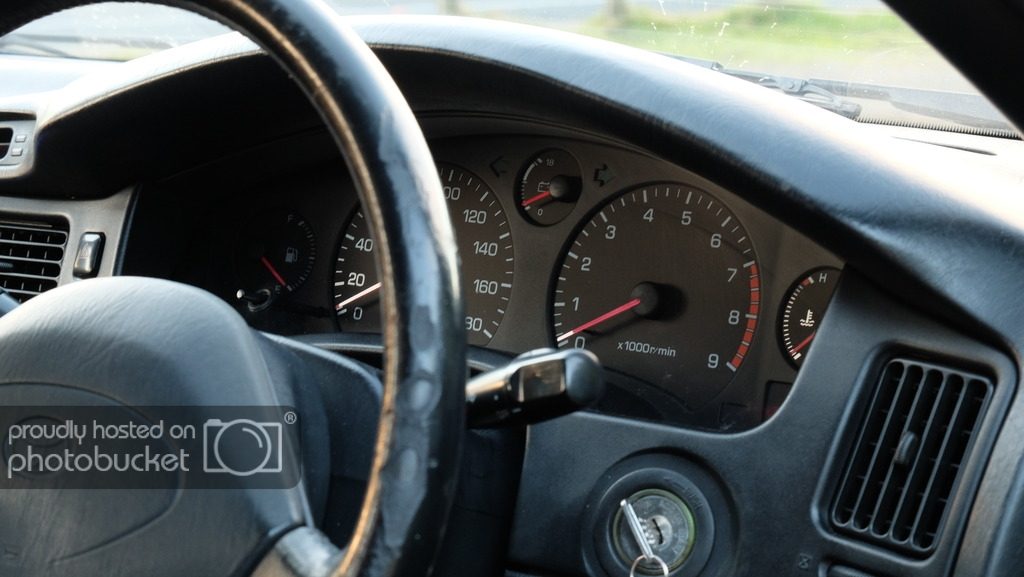

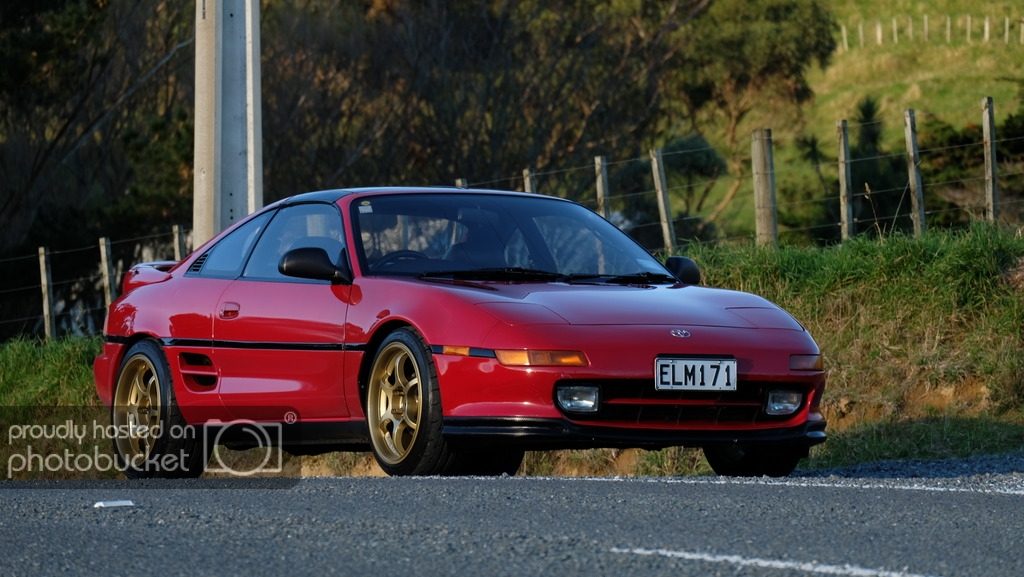
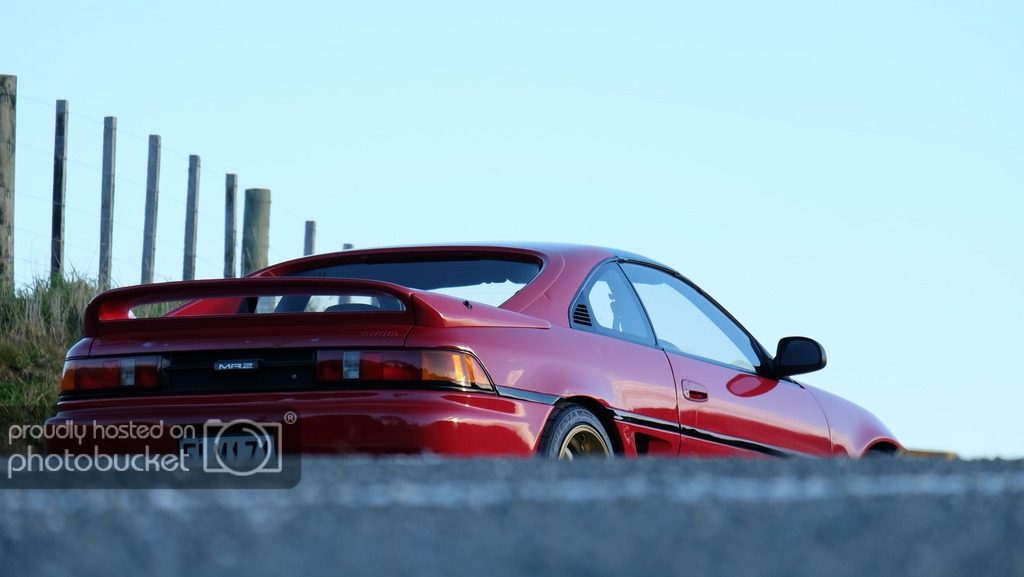
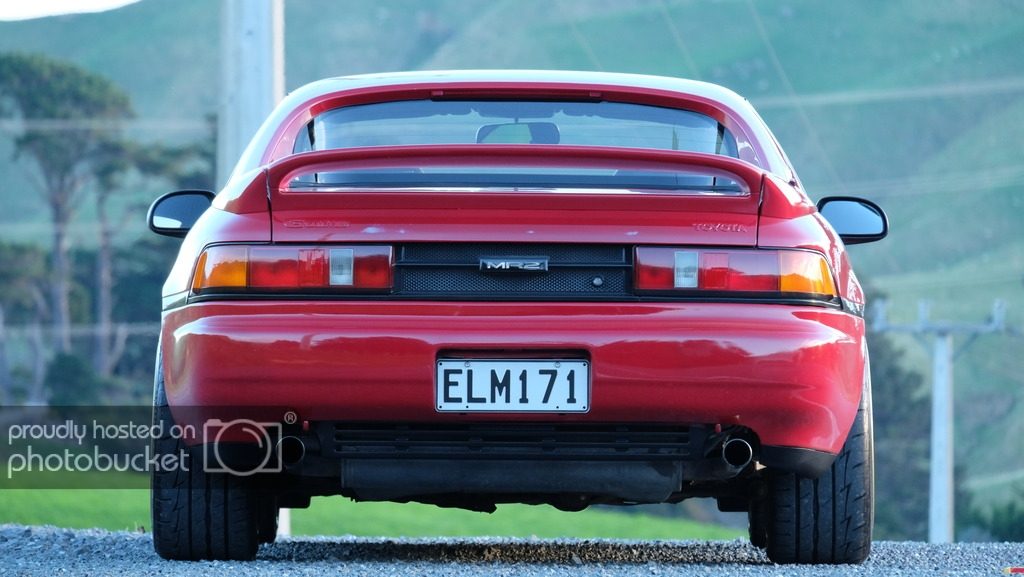
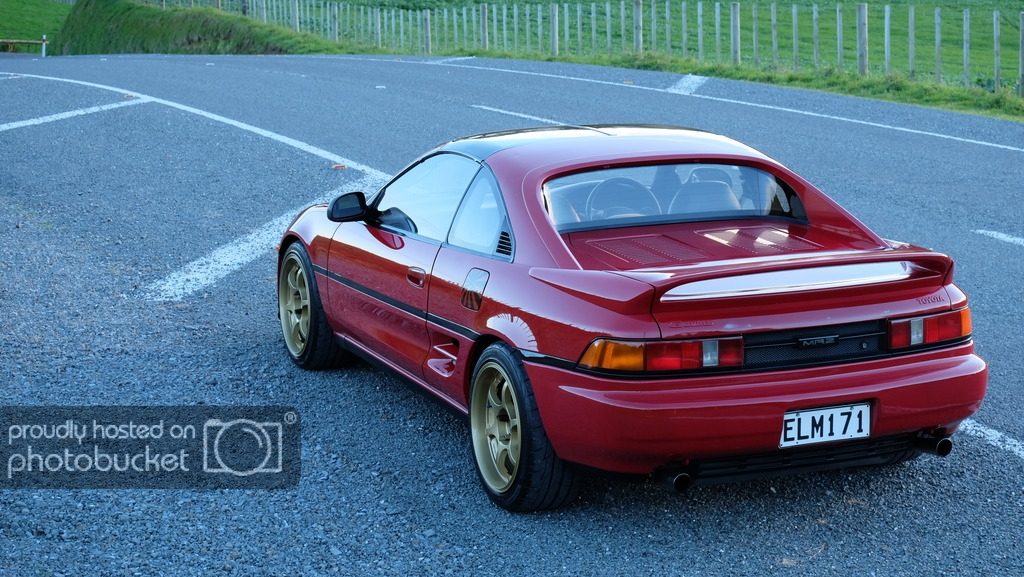
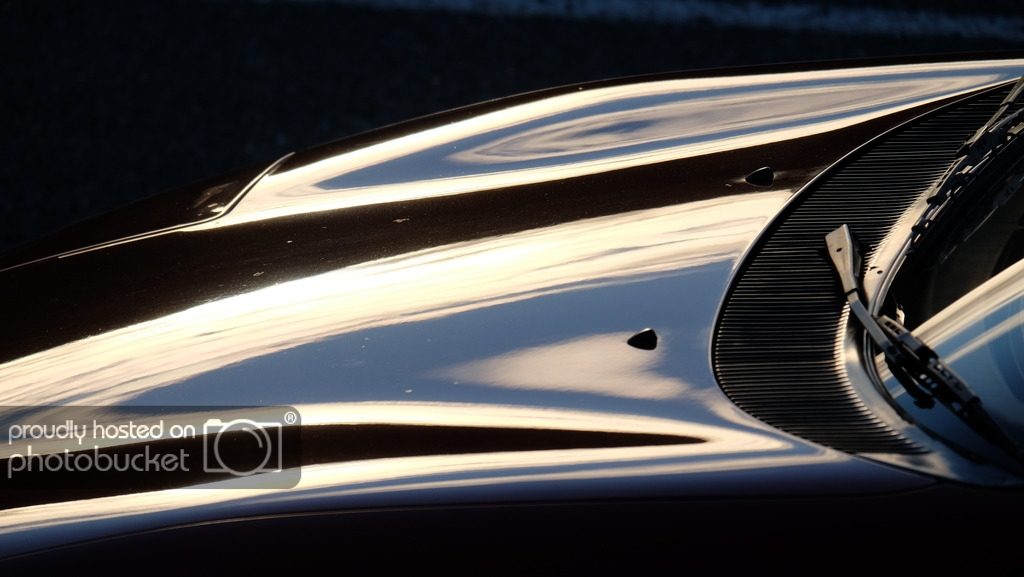
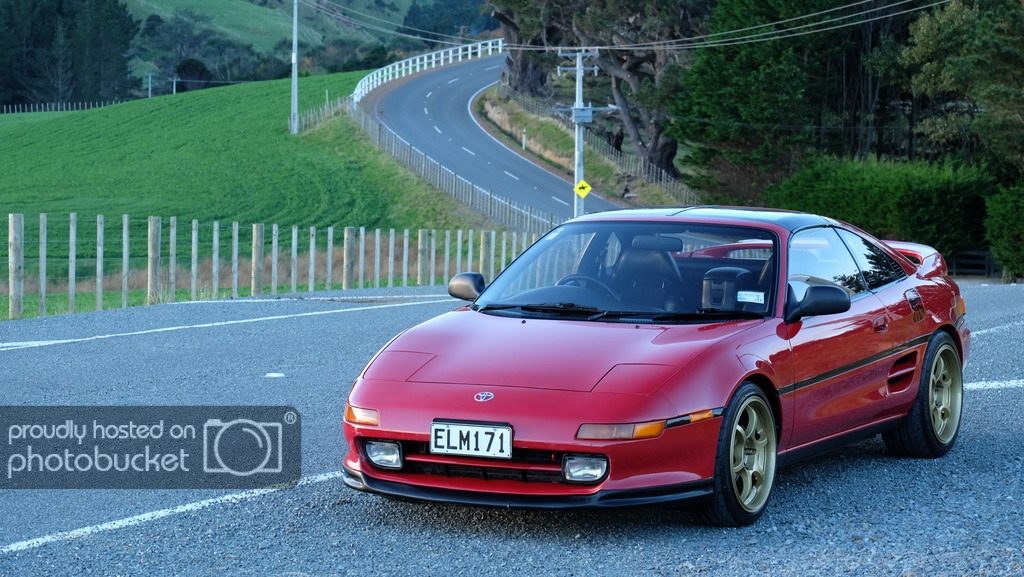
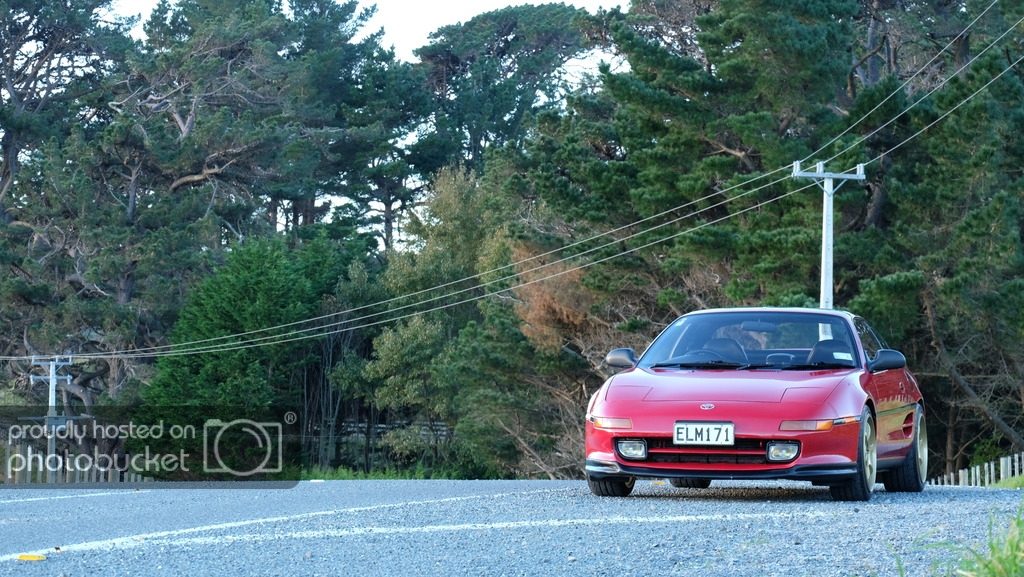
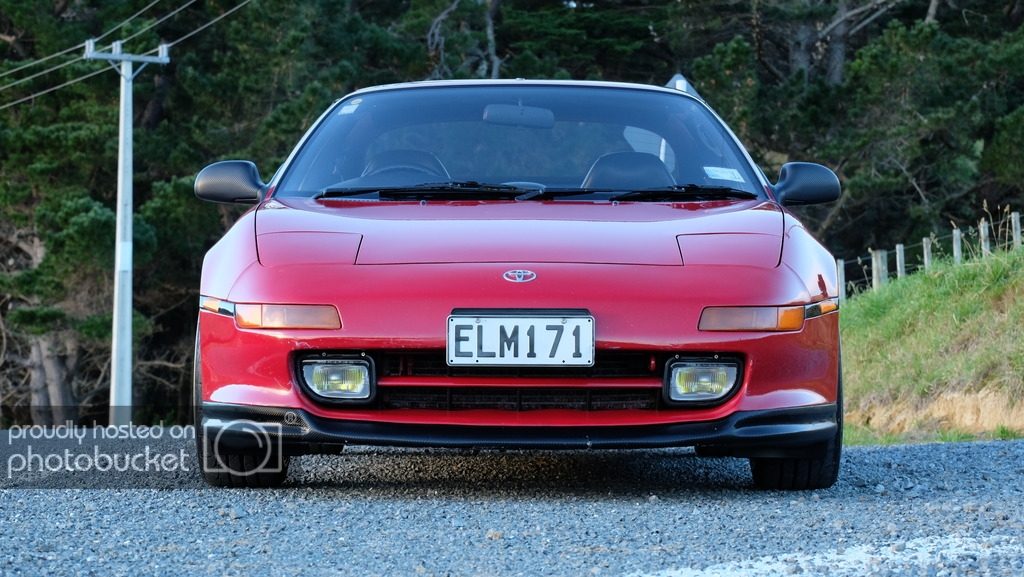
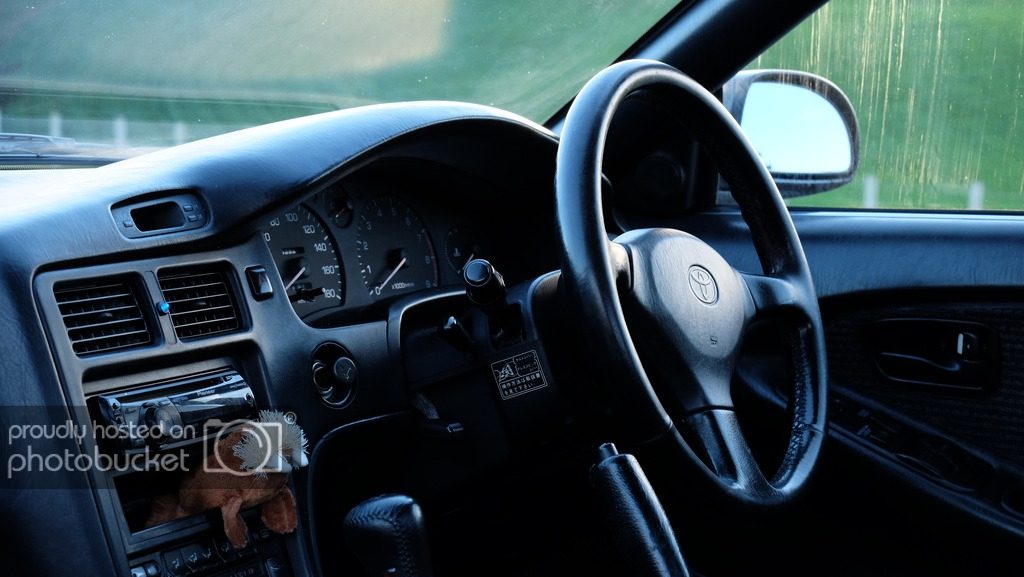

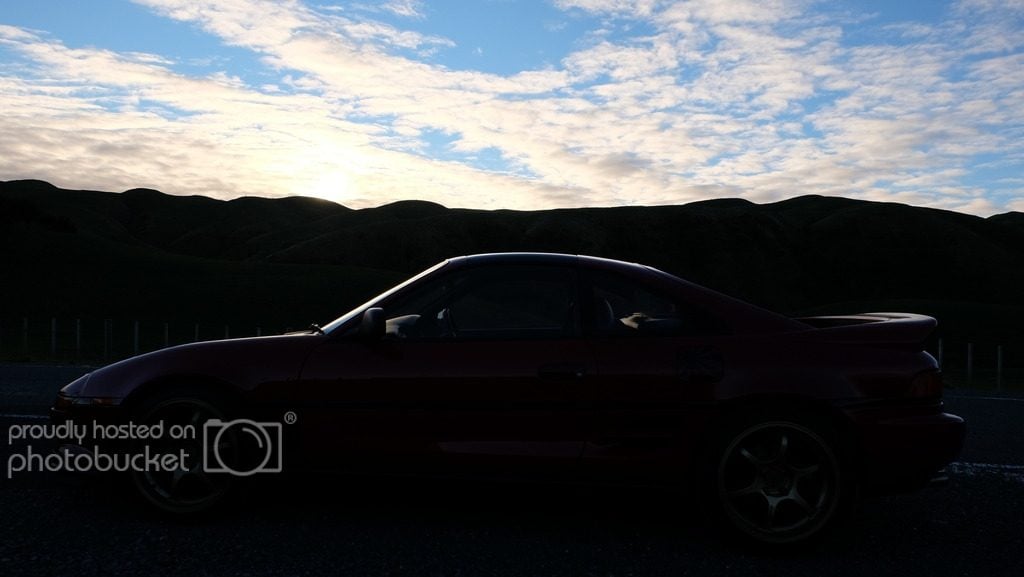
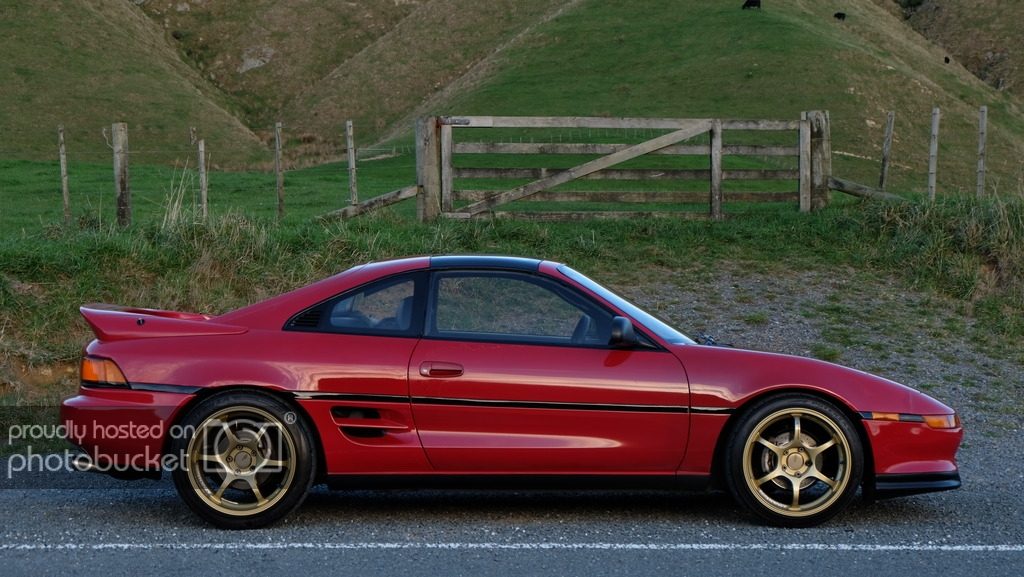
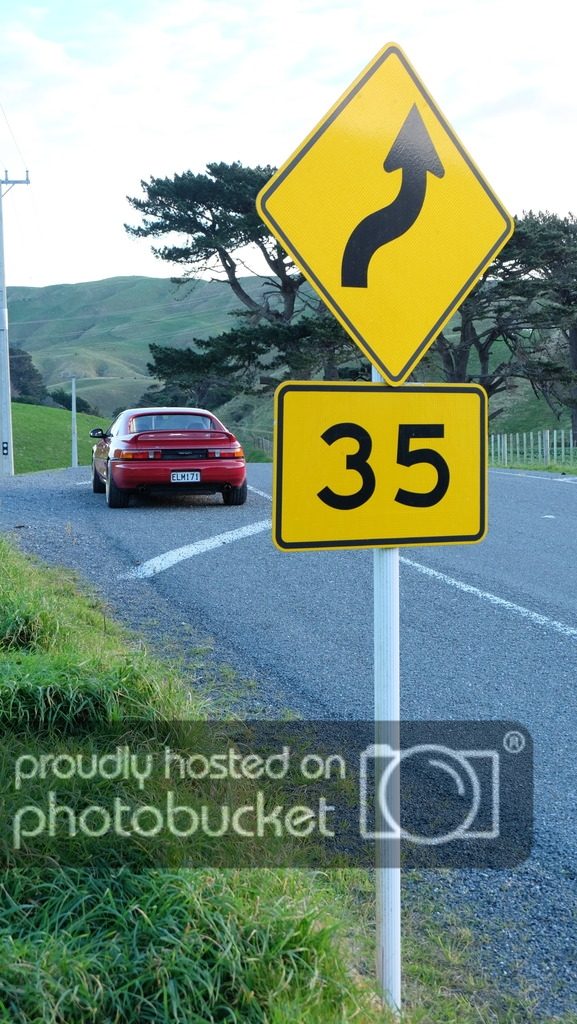

 That's 35KPH for you MPH people elsewhere in the world.
That's 35KPH for you MPH people elsewhere in the world.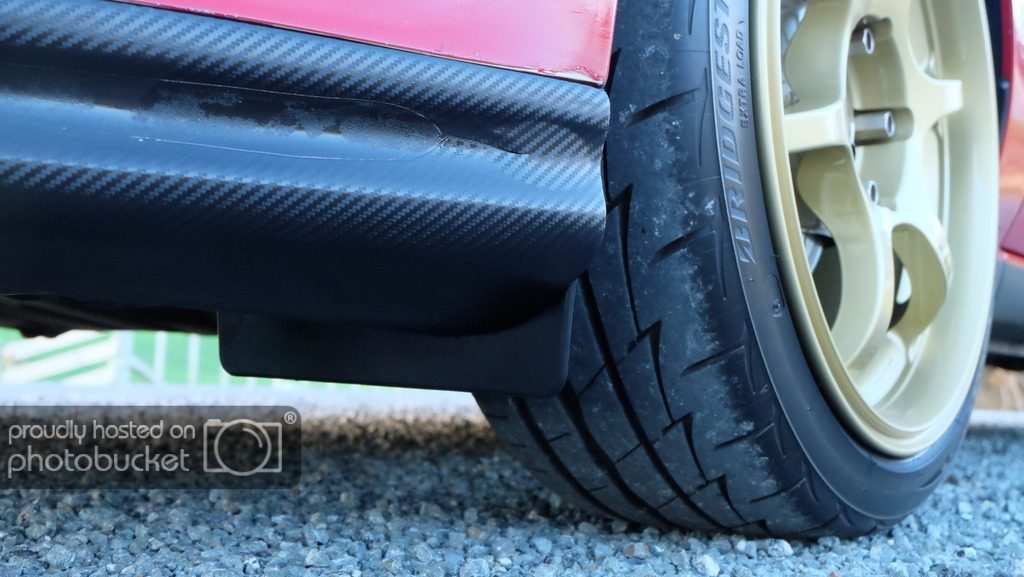
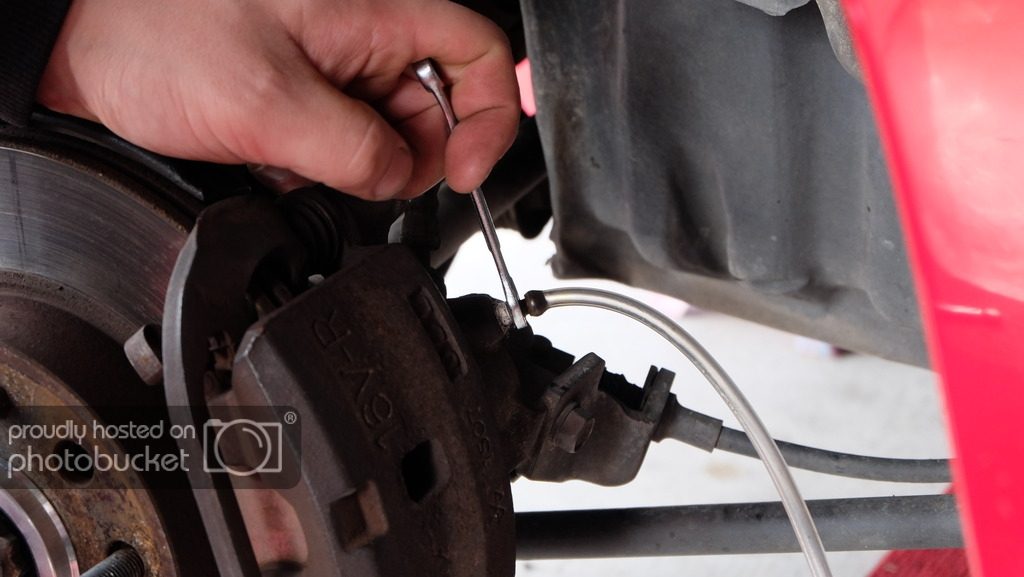

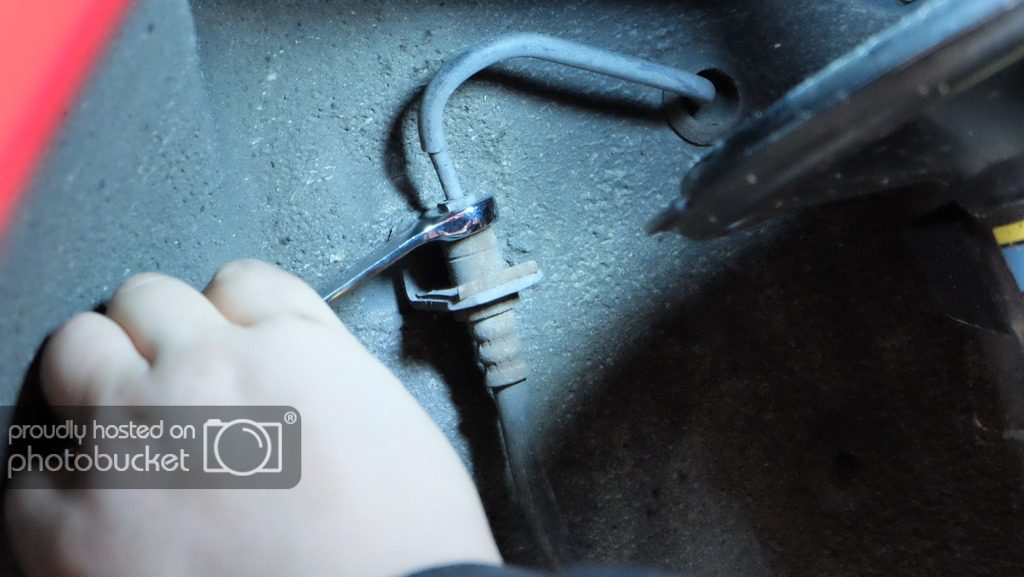
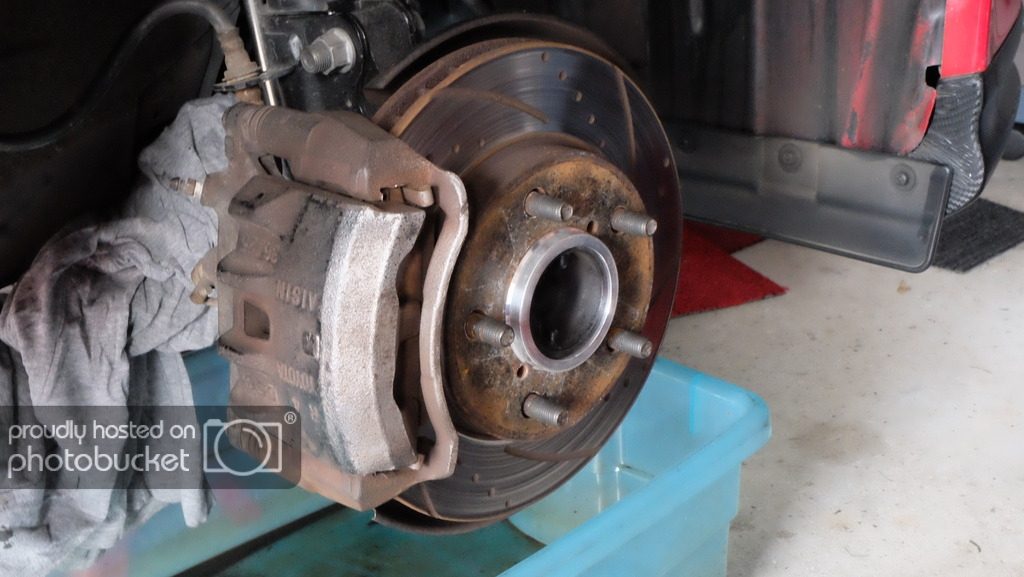
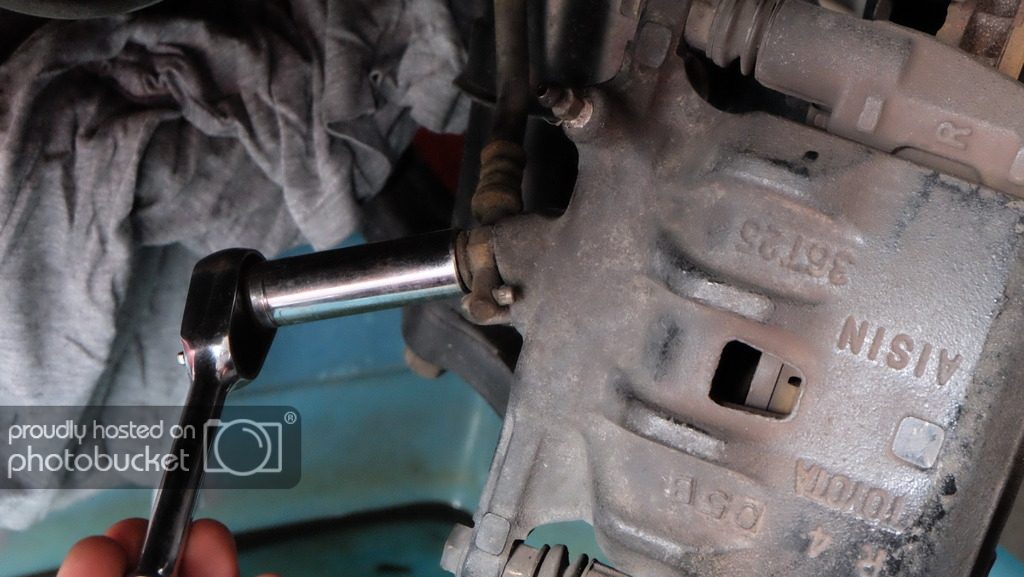
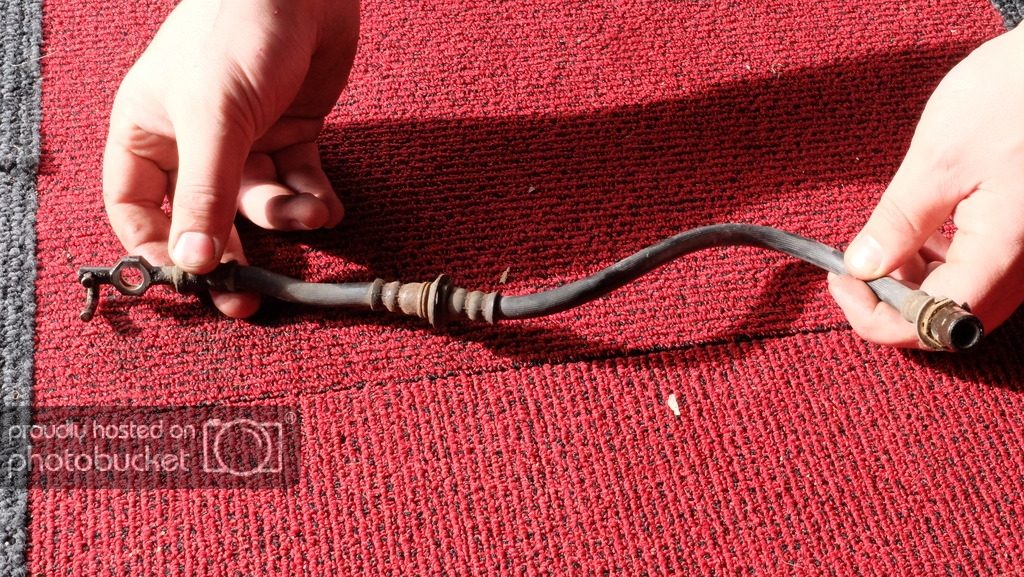
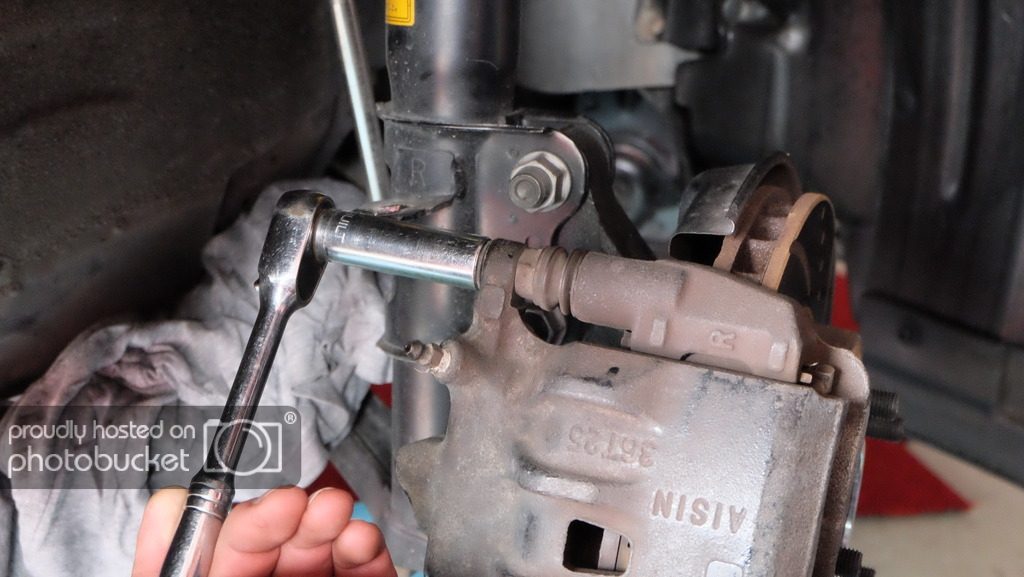

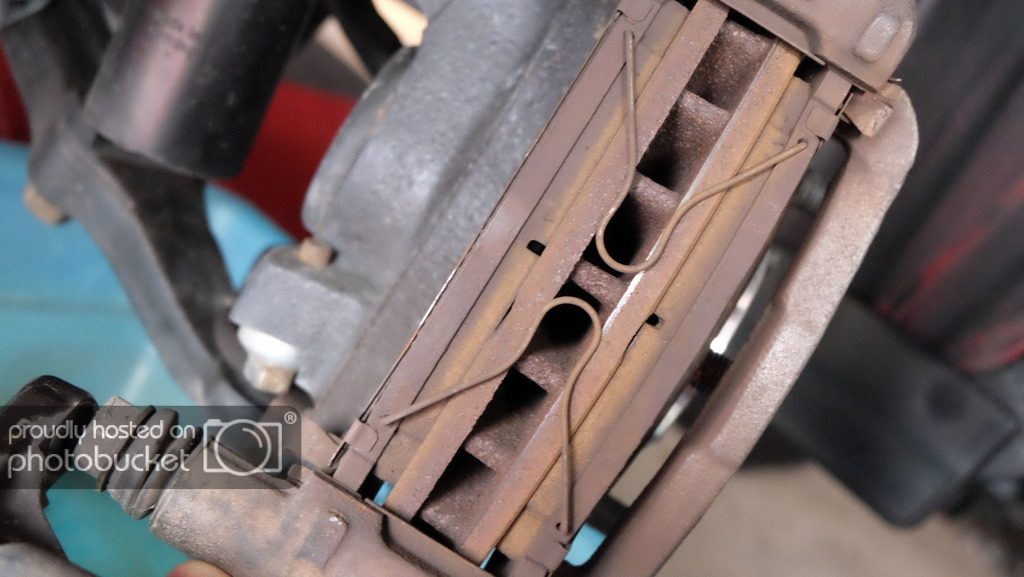

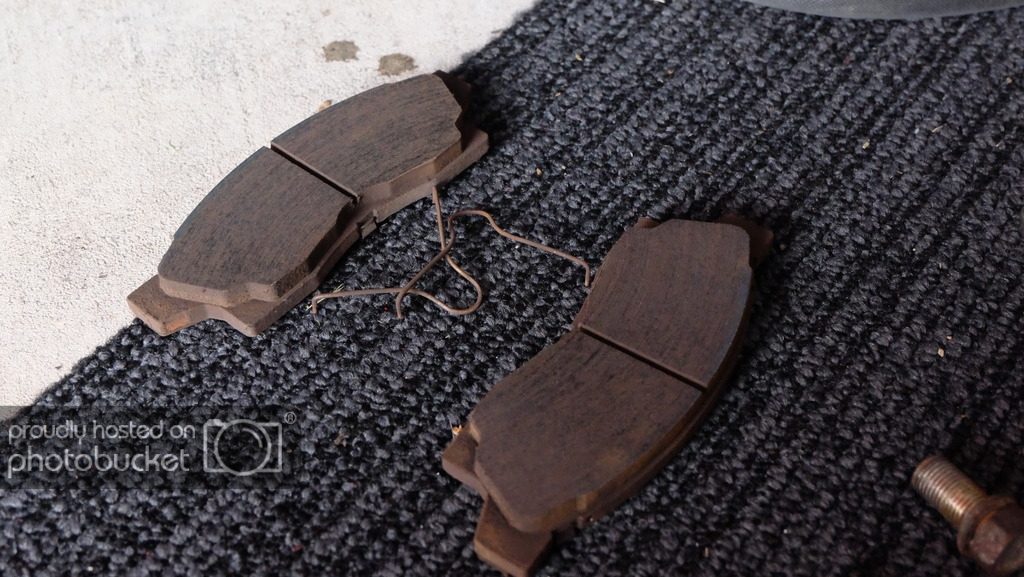
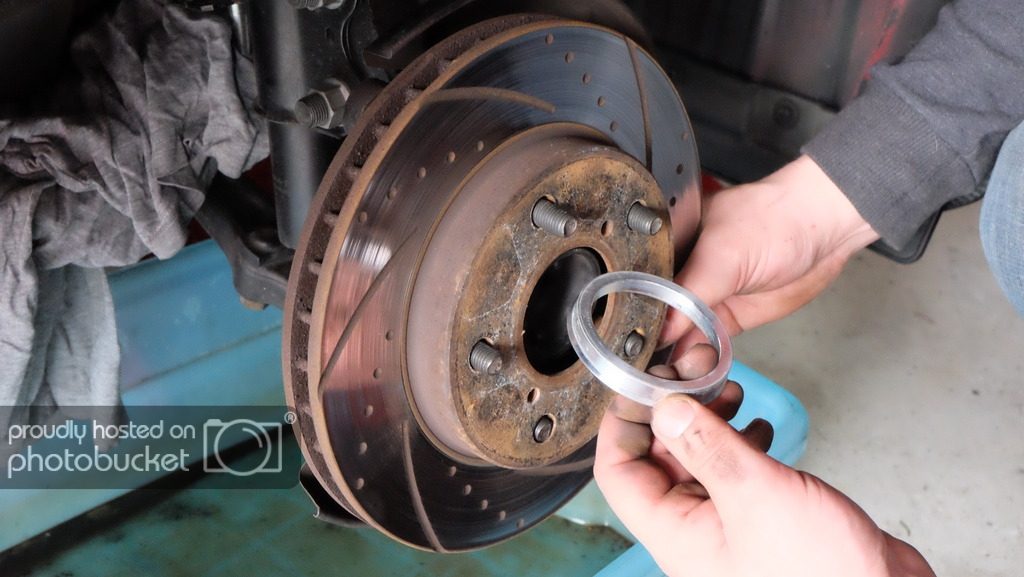
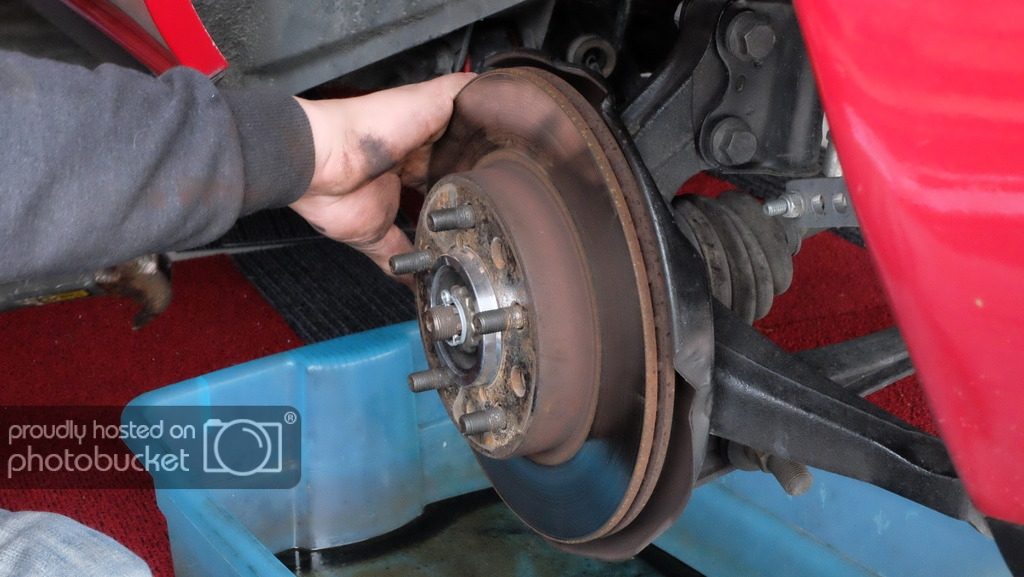
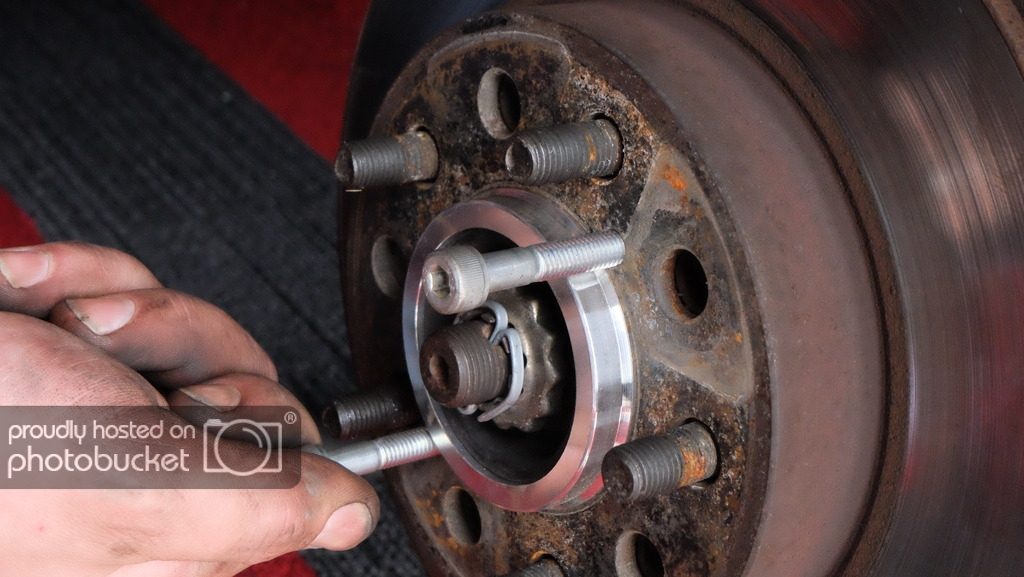

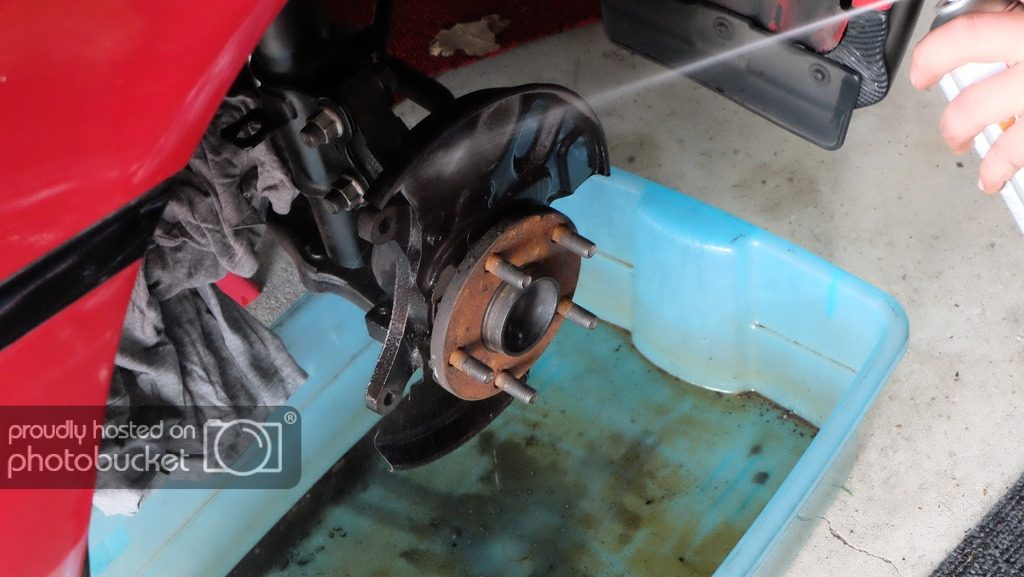
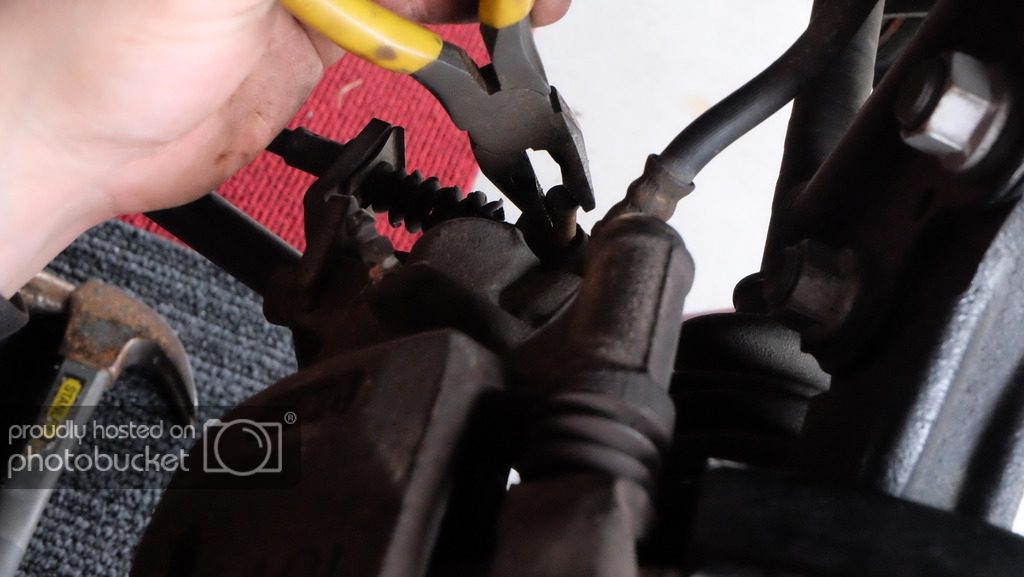
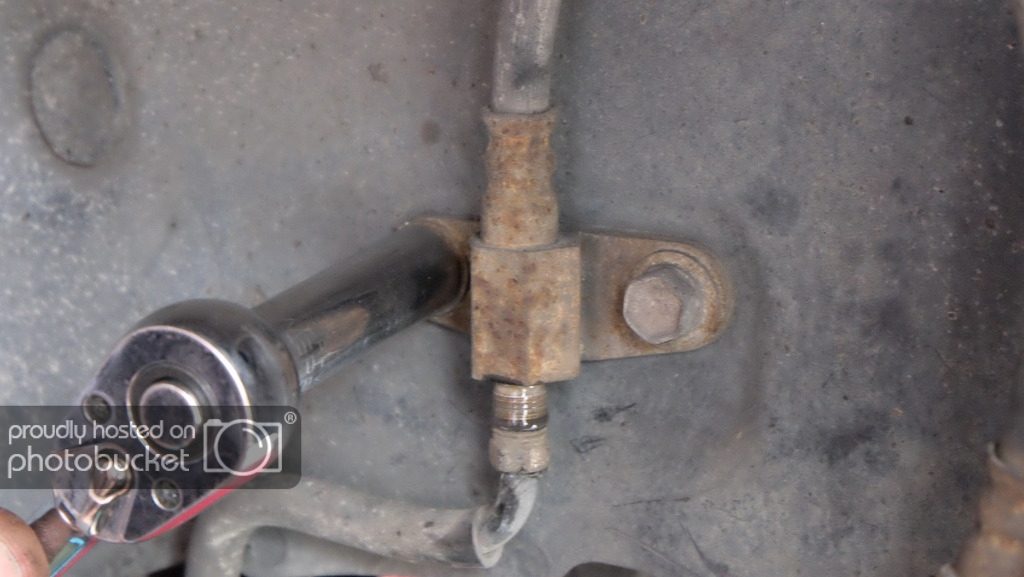
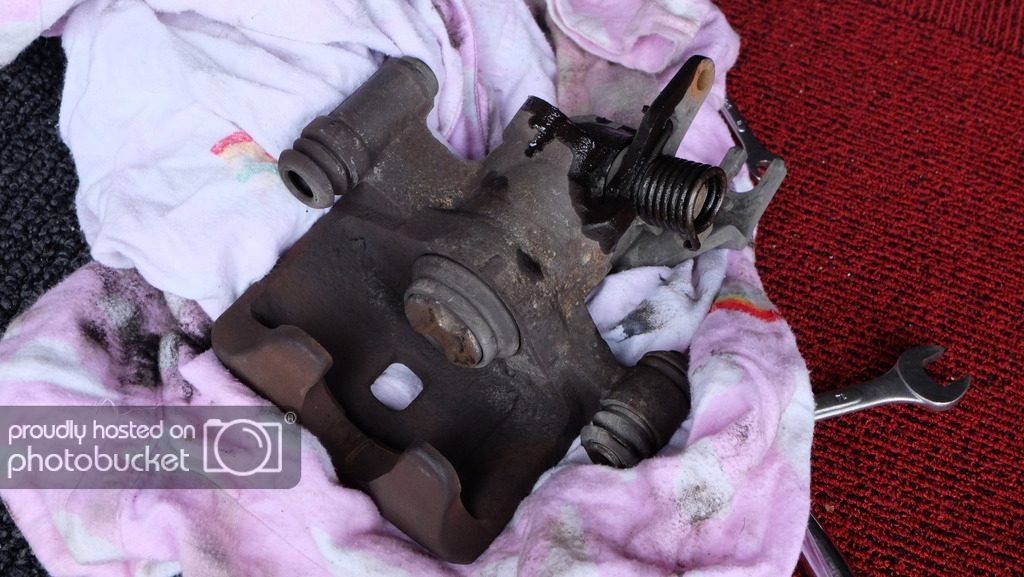
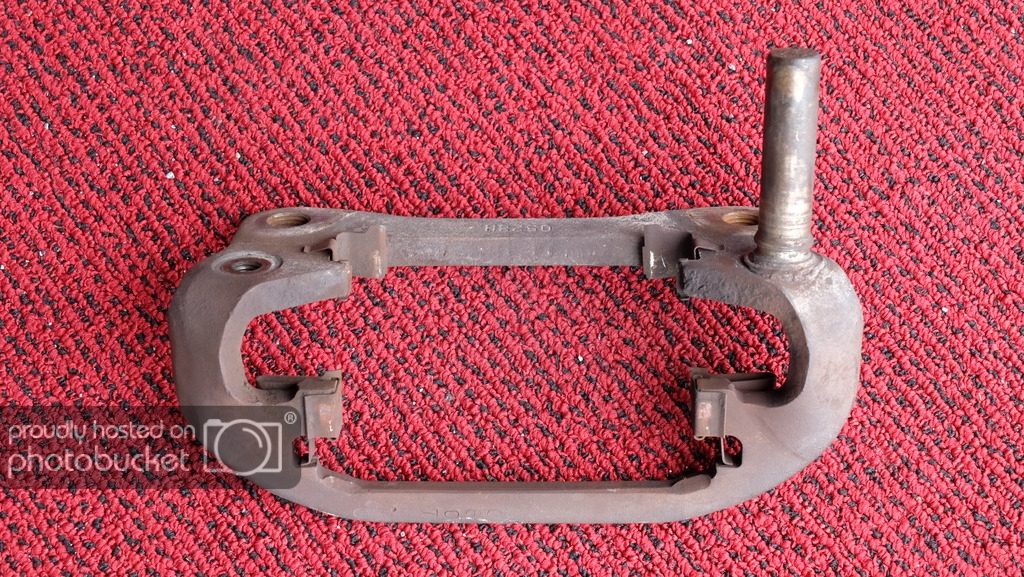
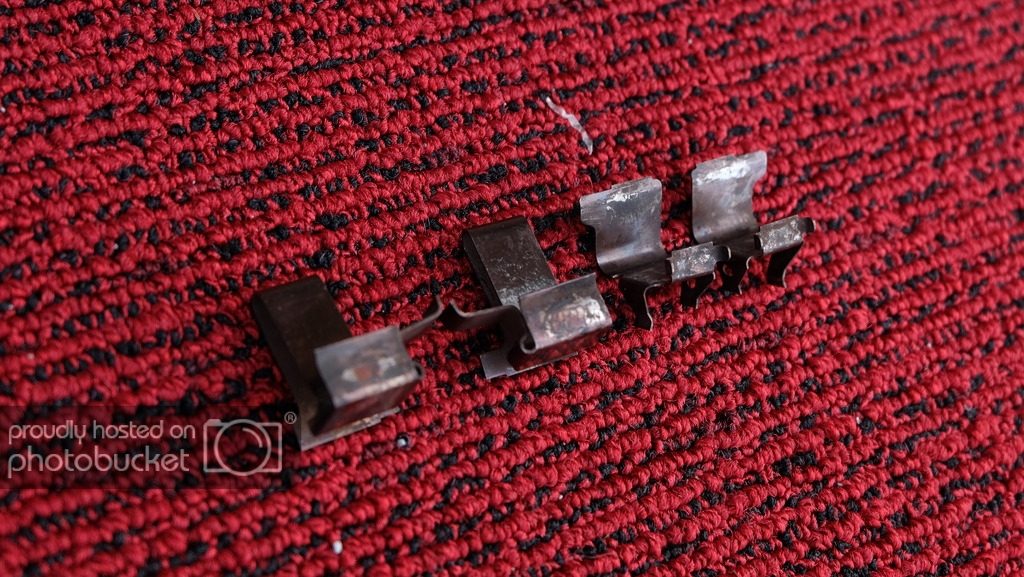
 So they should.
So they should.  I took them out of the old ones and cleaned them up a bit.
I took them out of the old ones and cleaned them up a bit.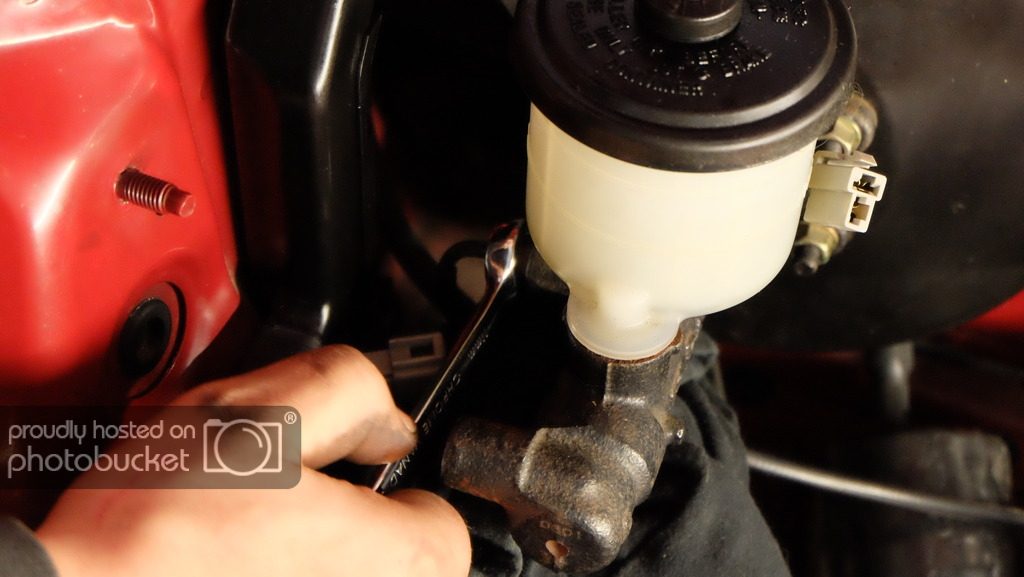
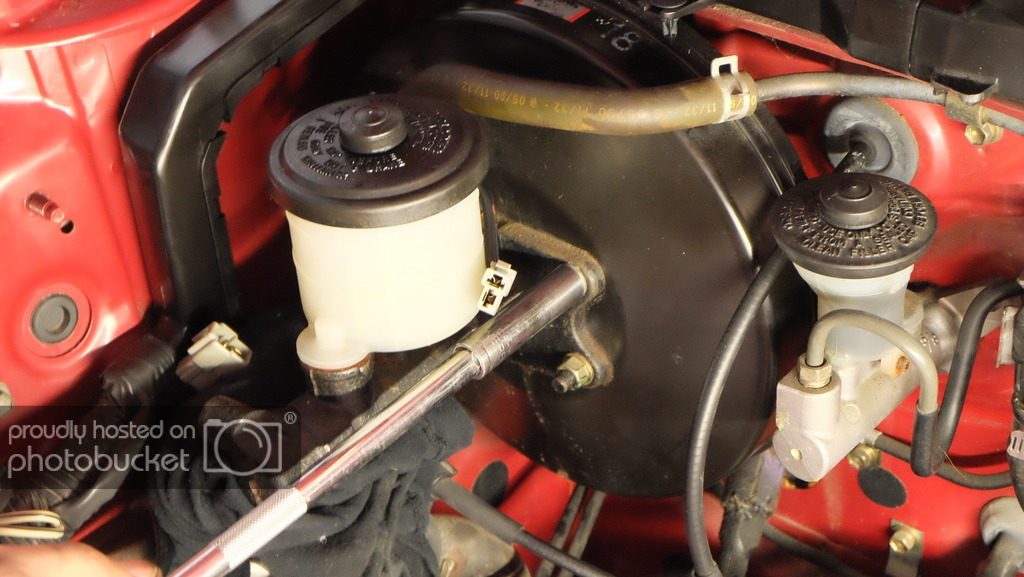
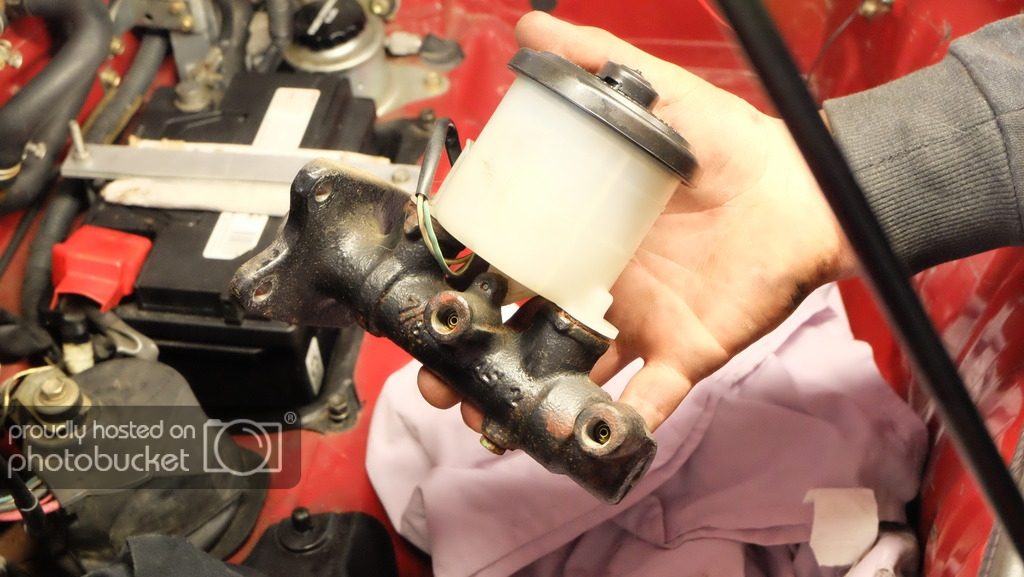
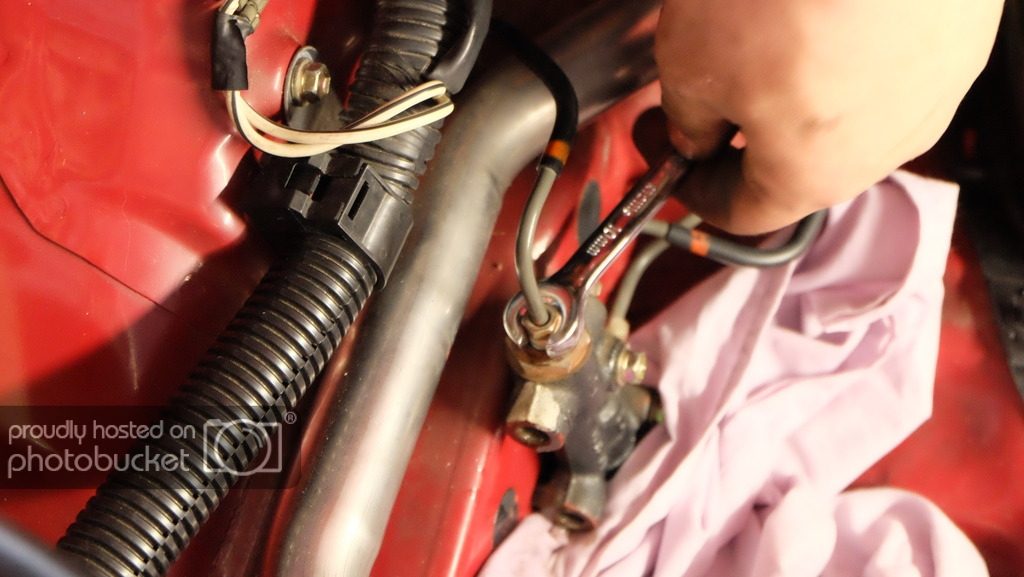
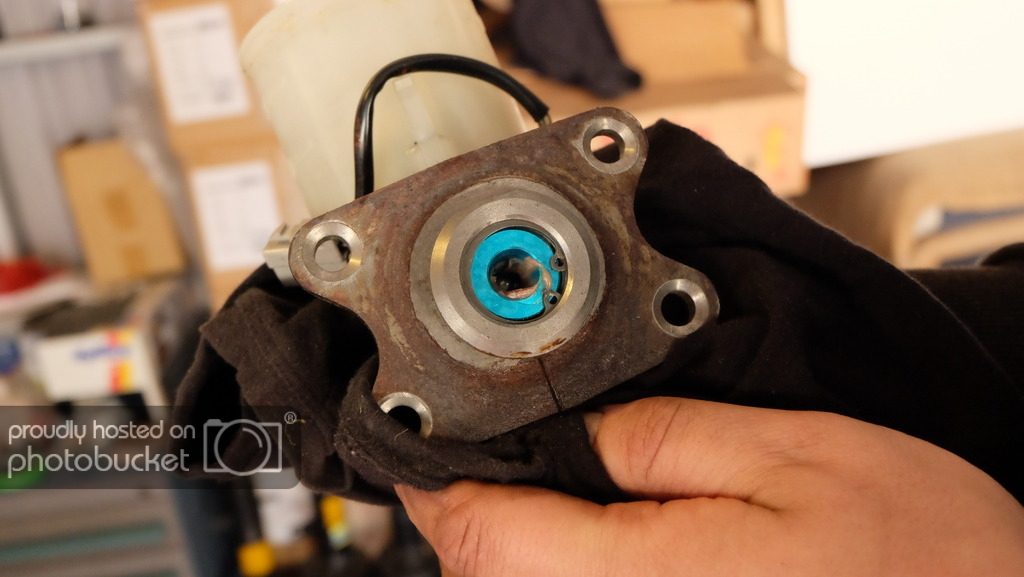




































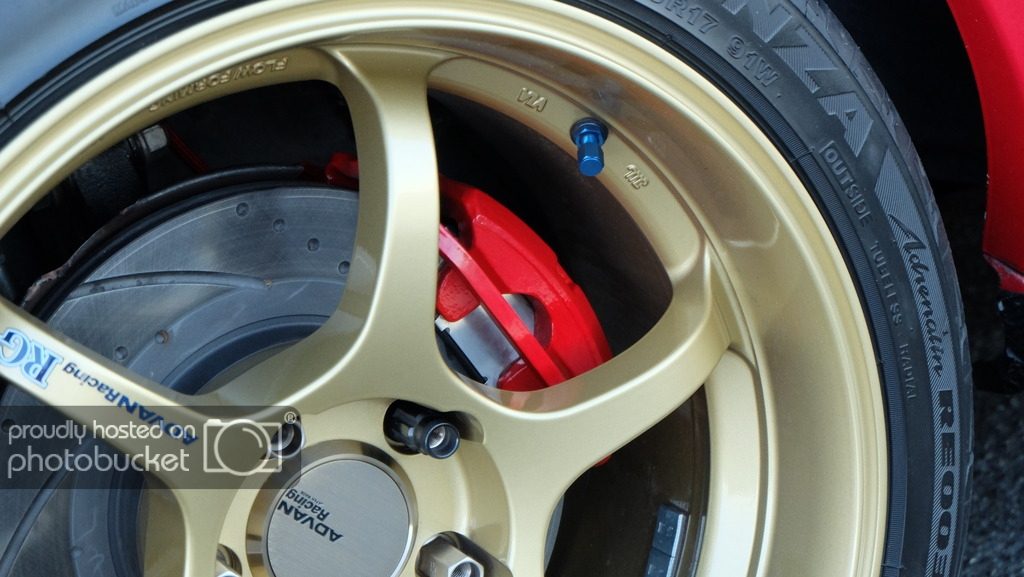
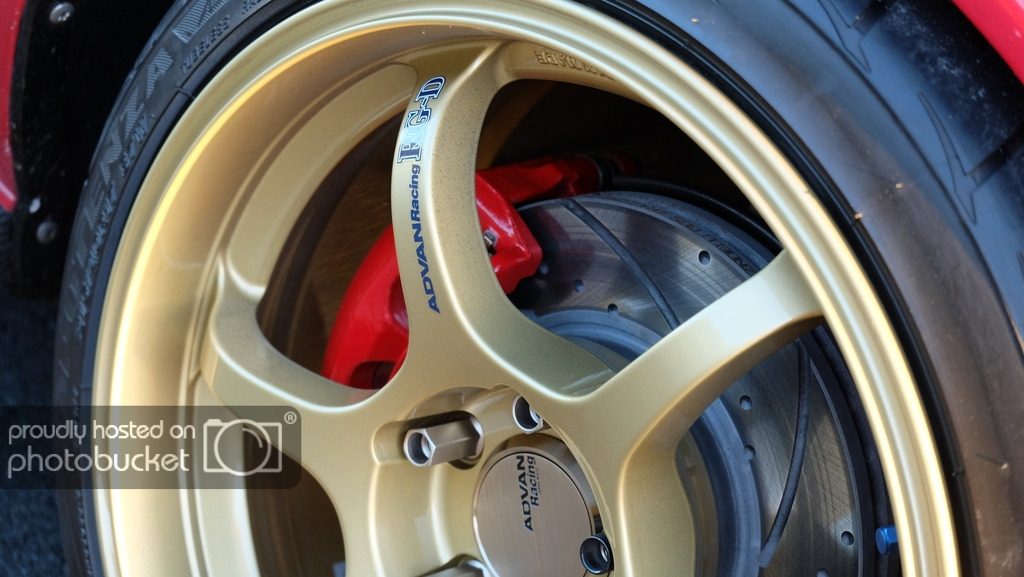
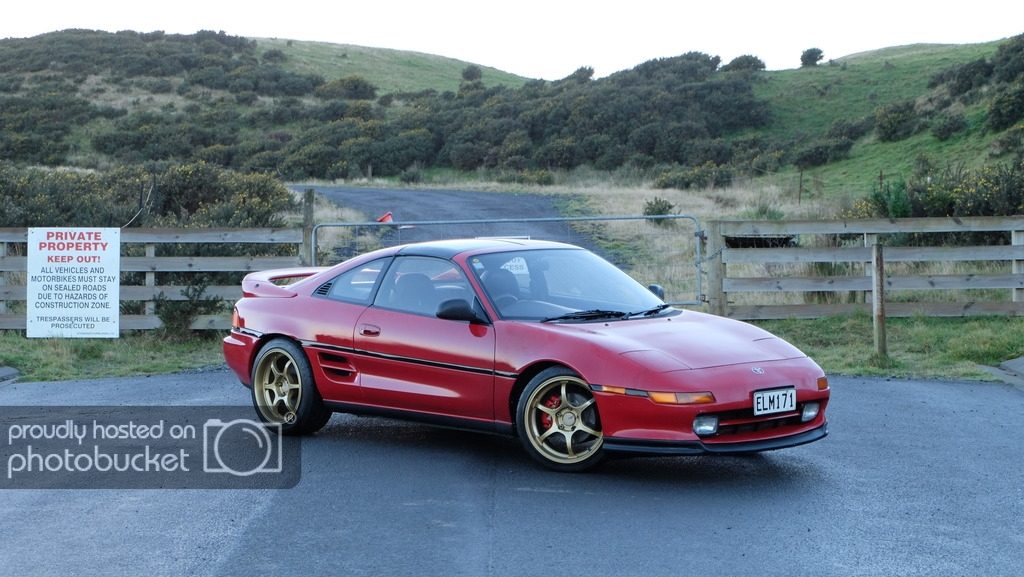
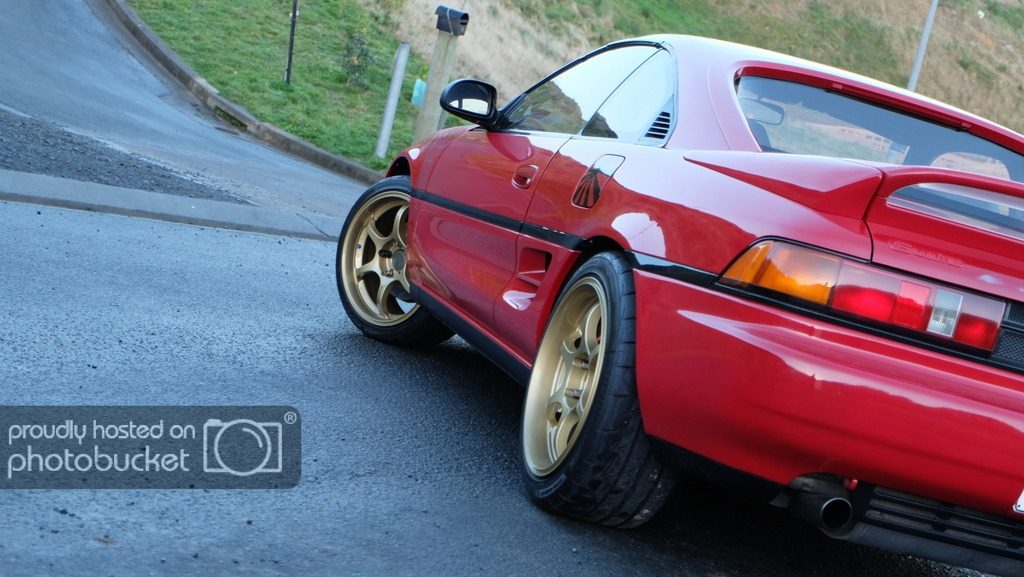
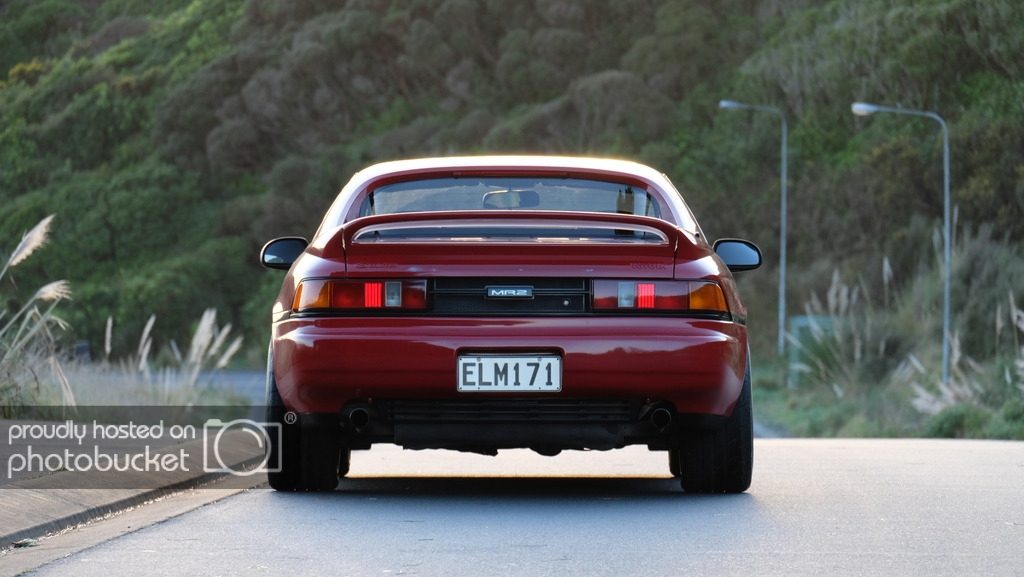
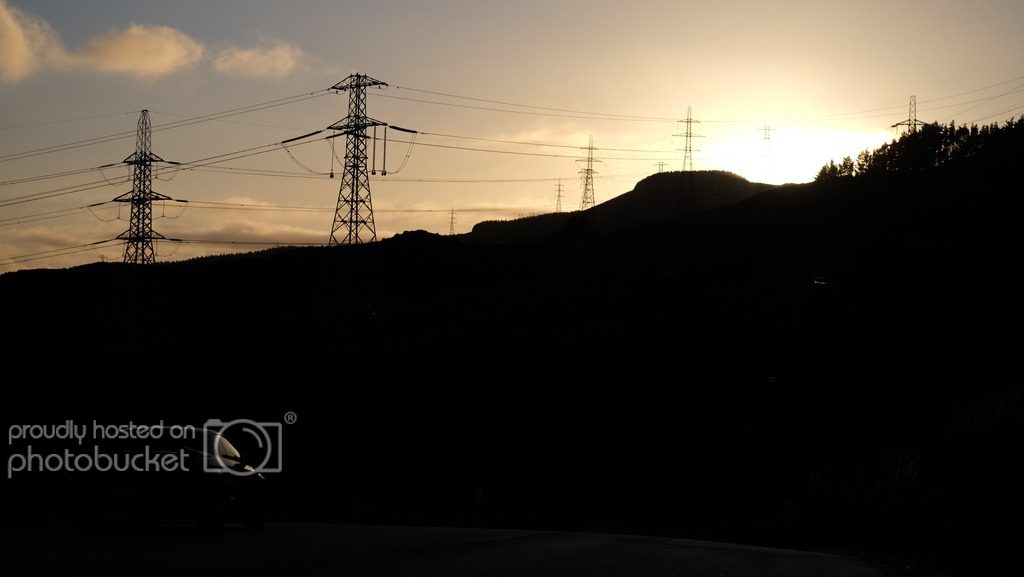
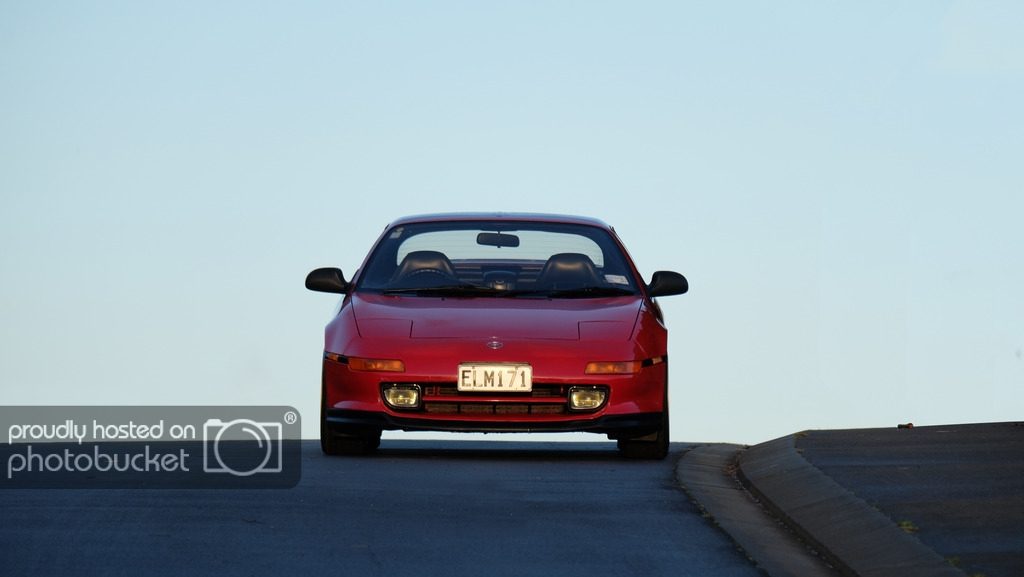
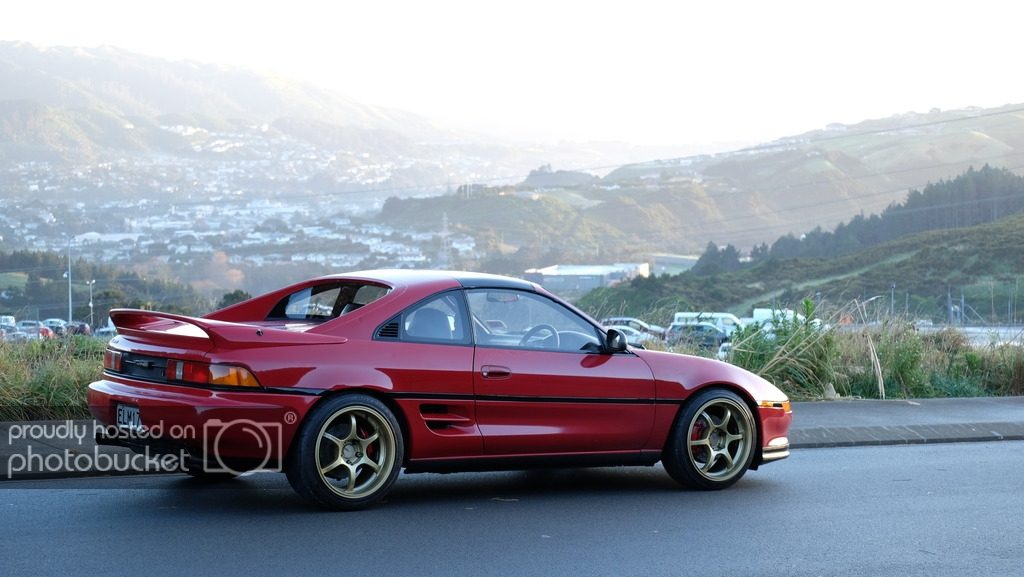



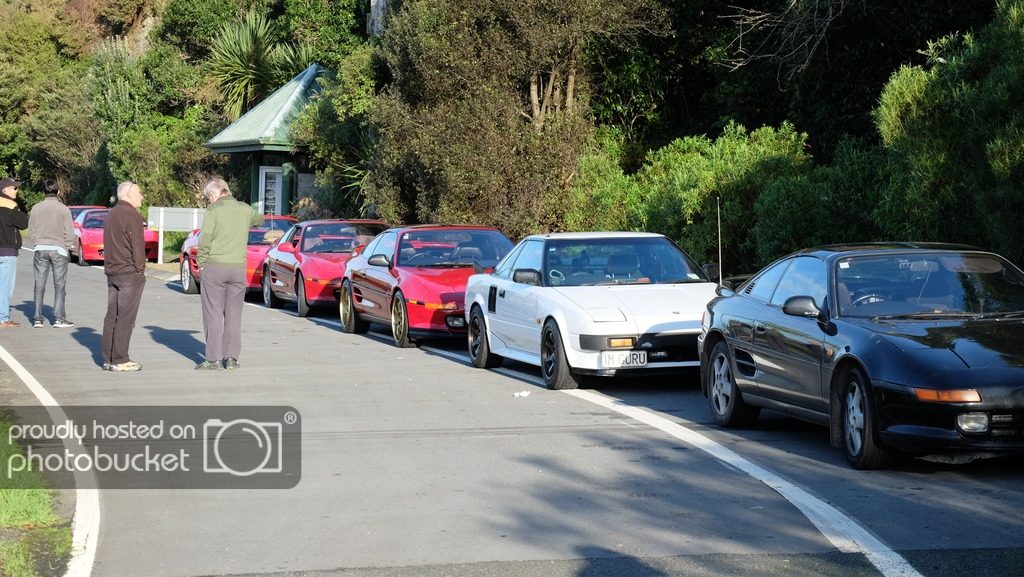
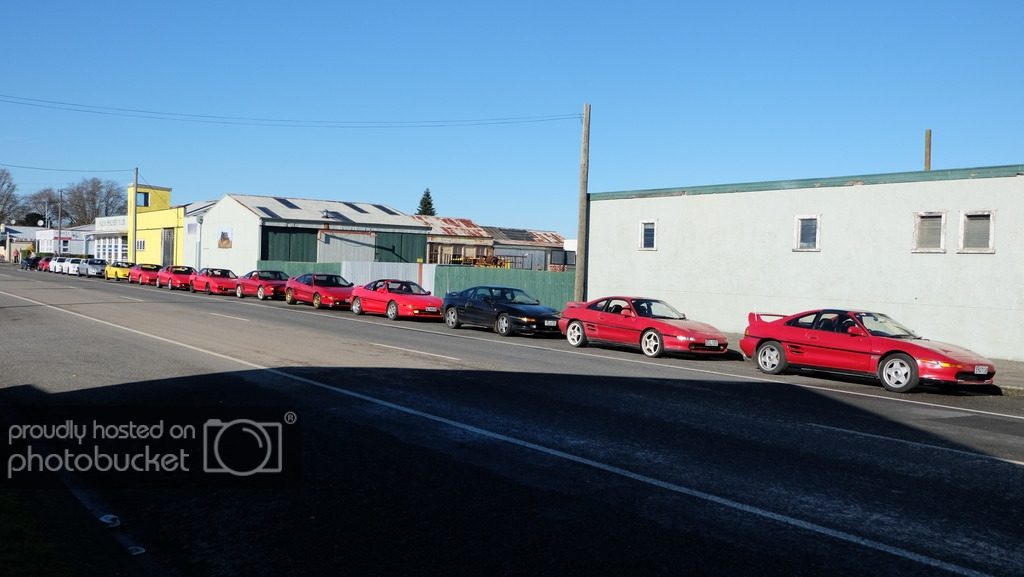
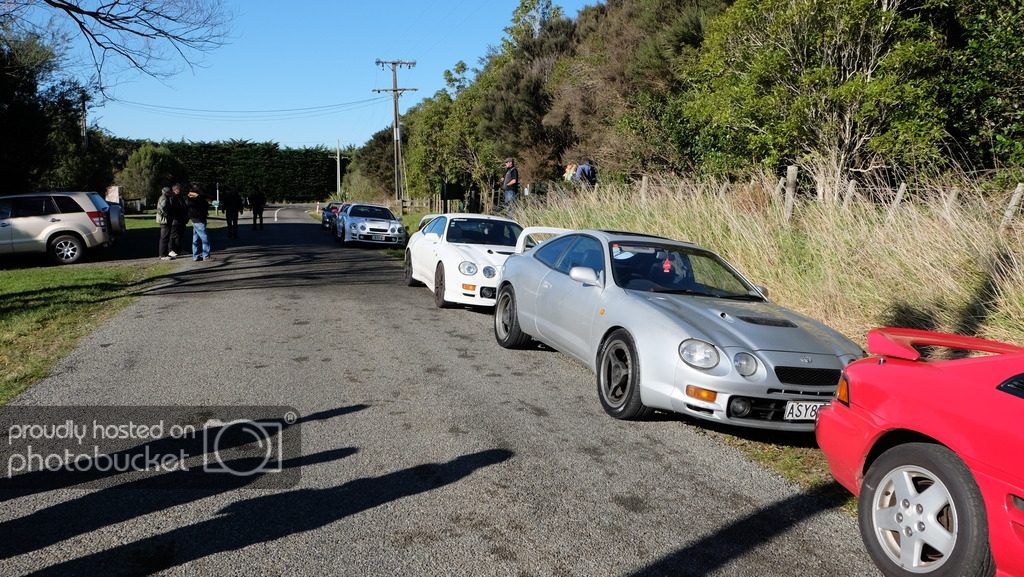
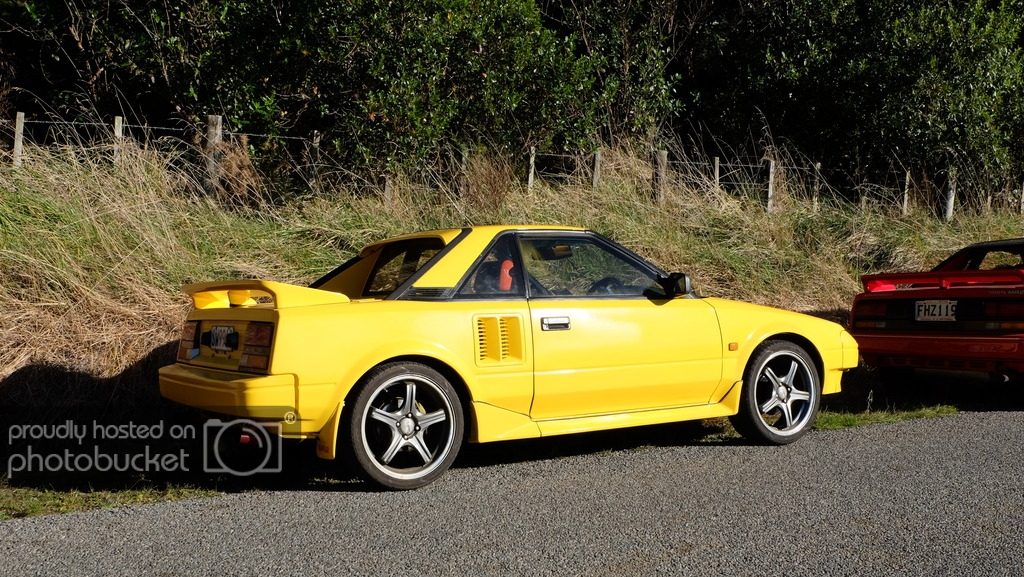
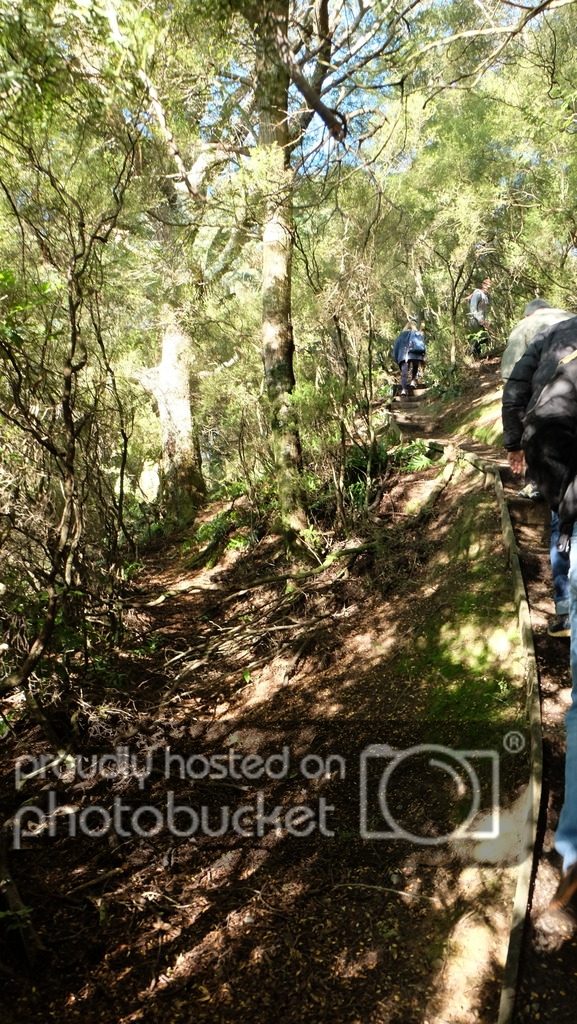
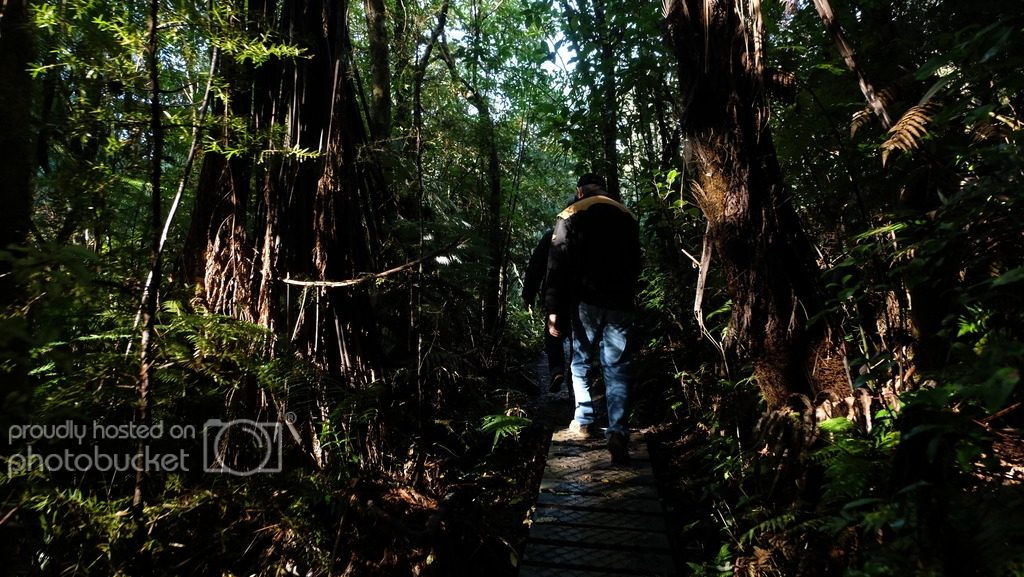
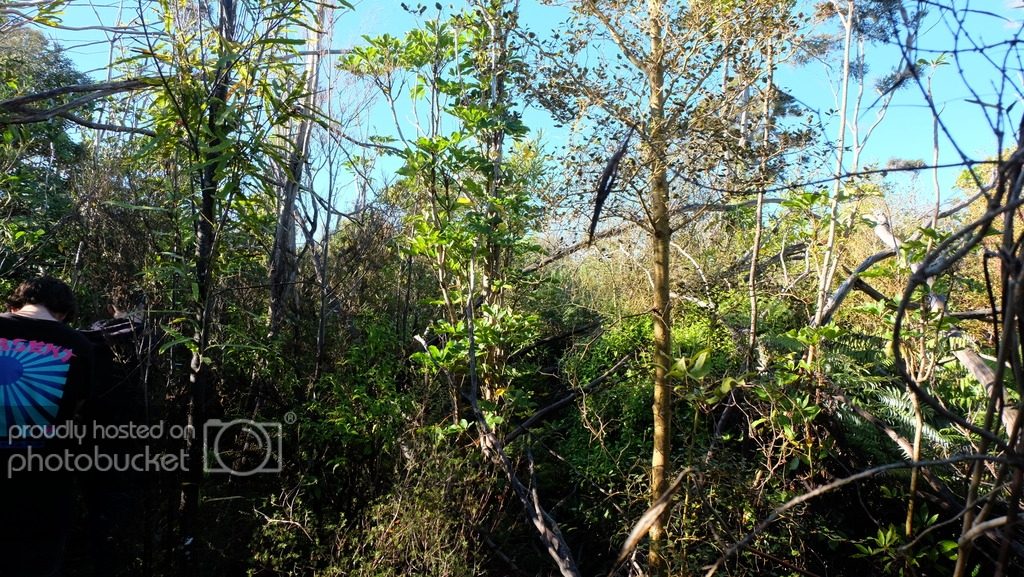
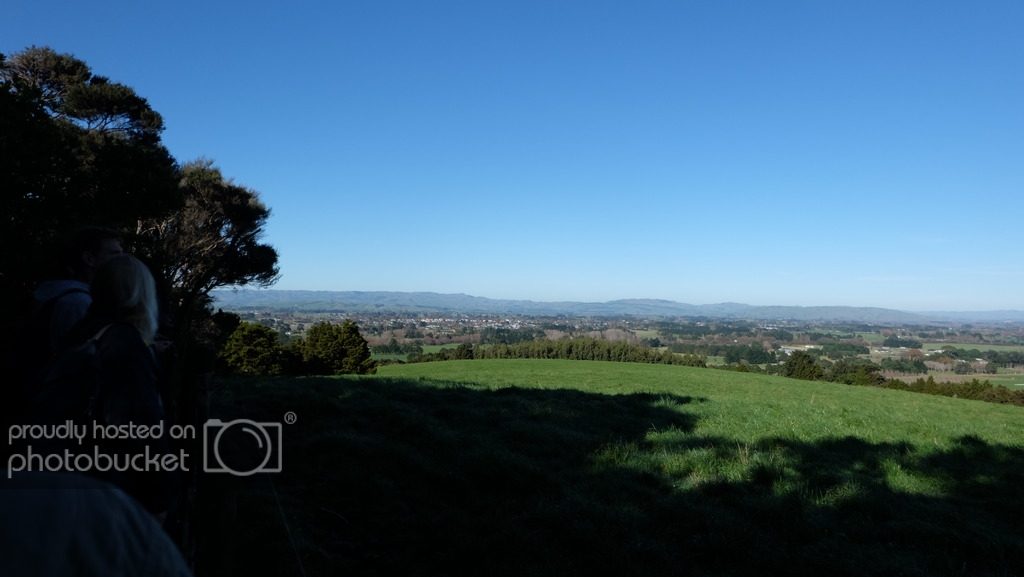
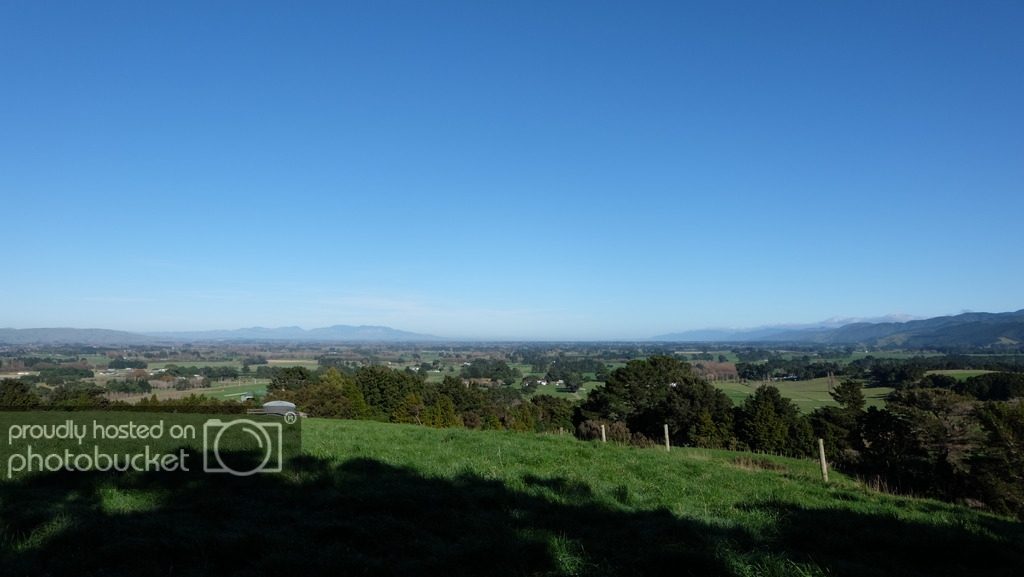
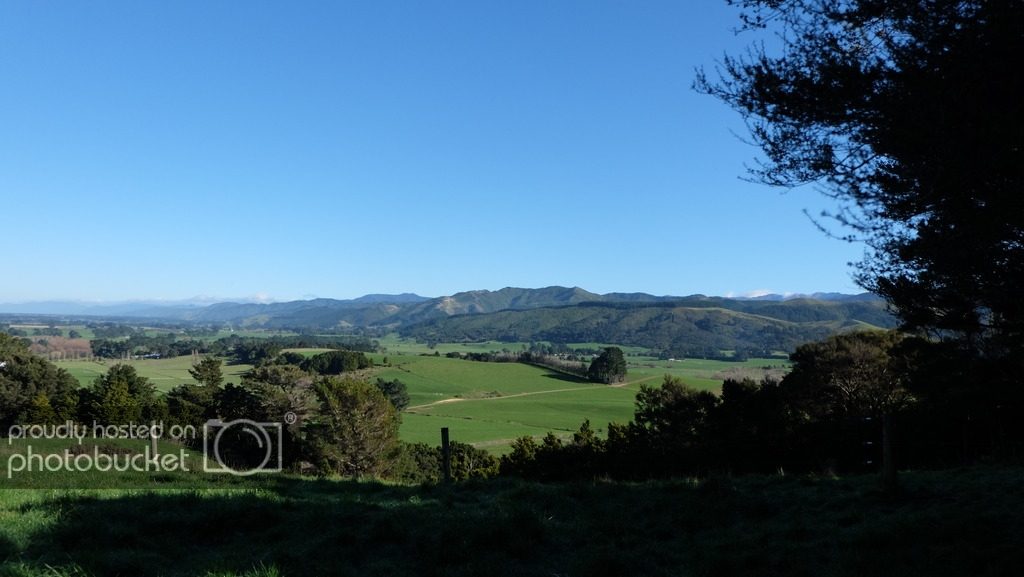
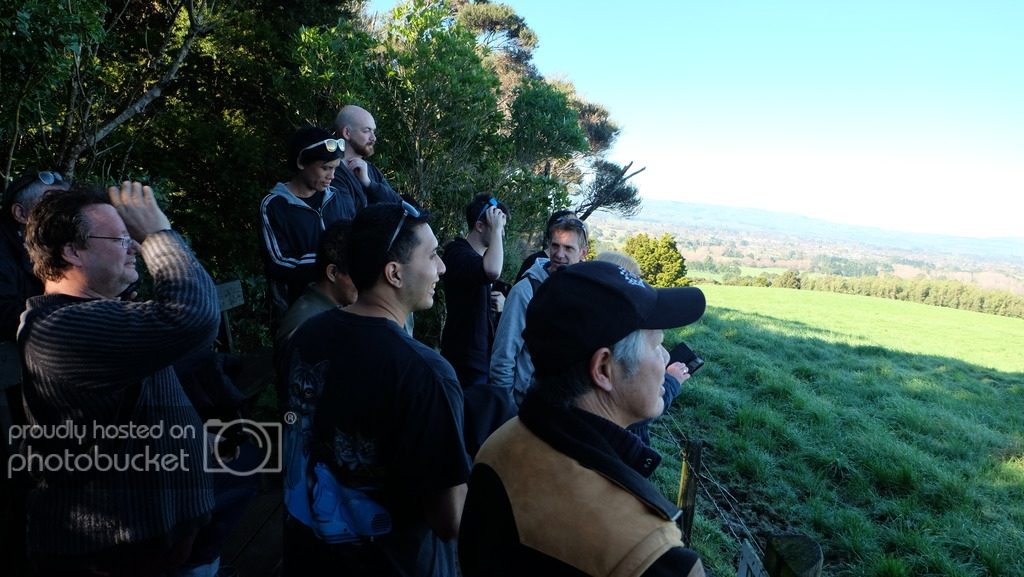
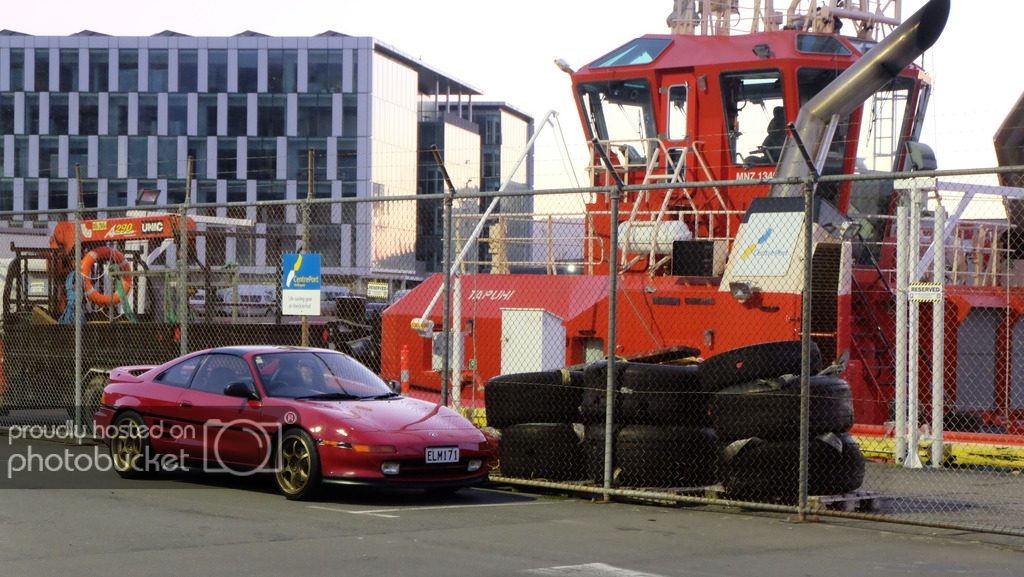
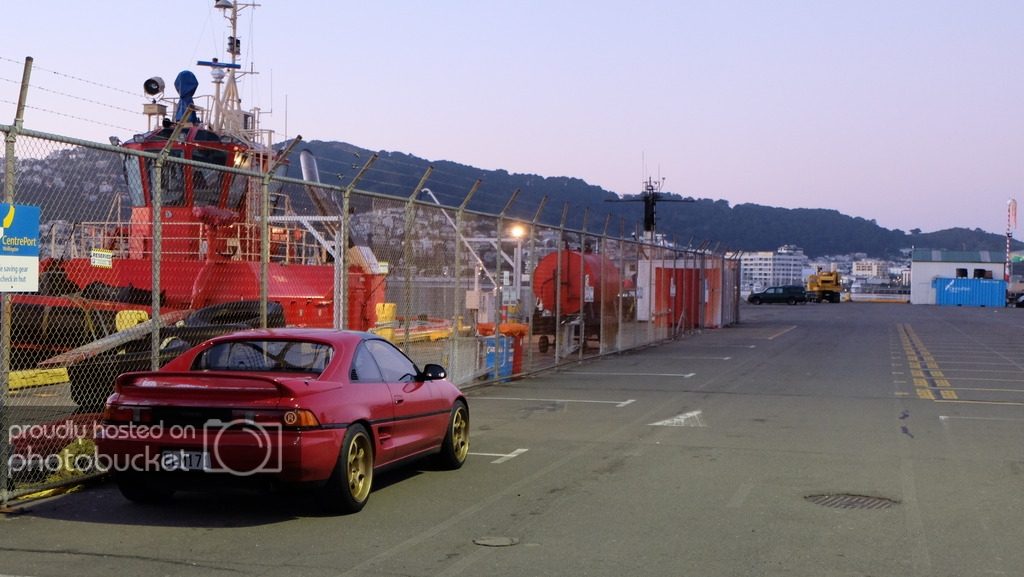
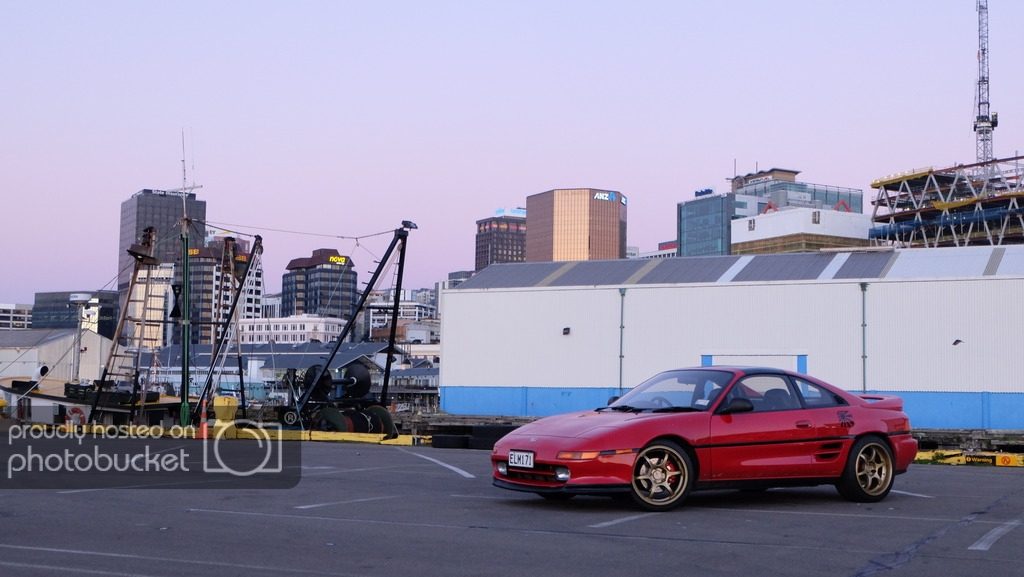
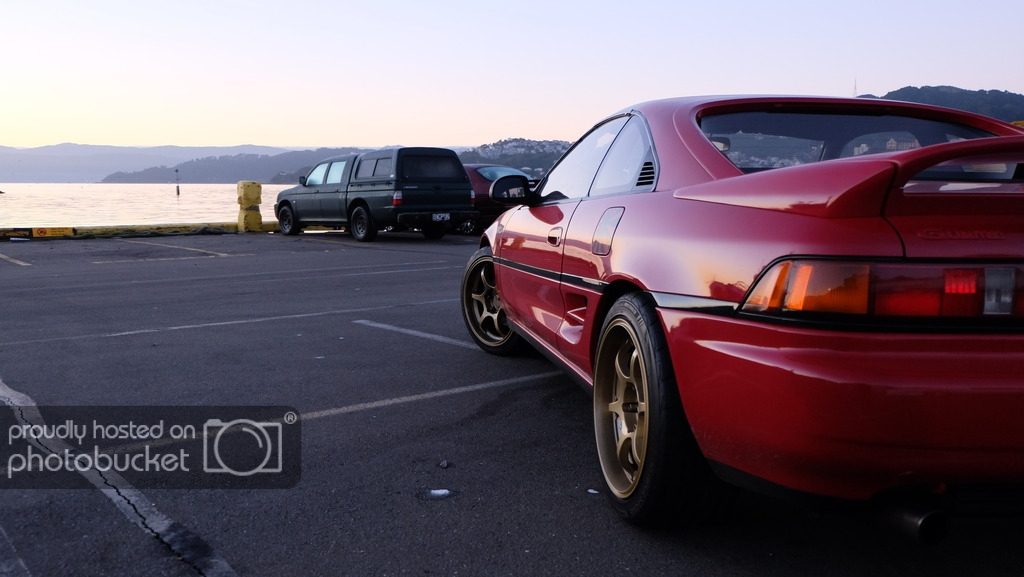
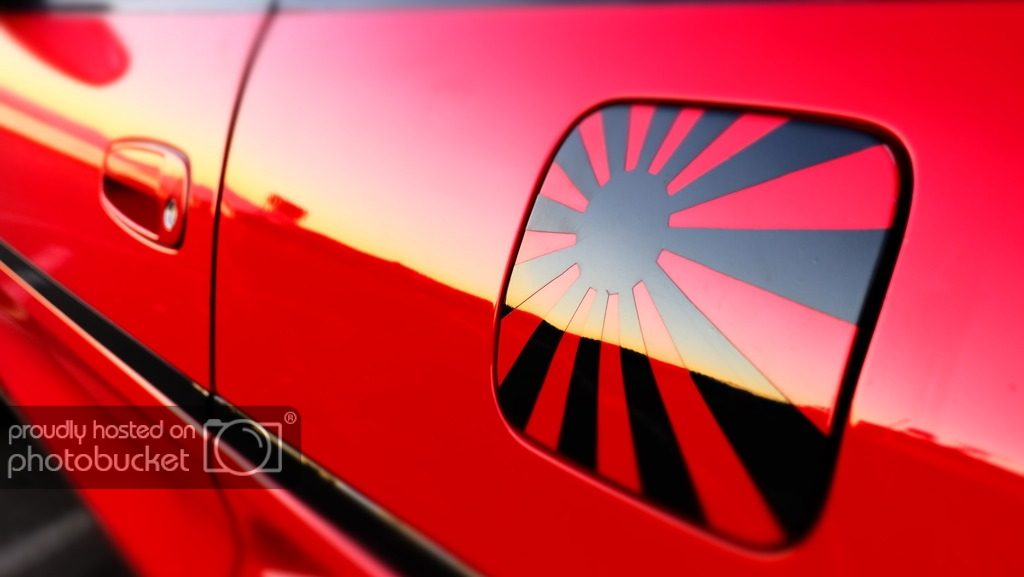
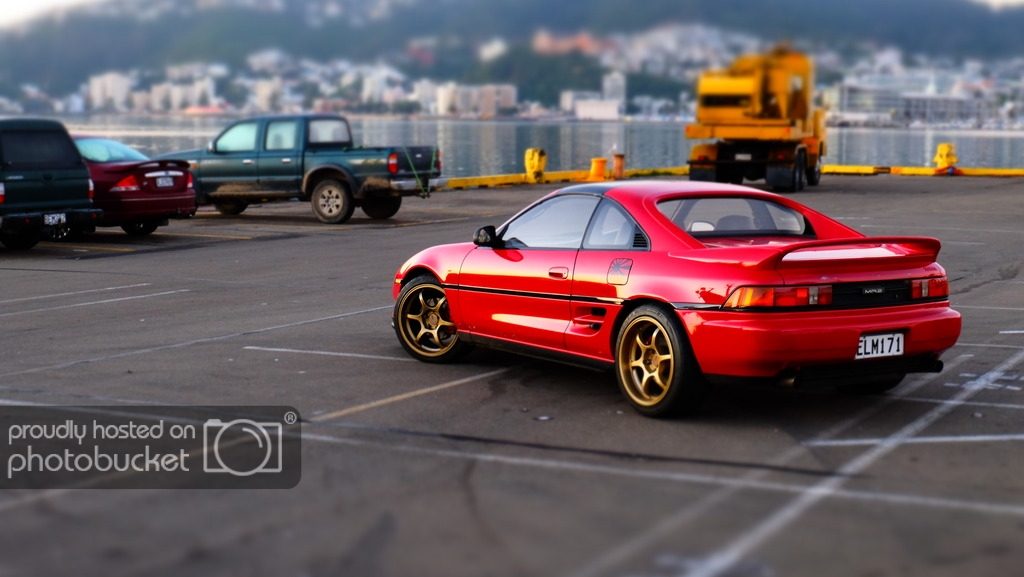
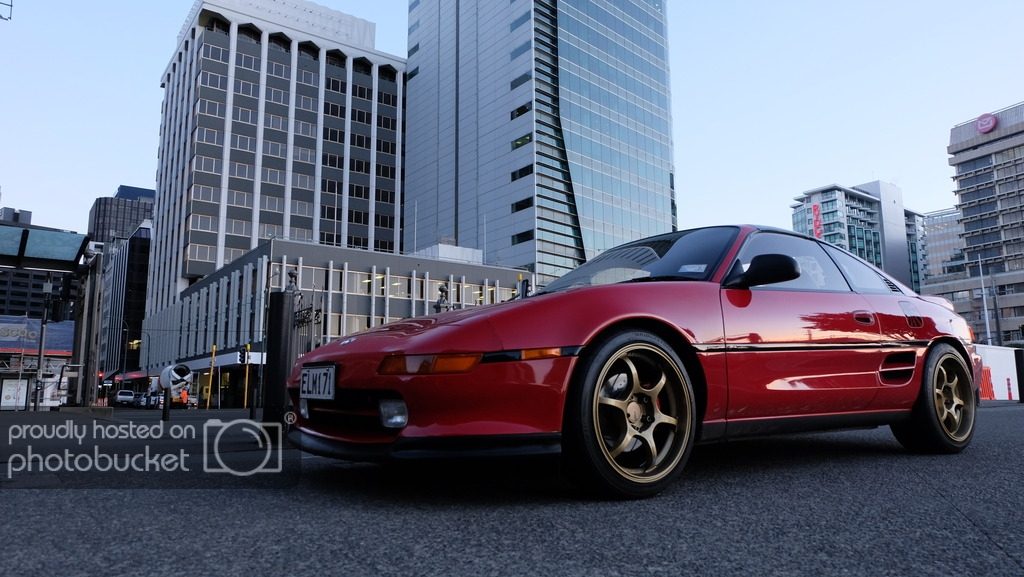
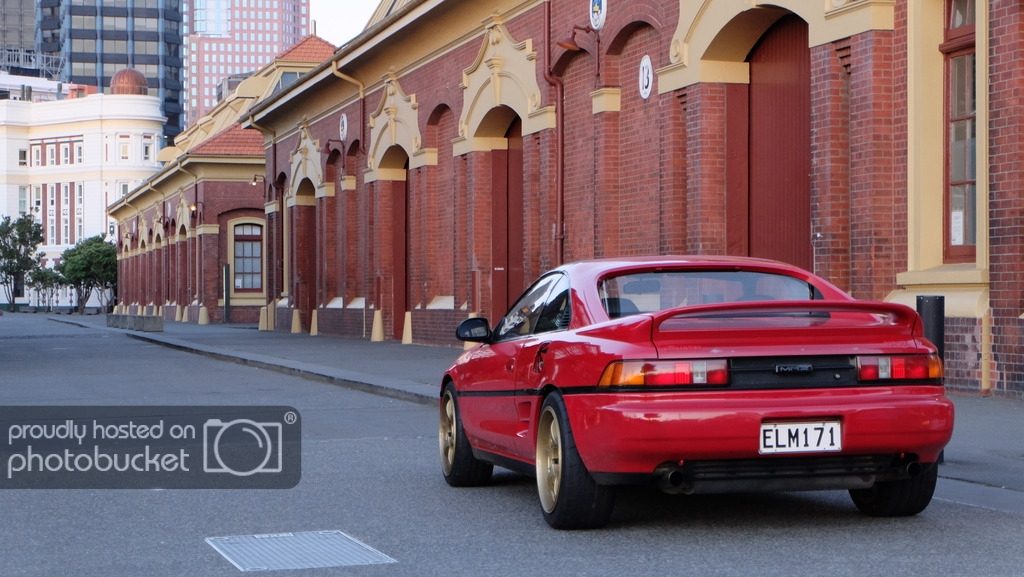

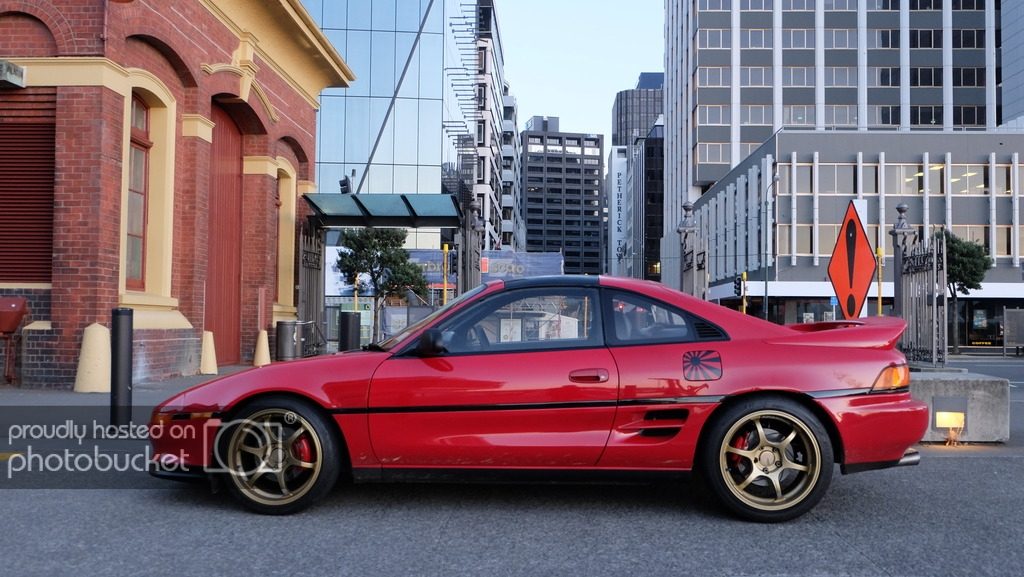
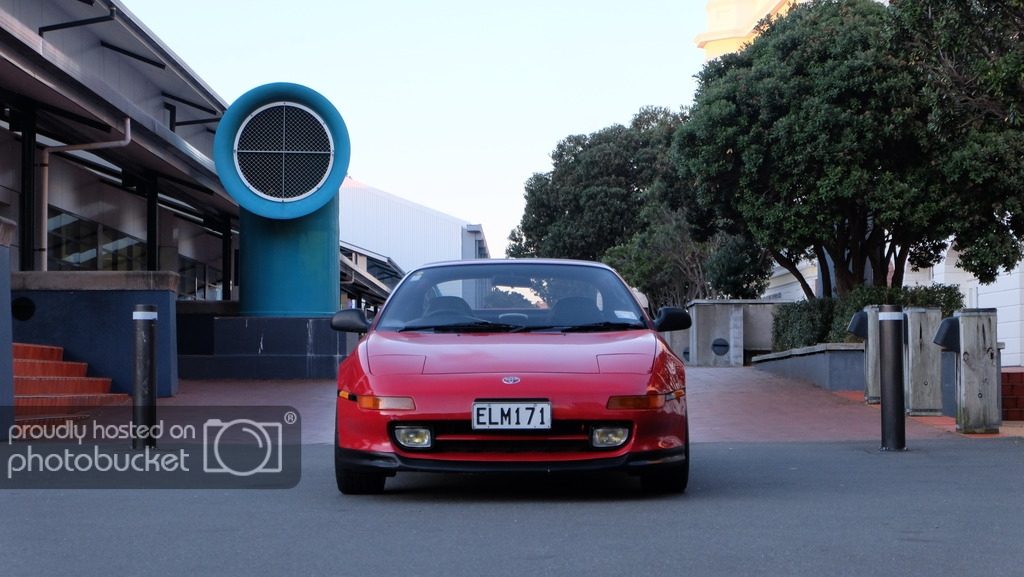
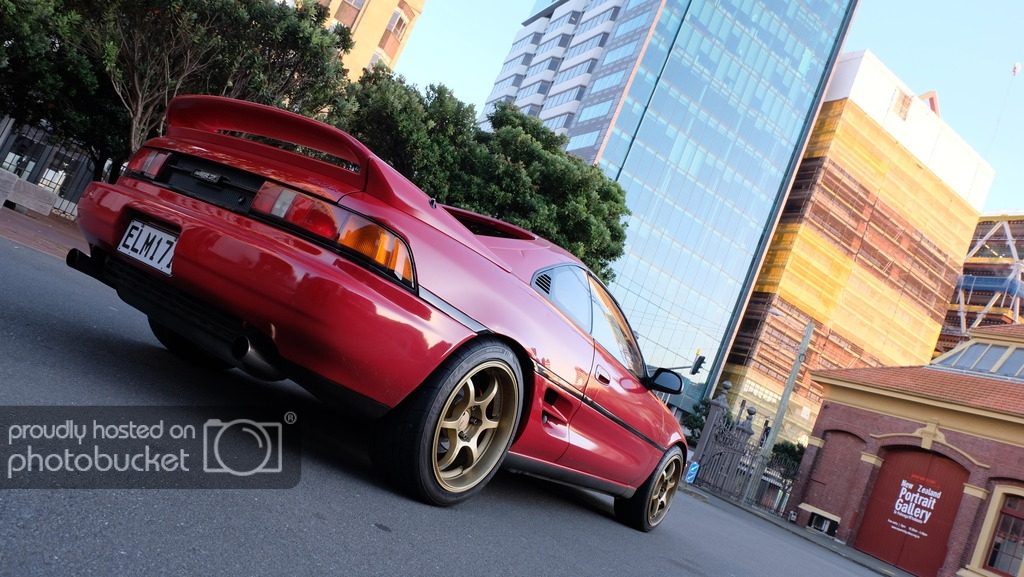
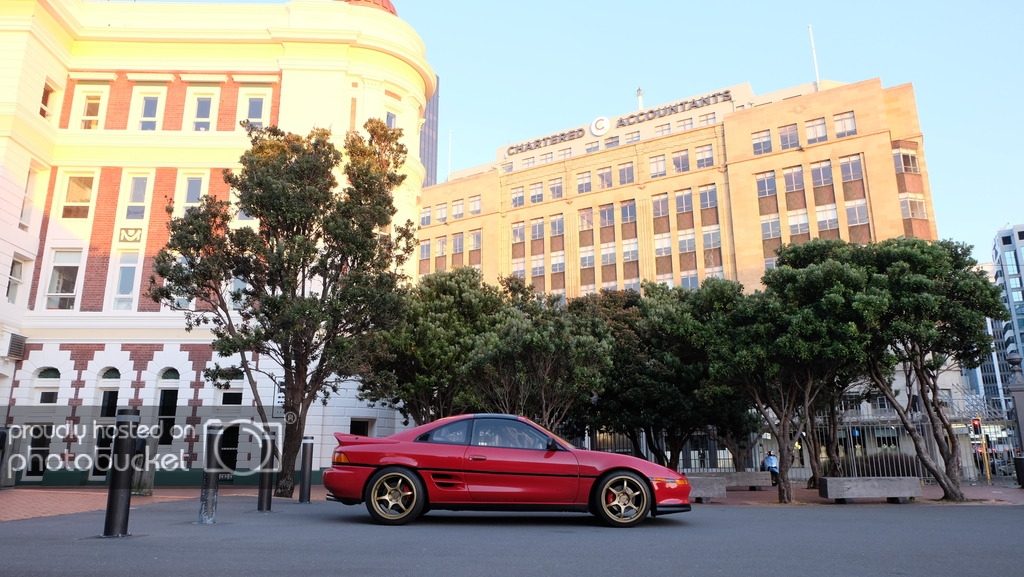
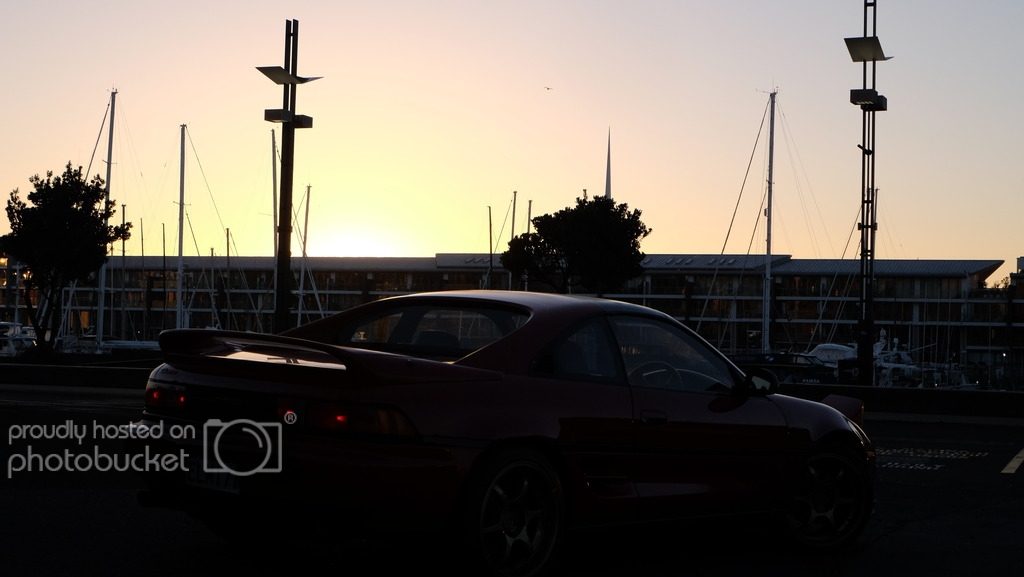
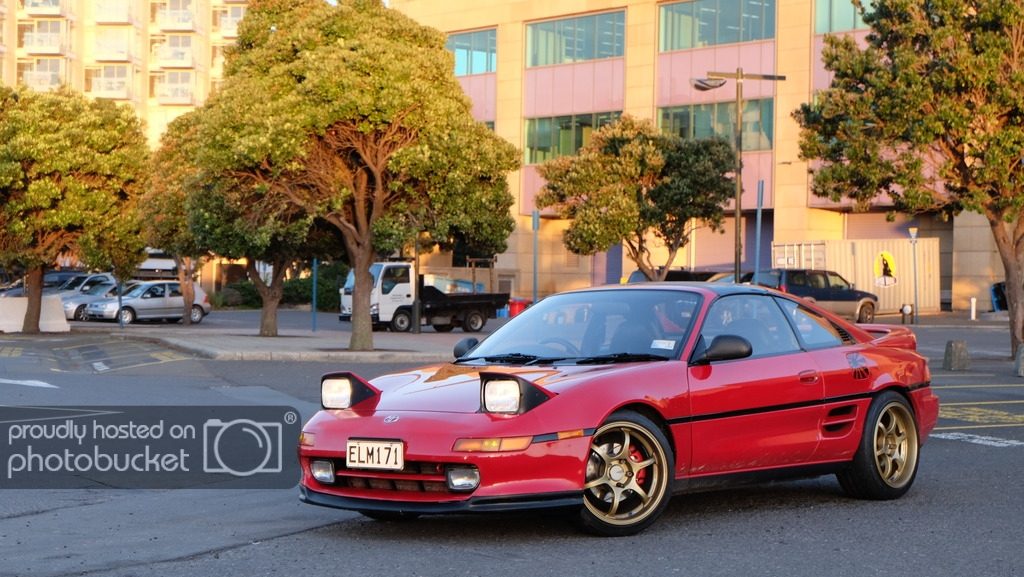
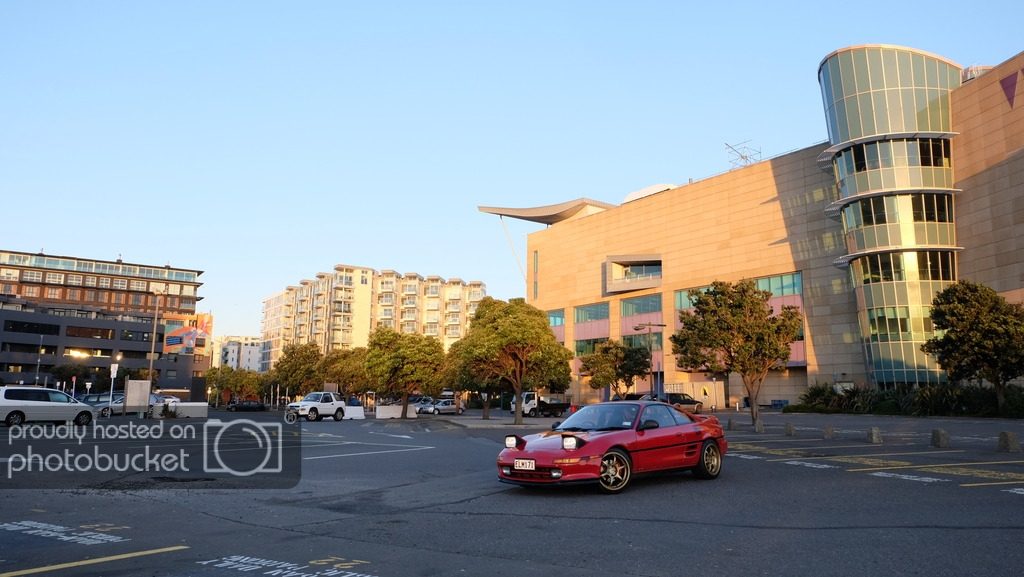






 Can you not see the dirt spattered up the left side? It's far from clean after driving it 400km. It's probably going to get a wash today.
Can you not see the dirt spattered up the left side? It's far from clean after driving it 400km. It's probably going to get a wash today.